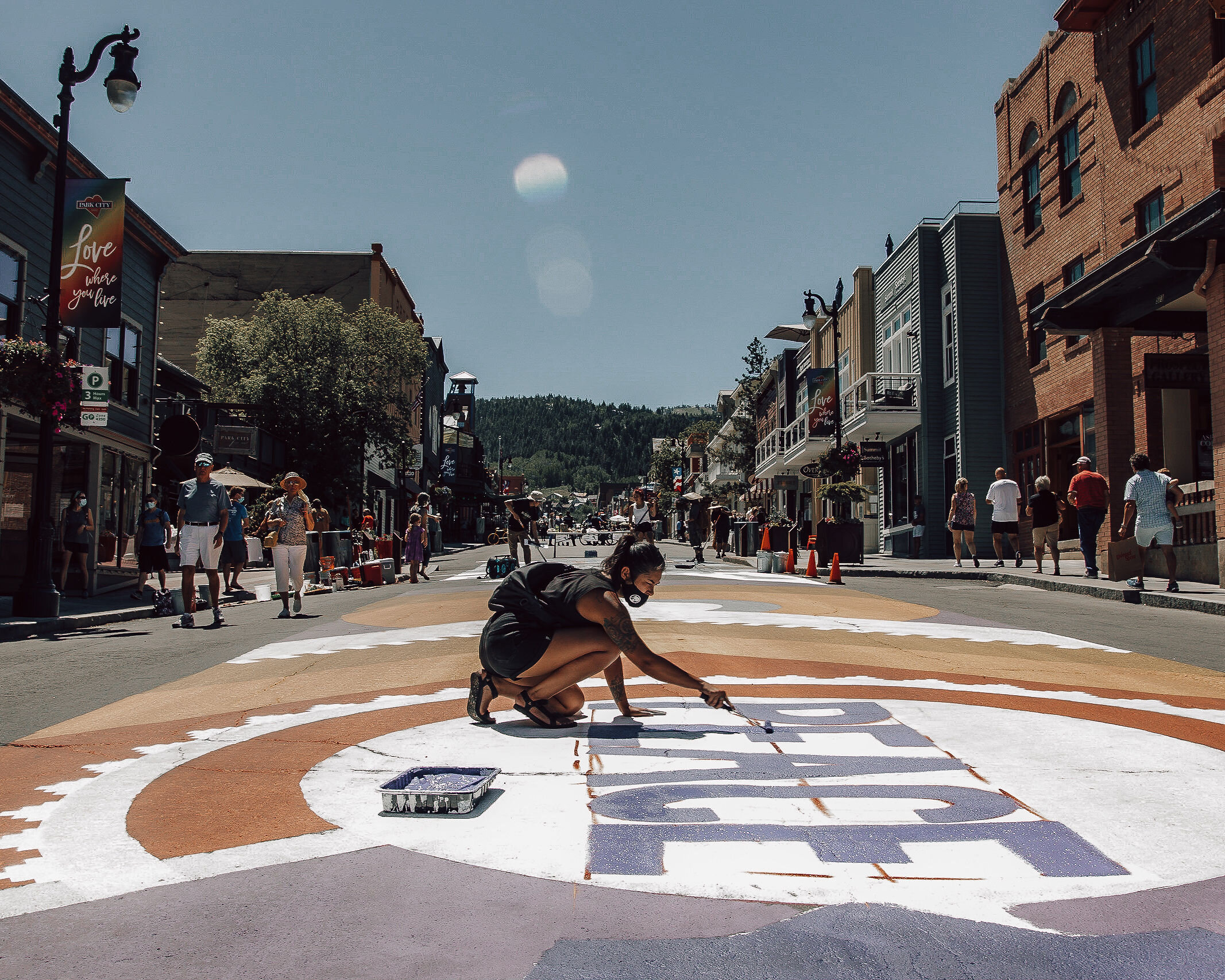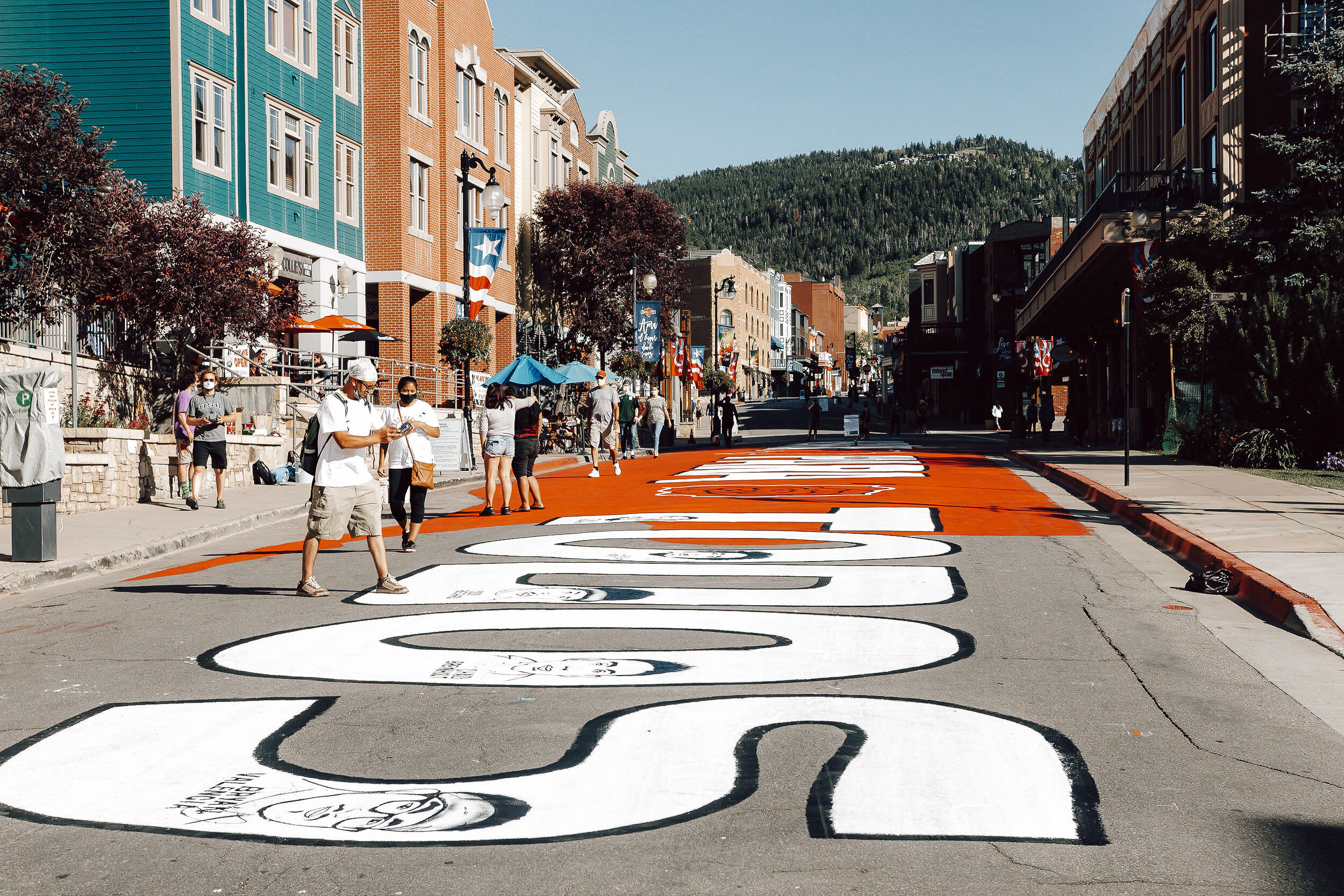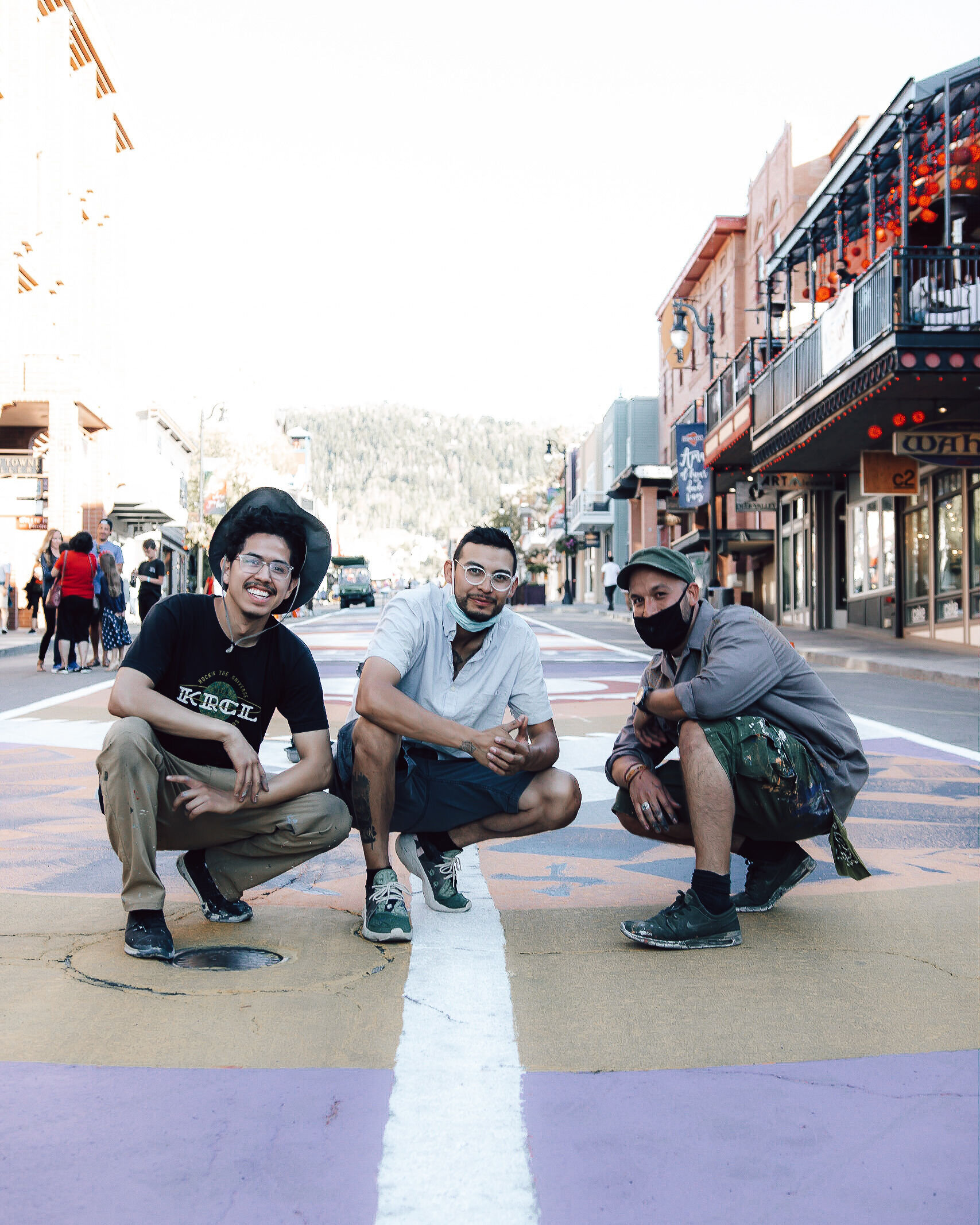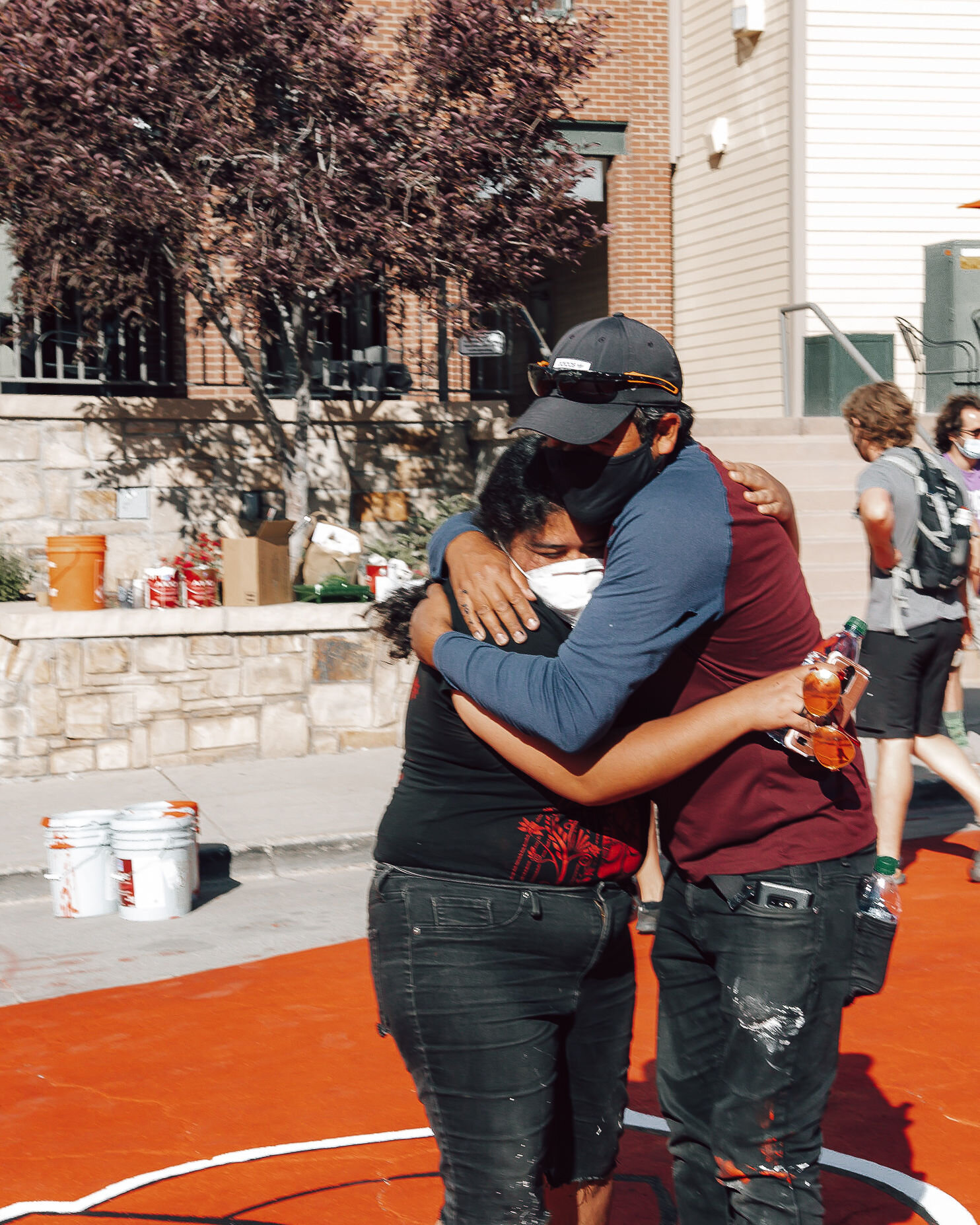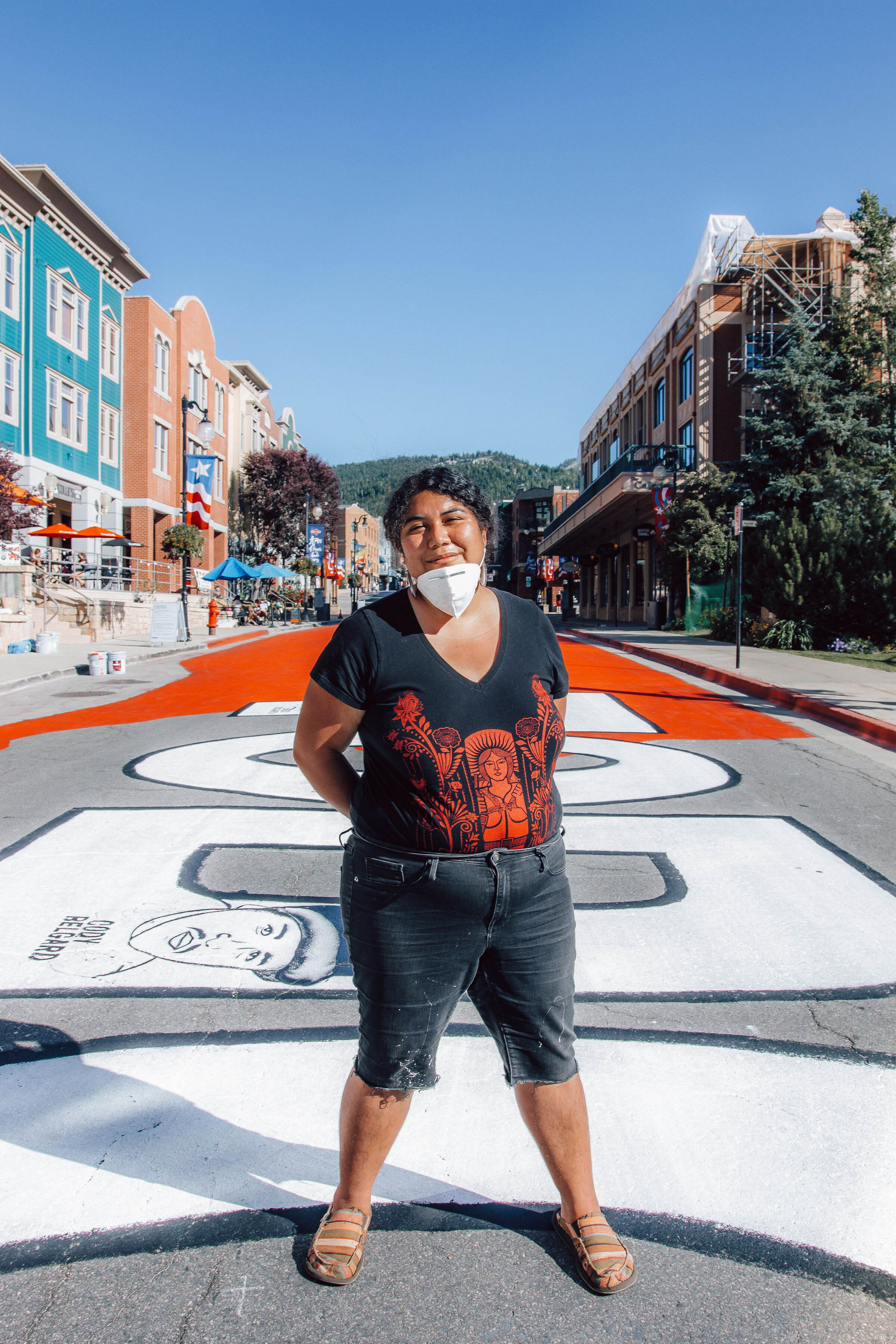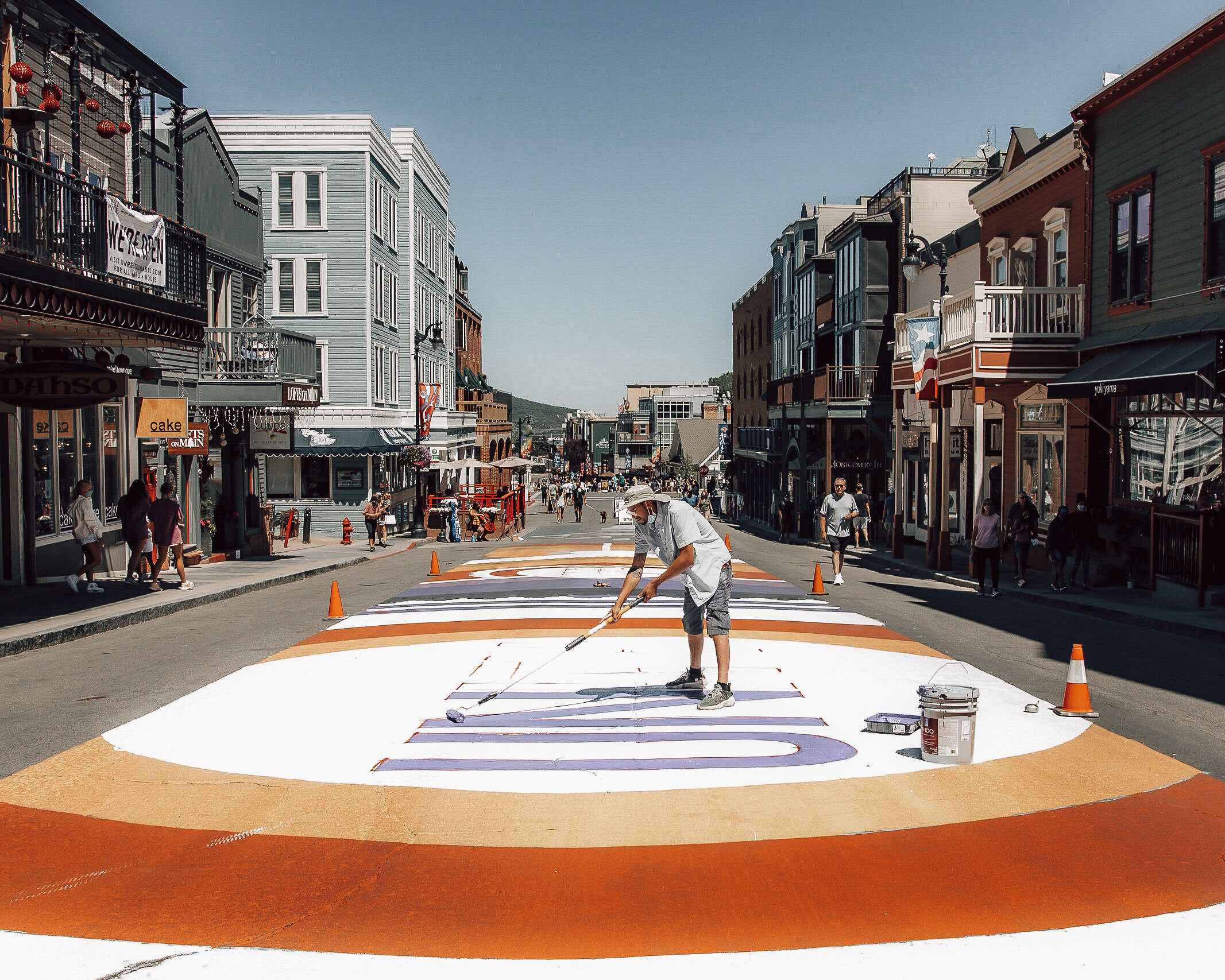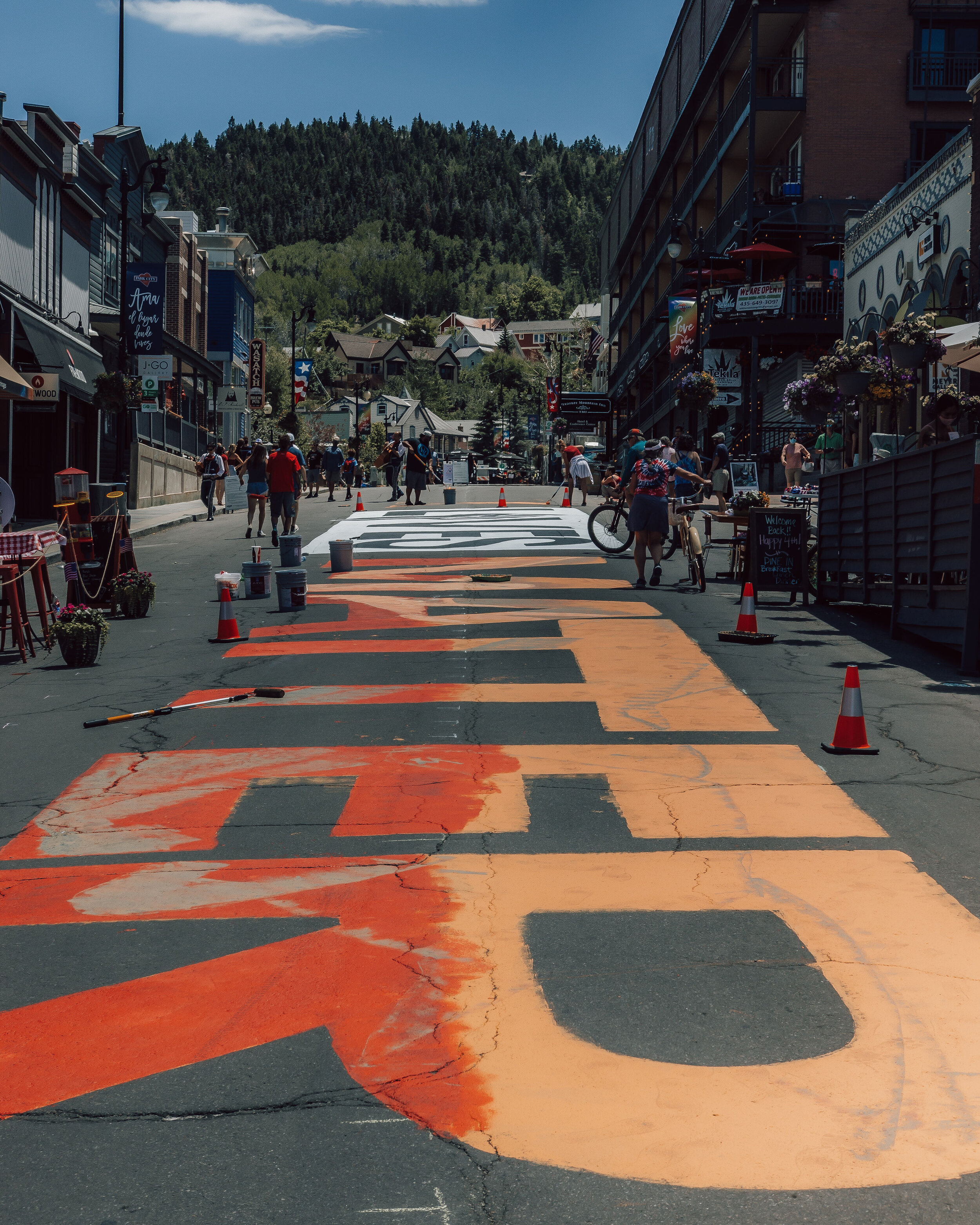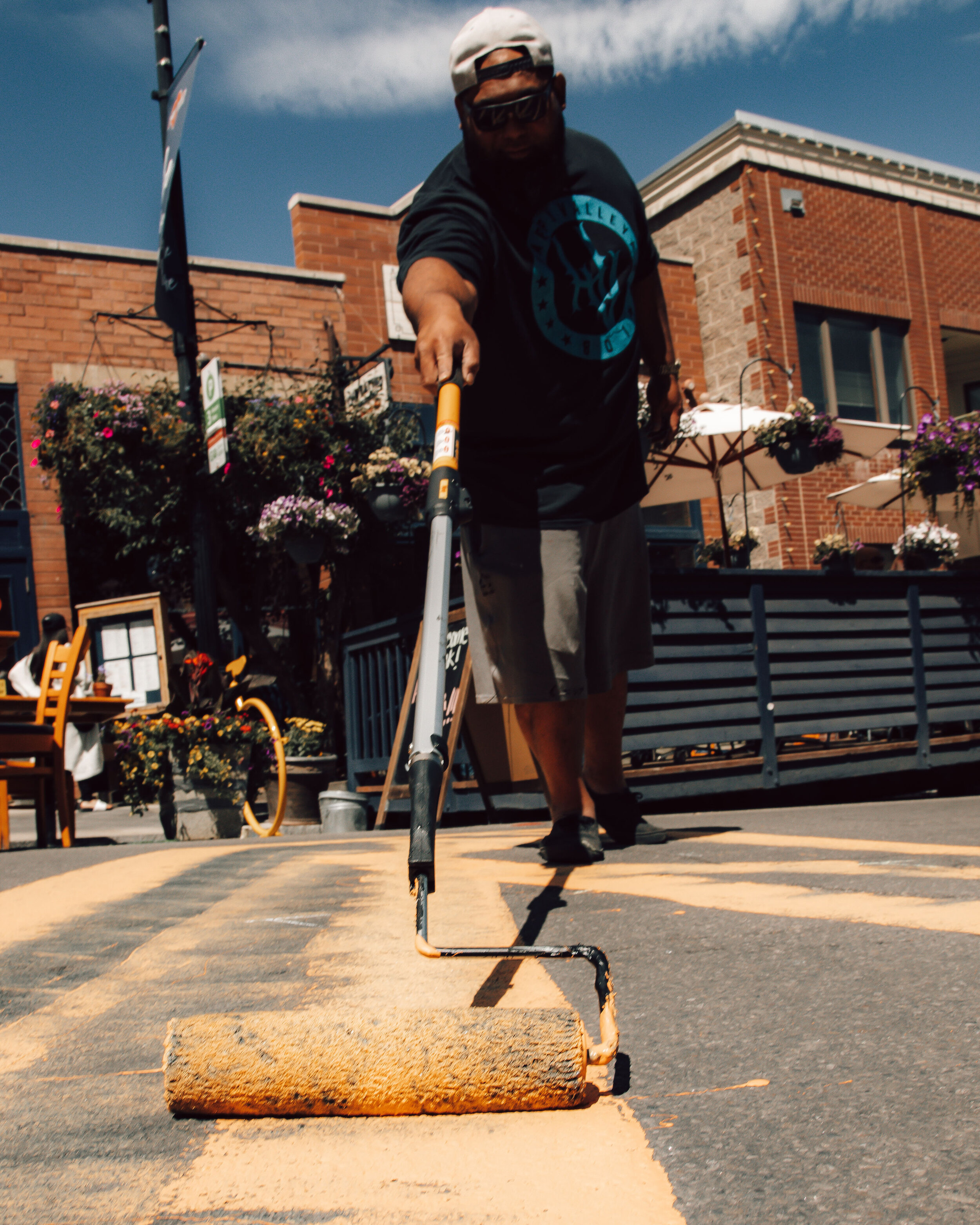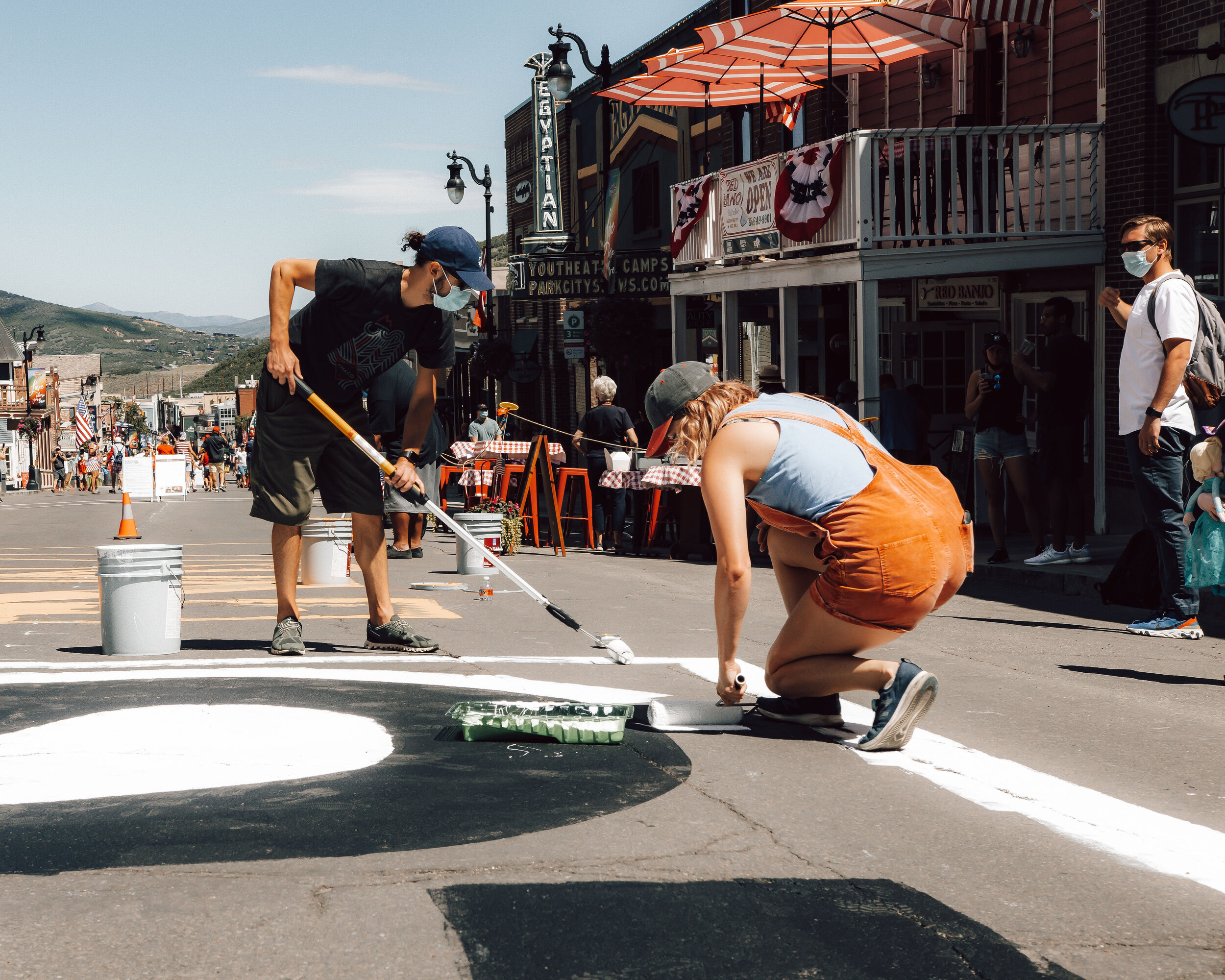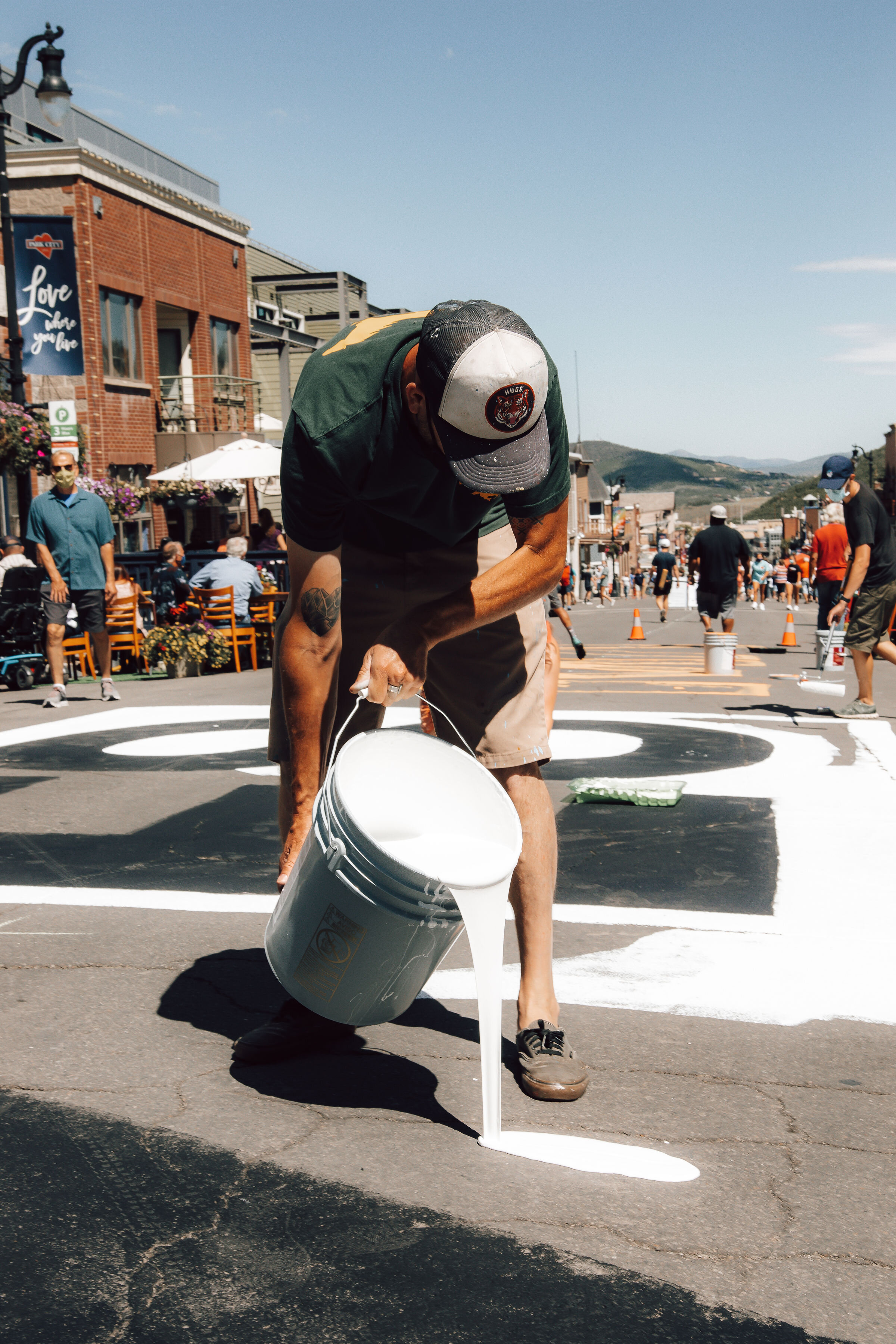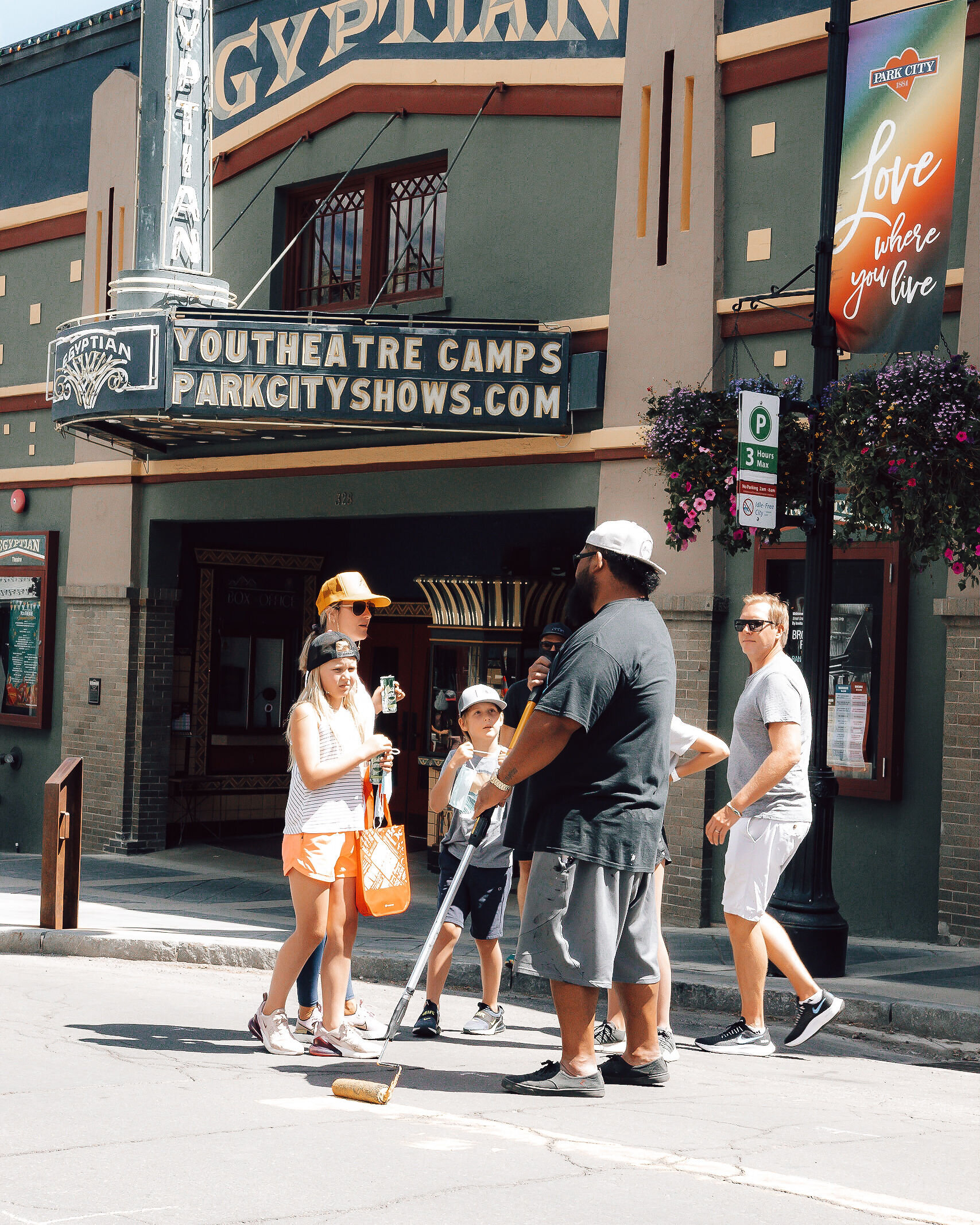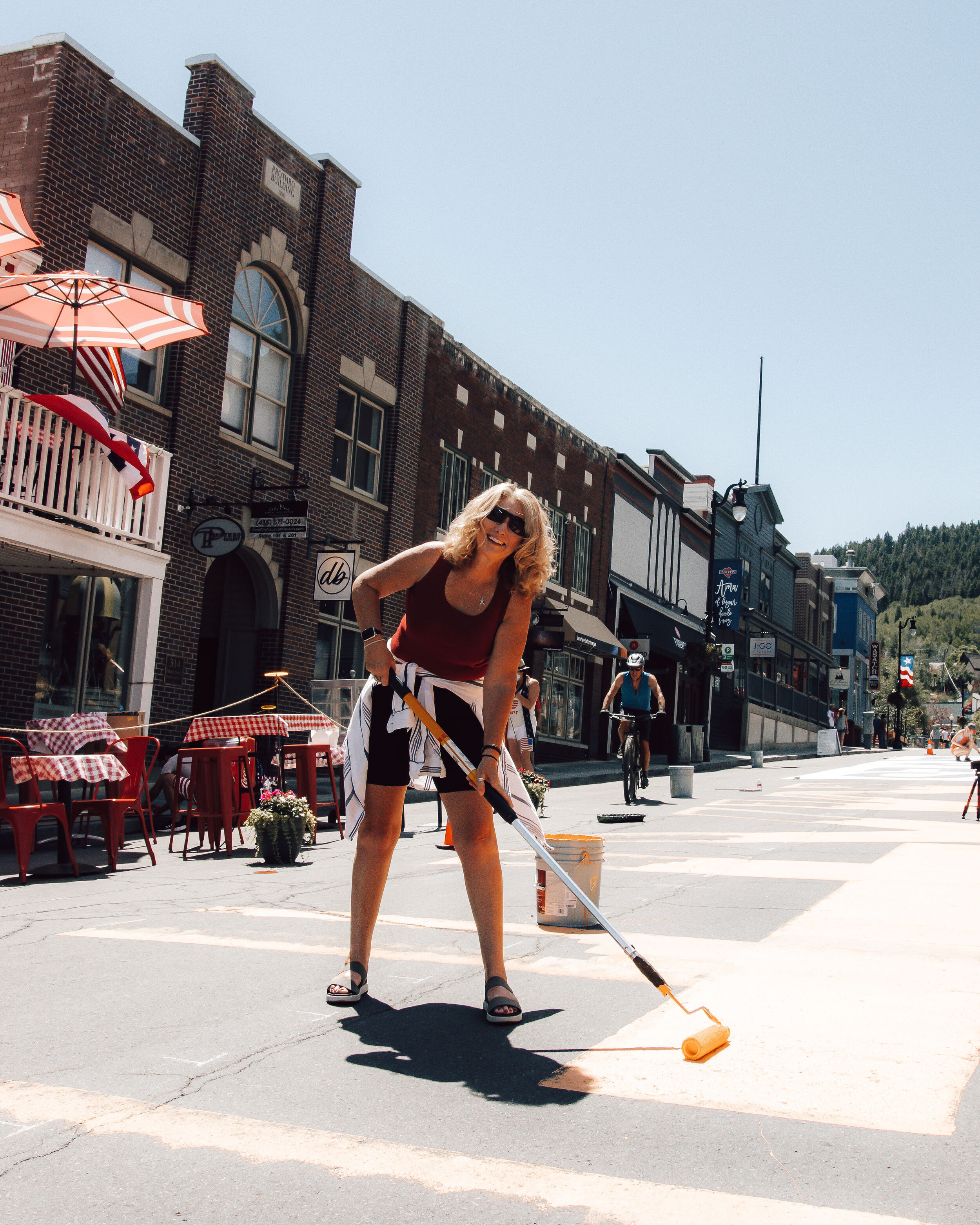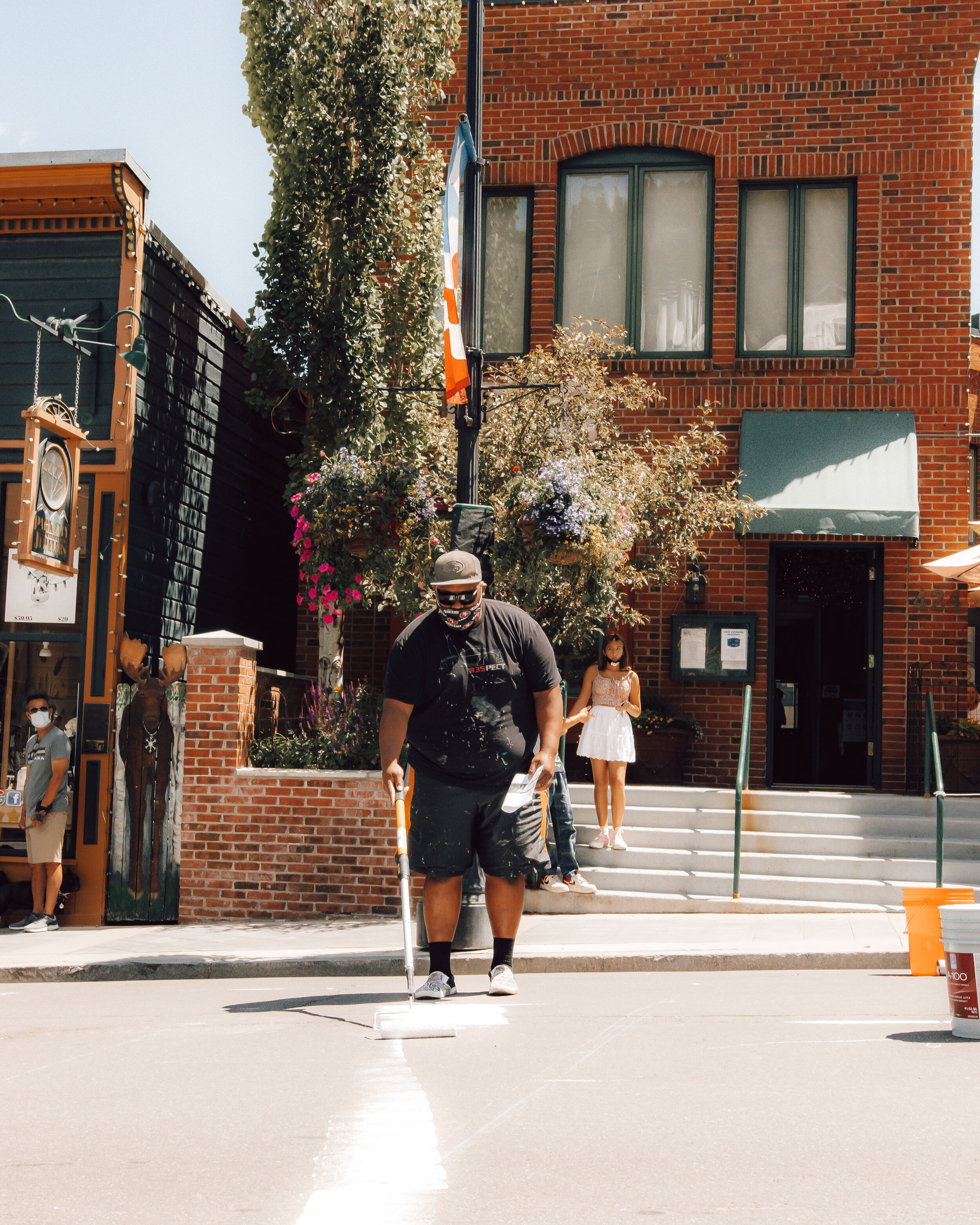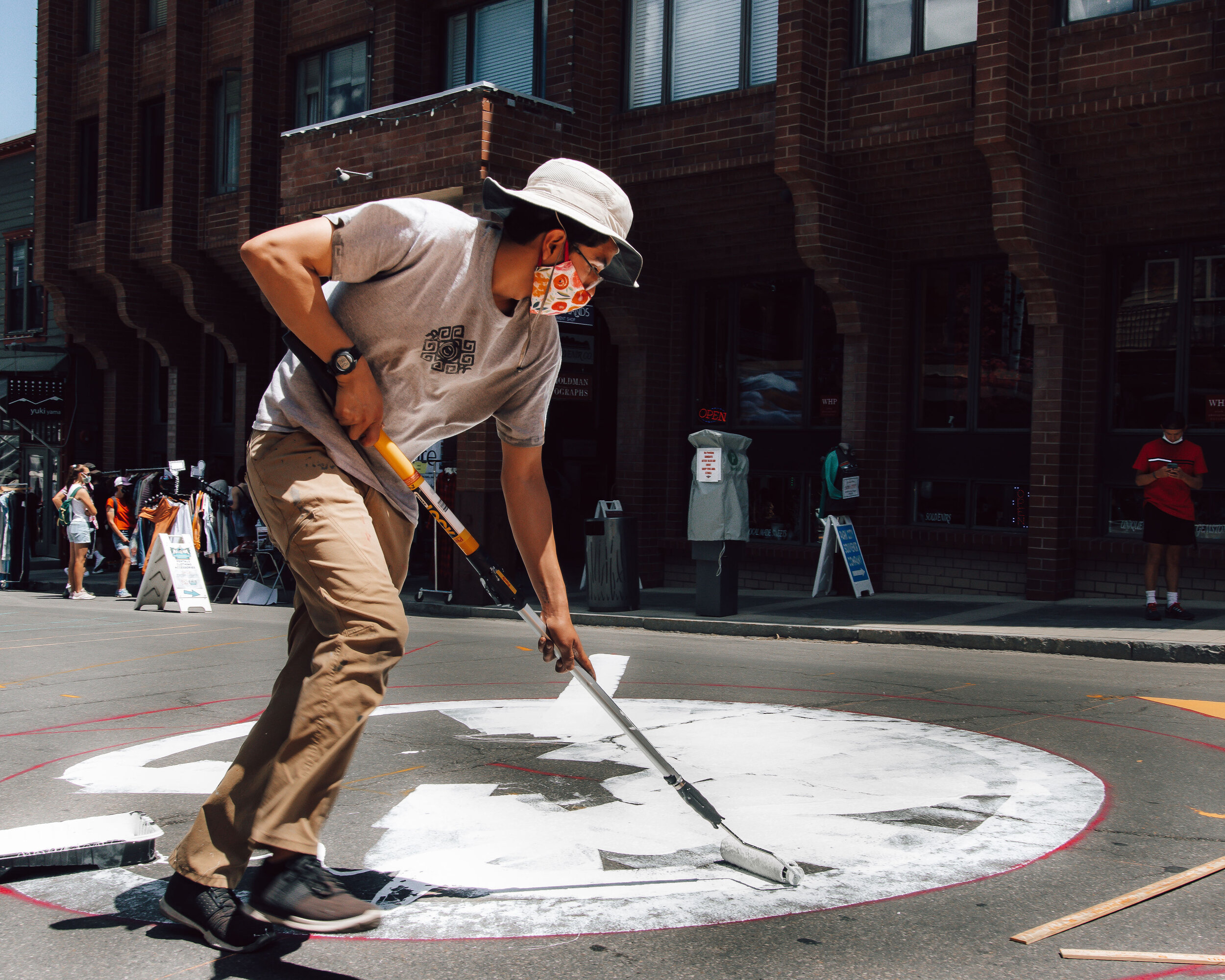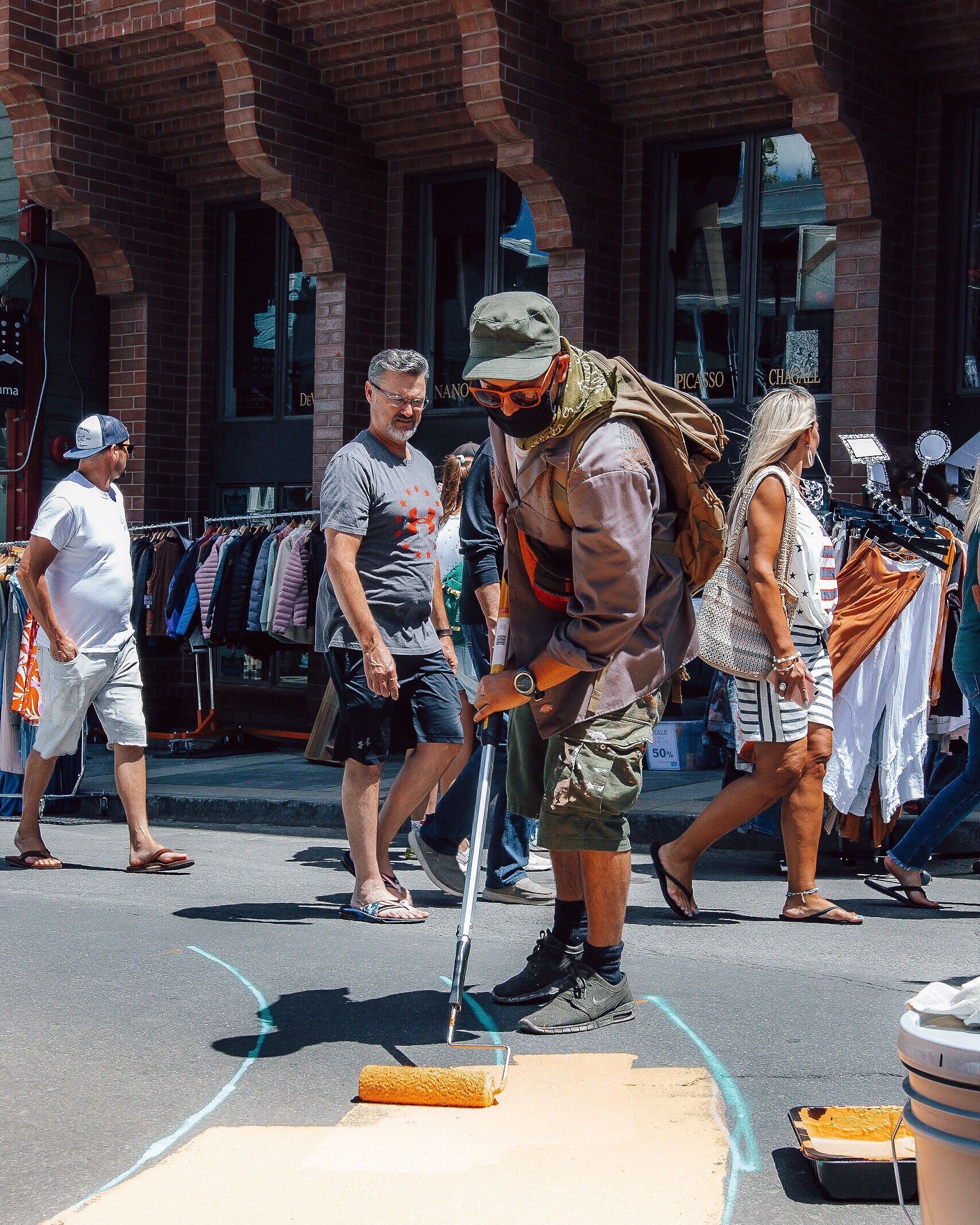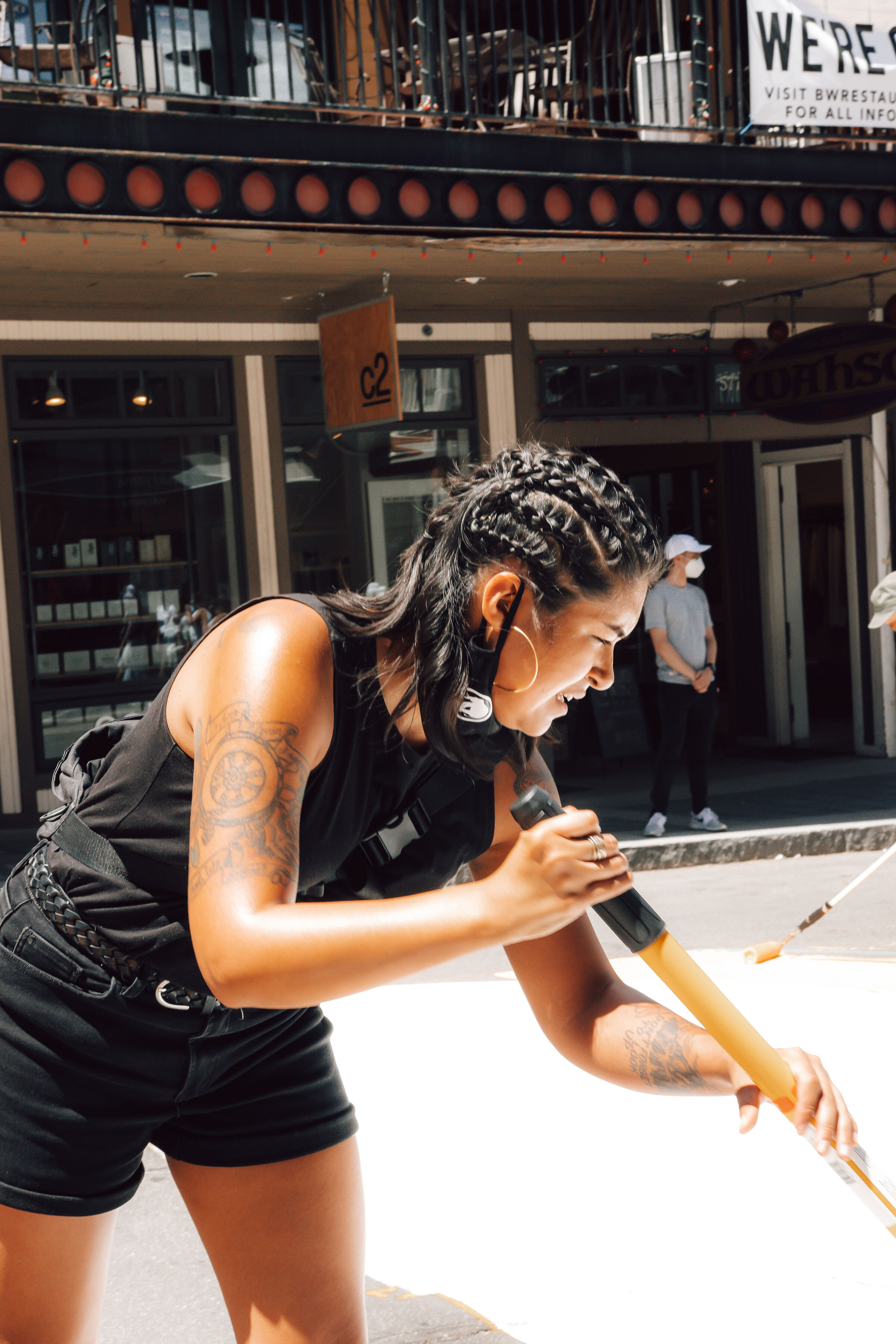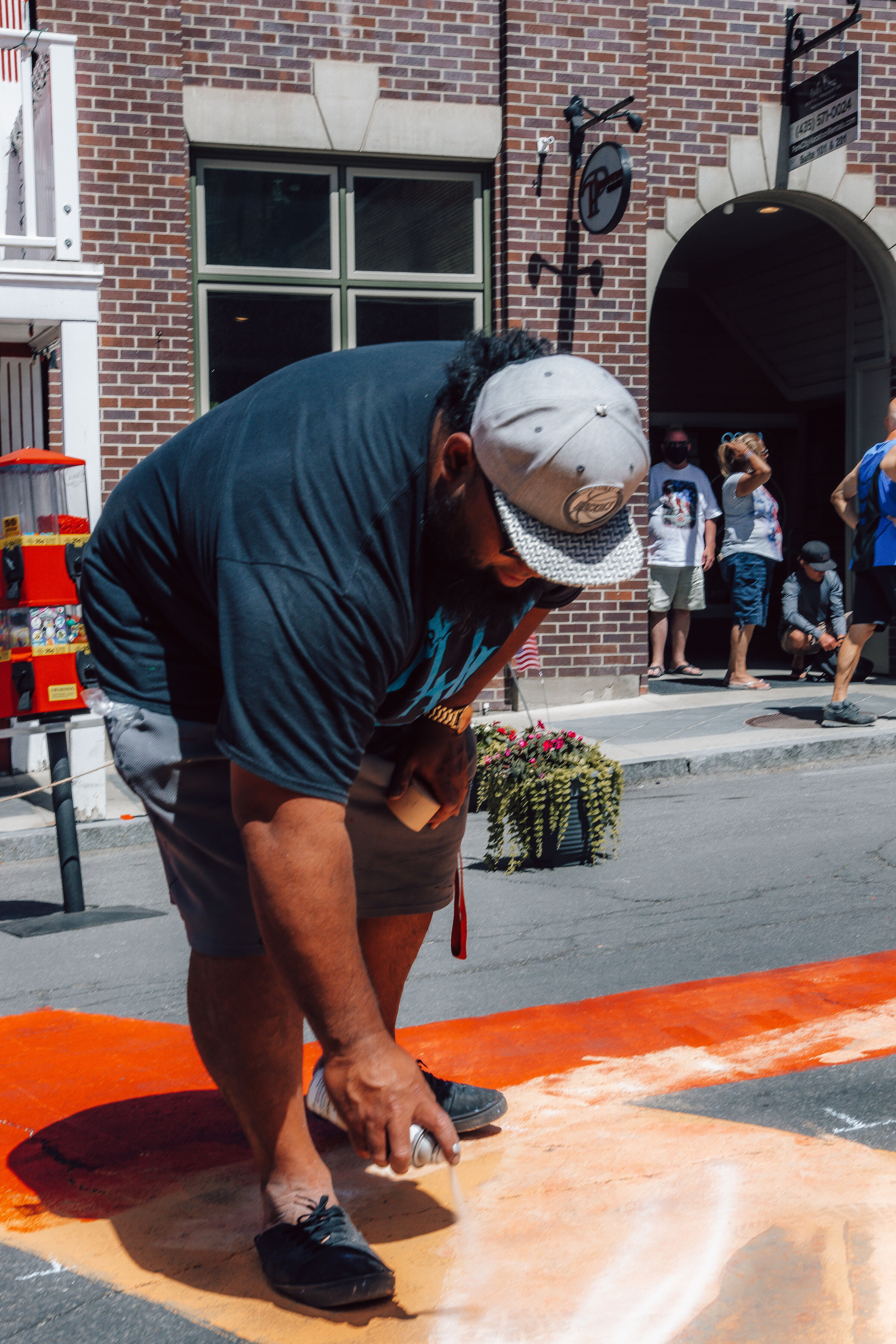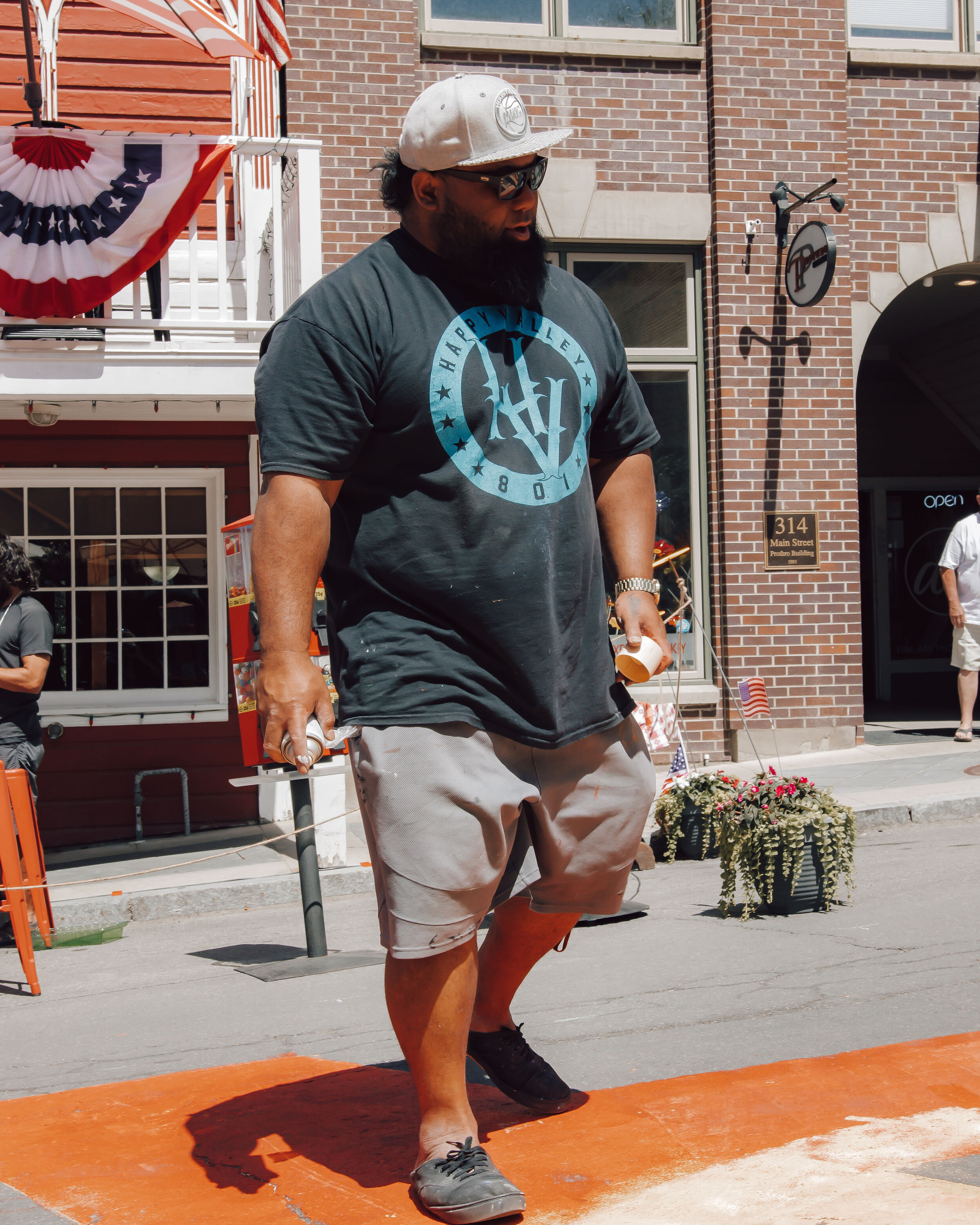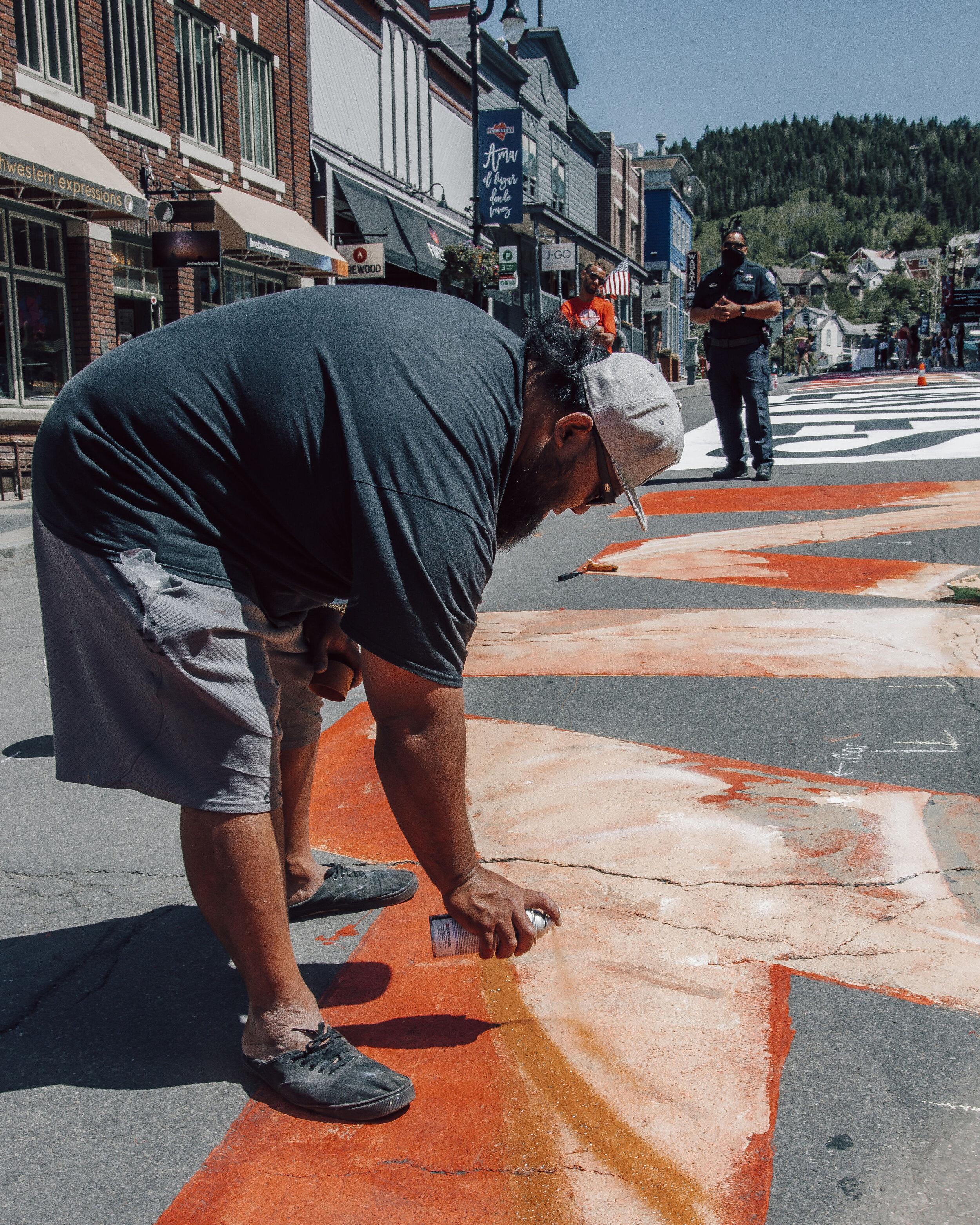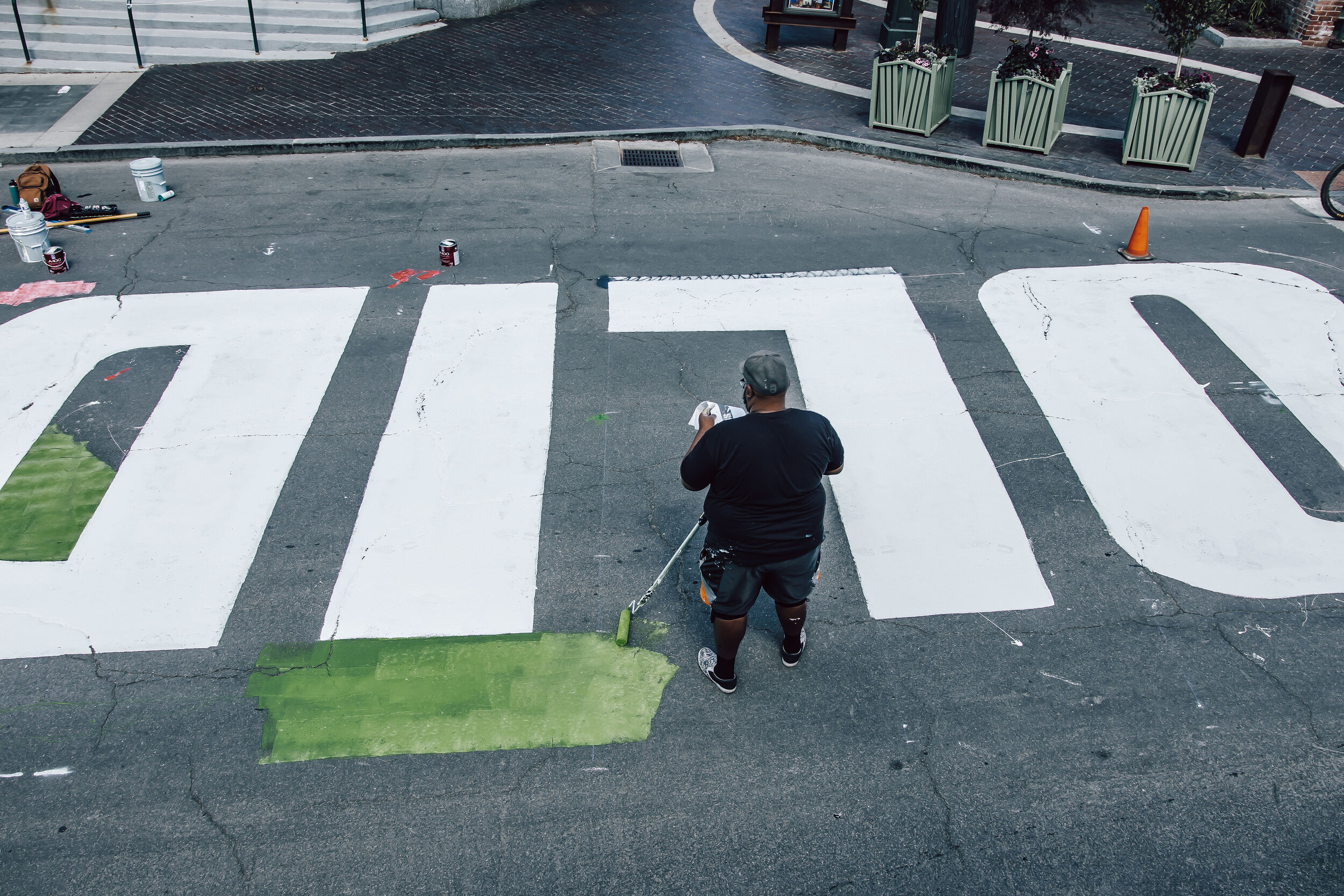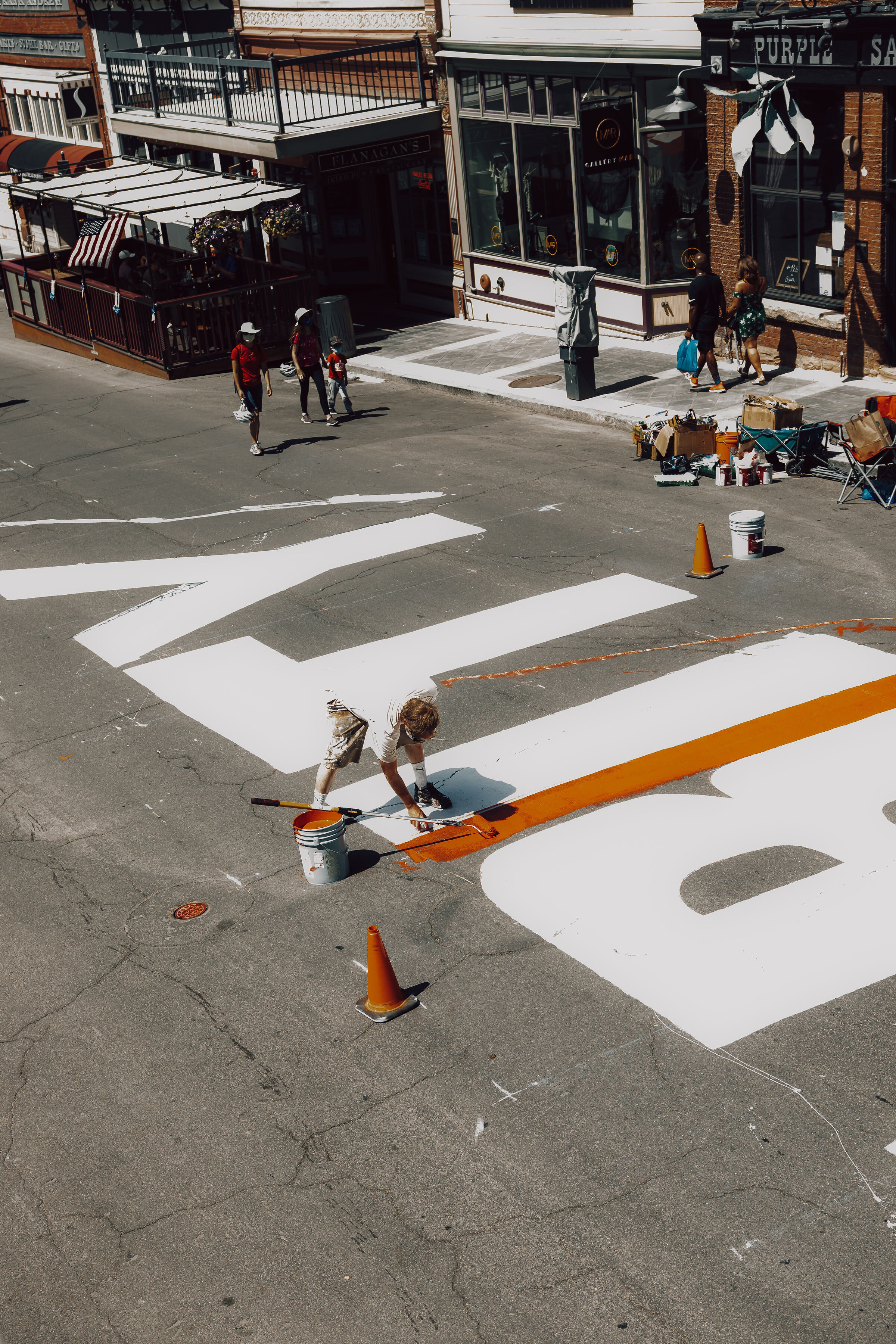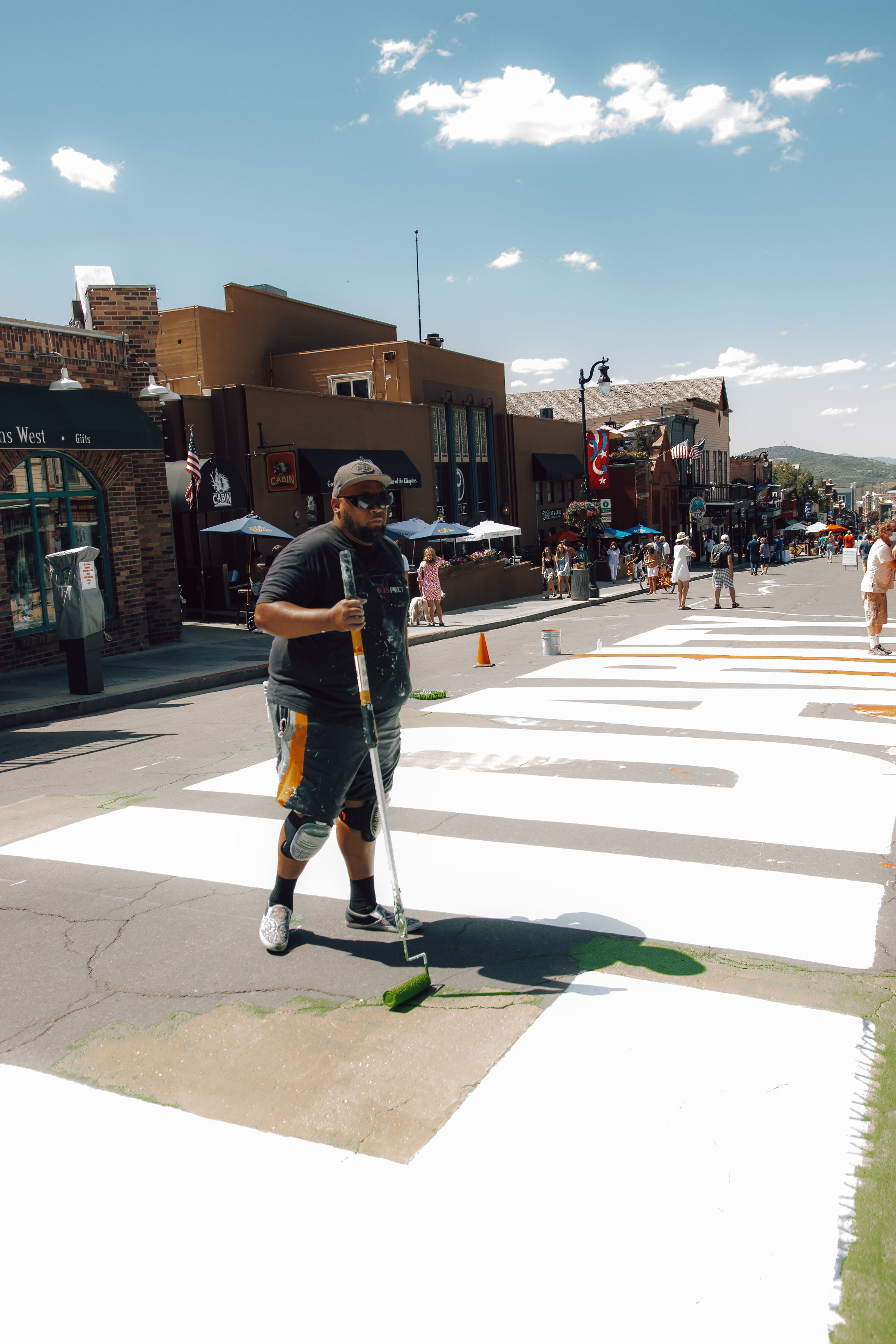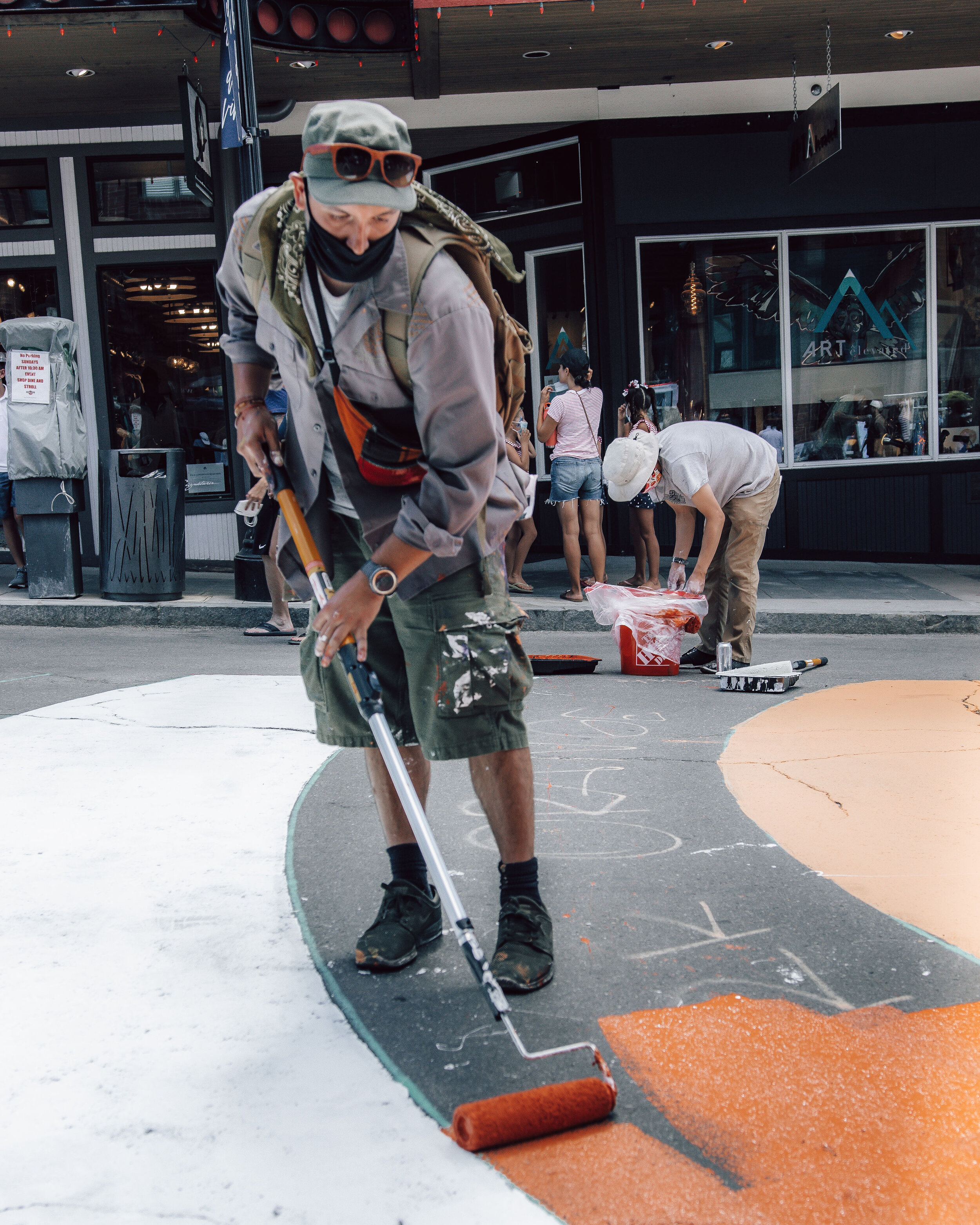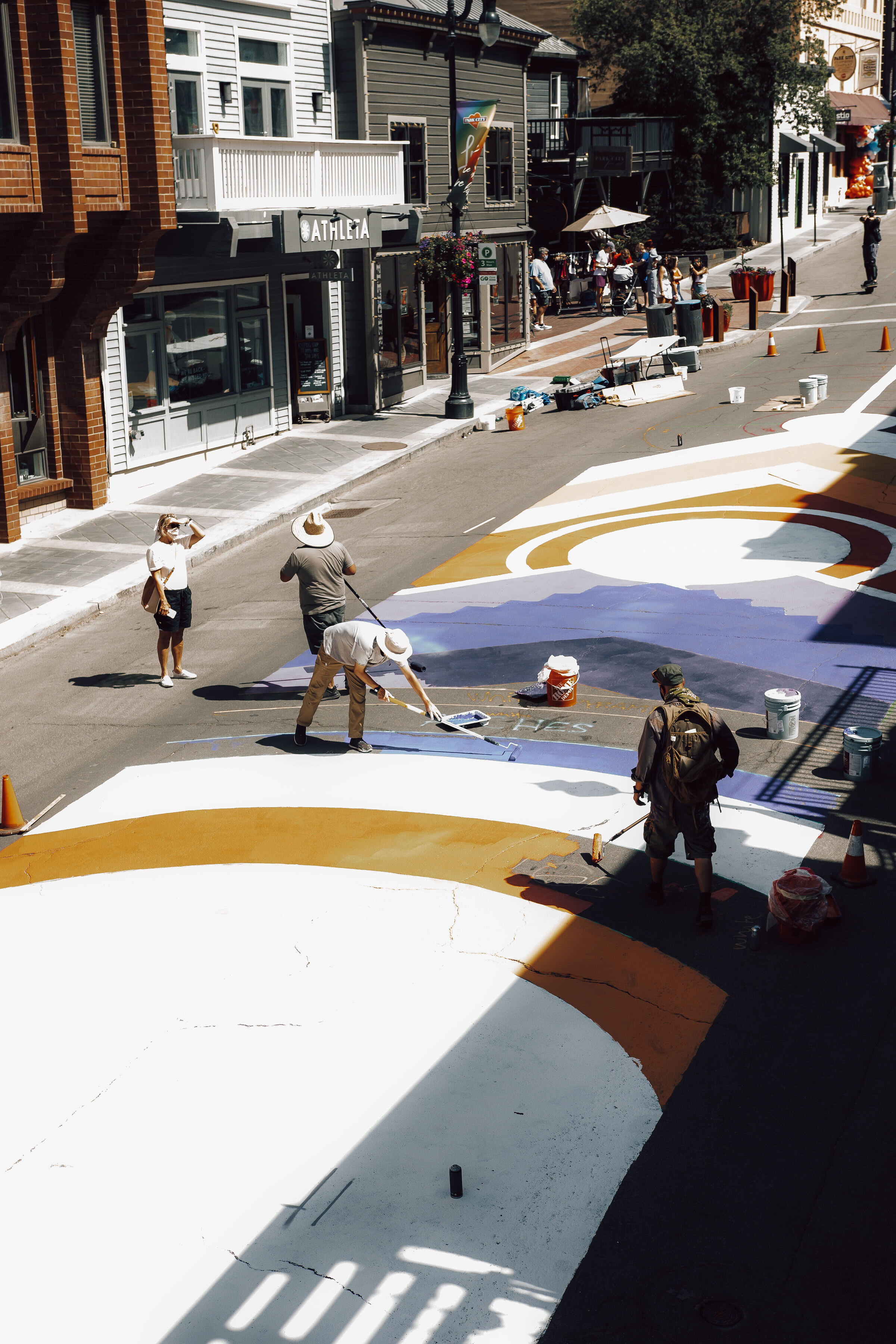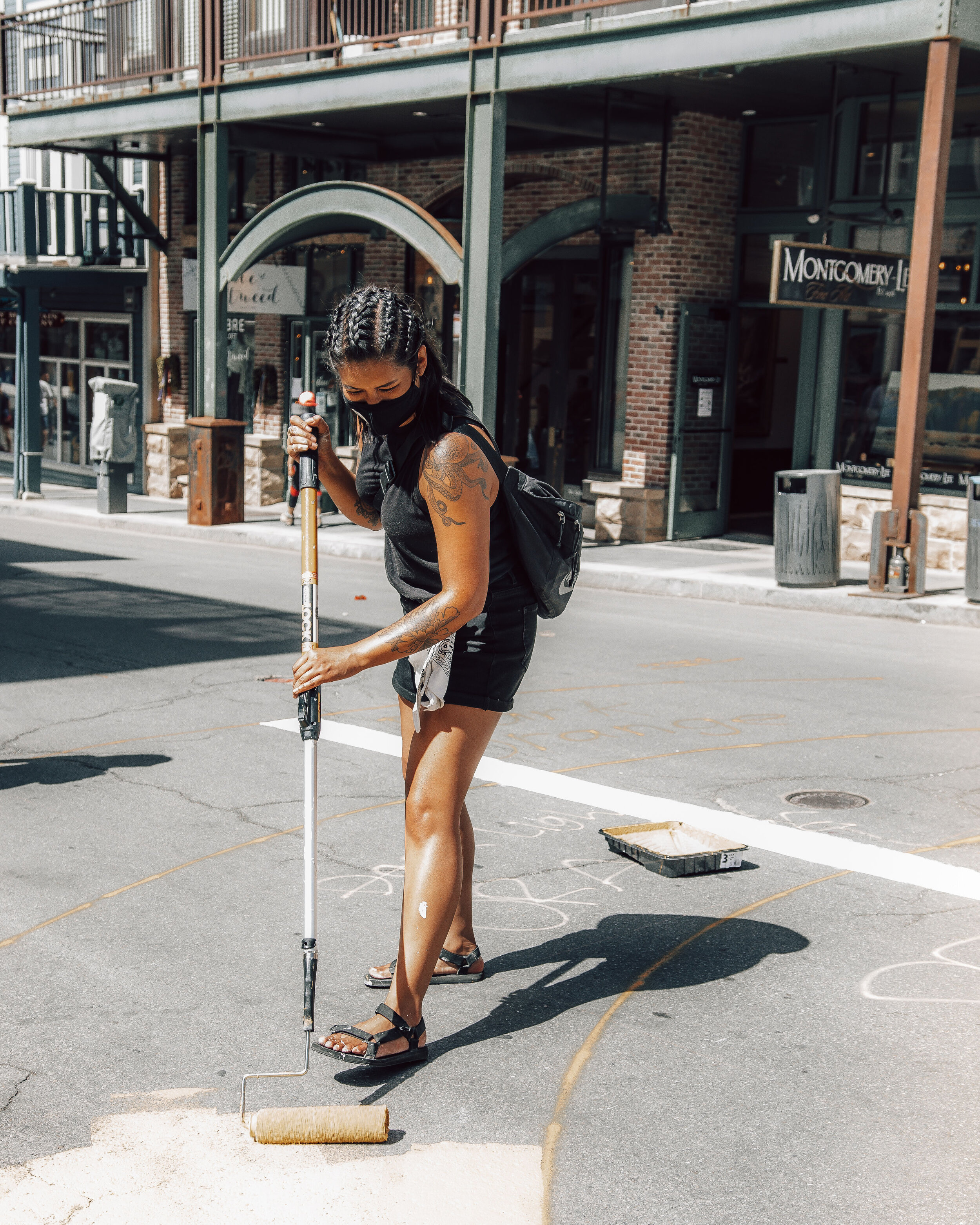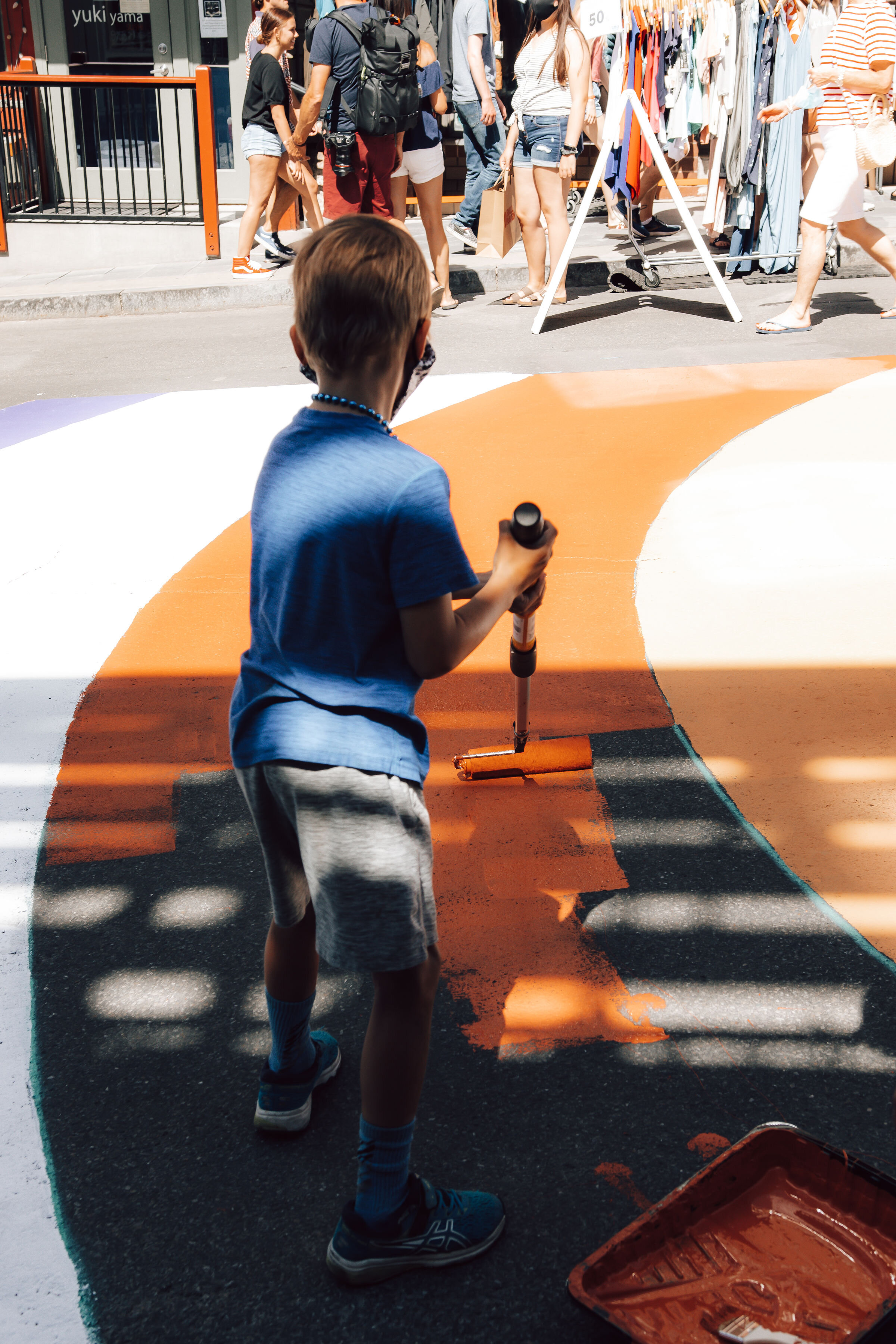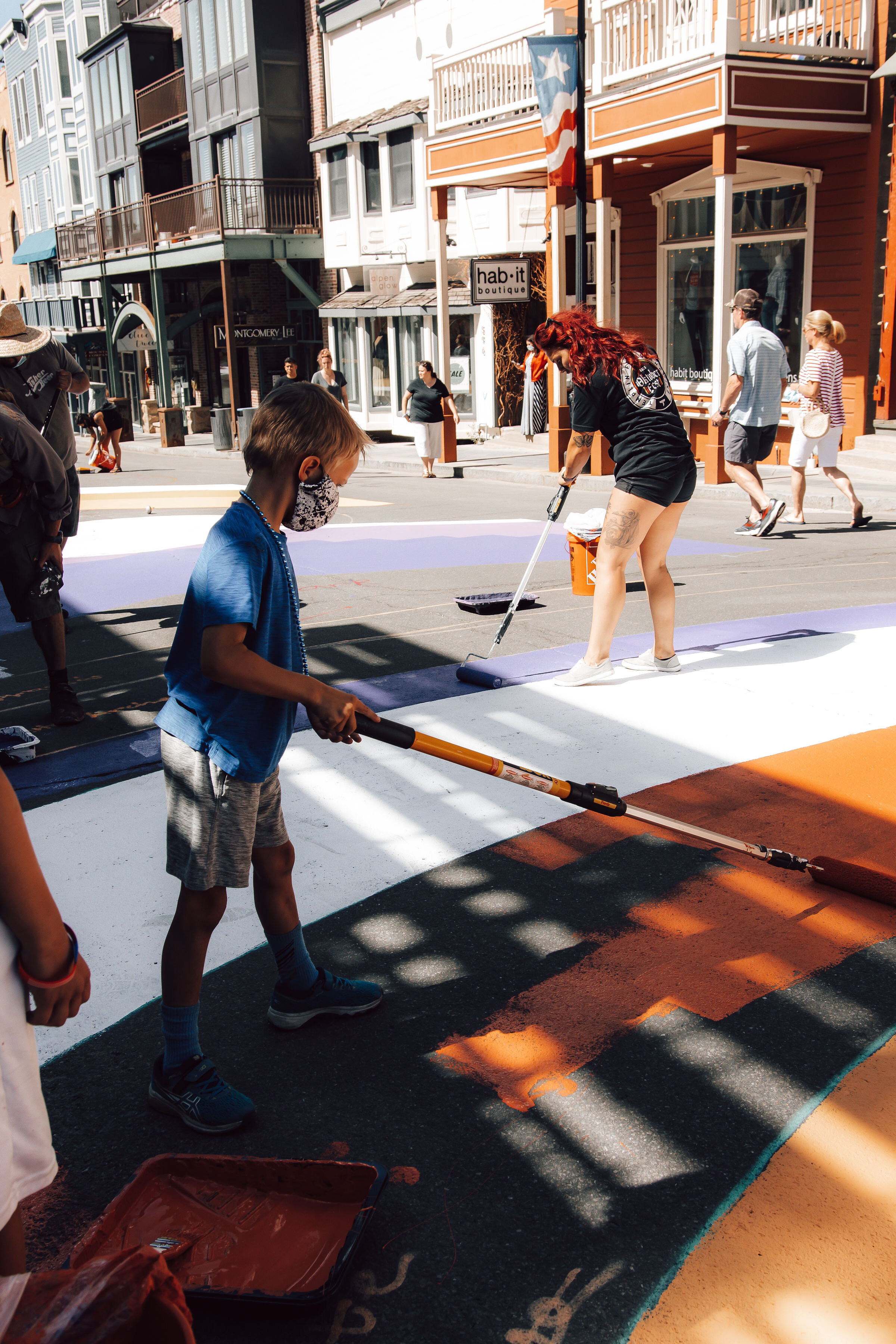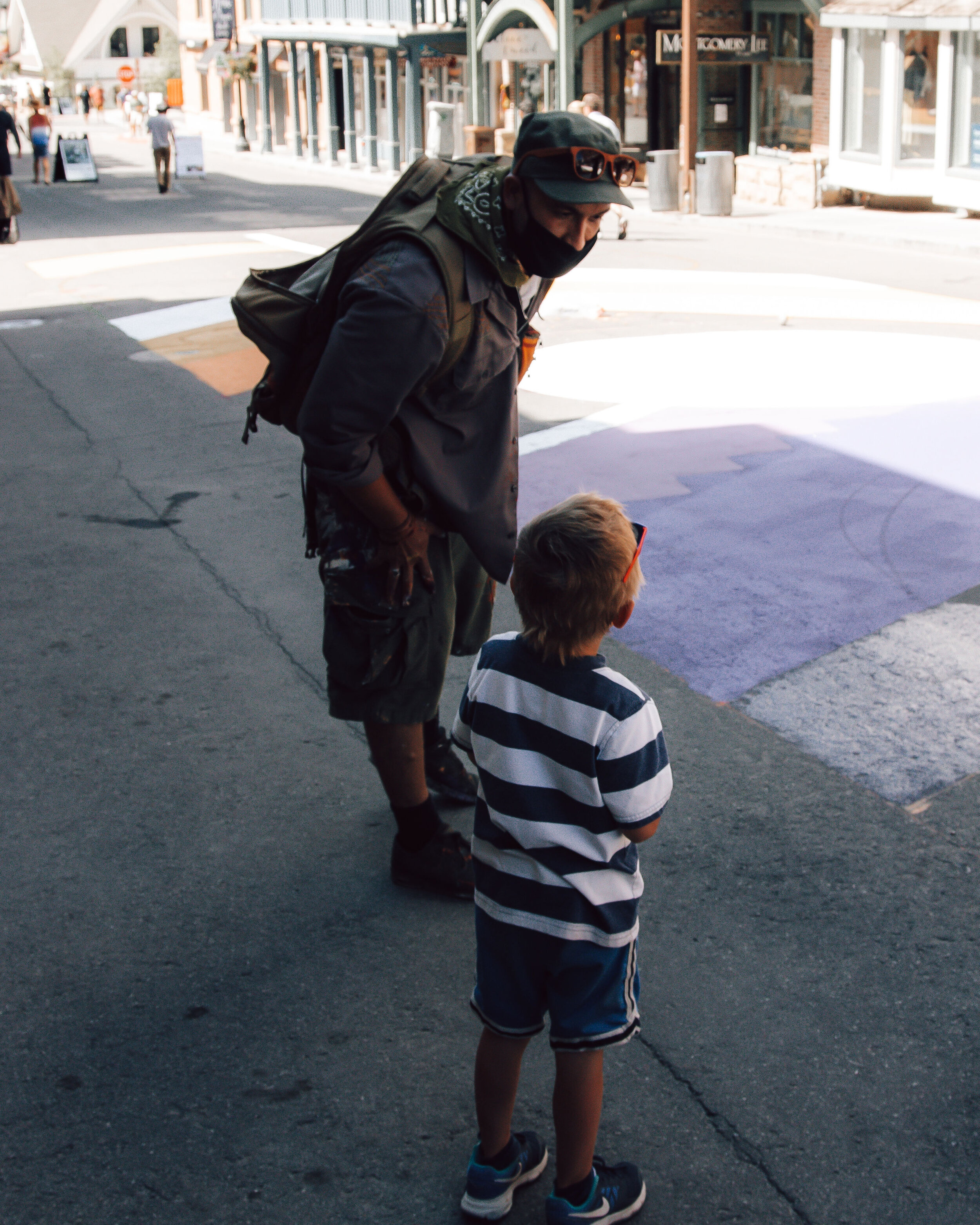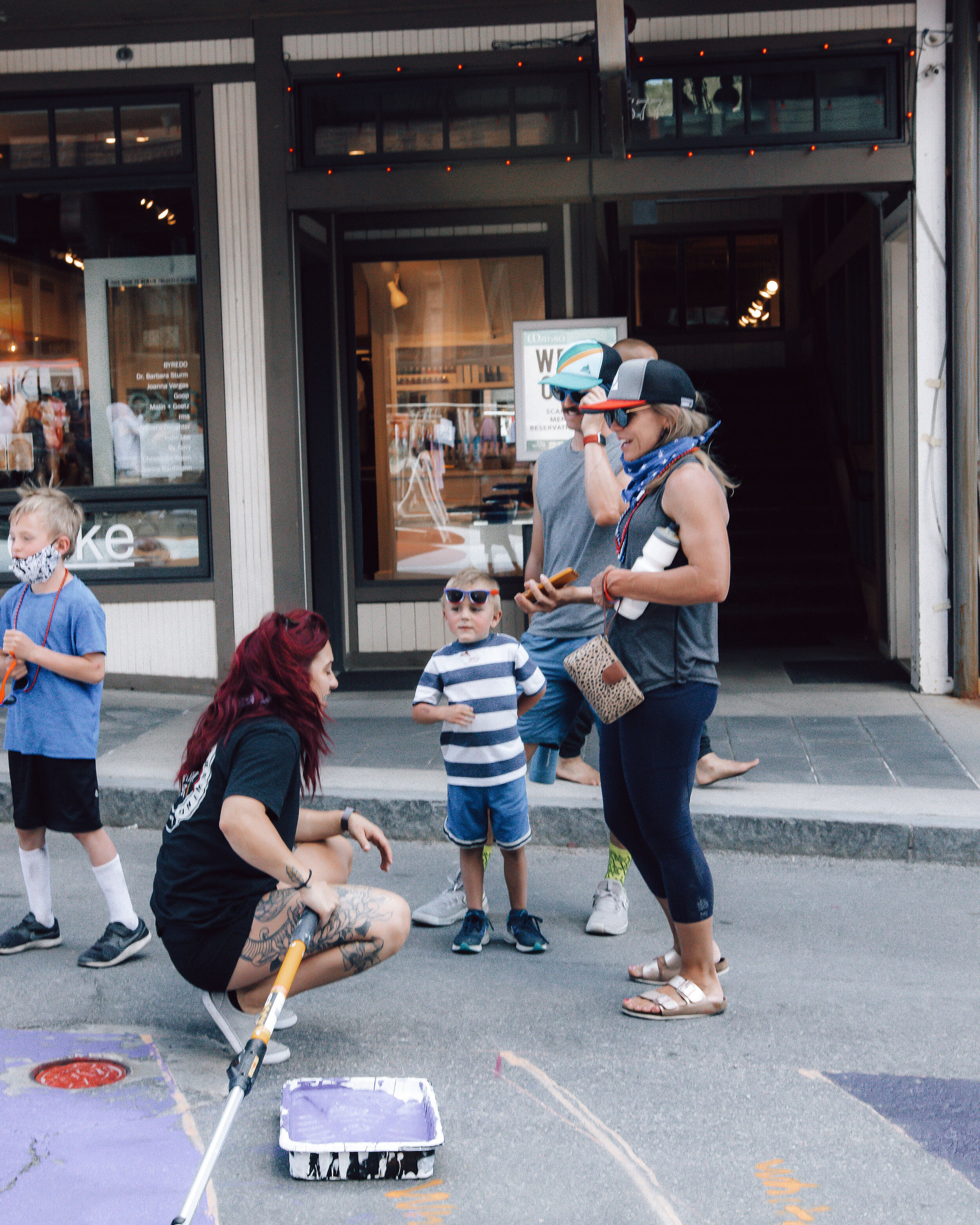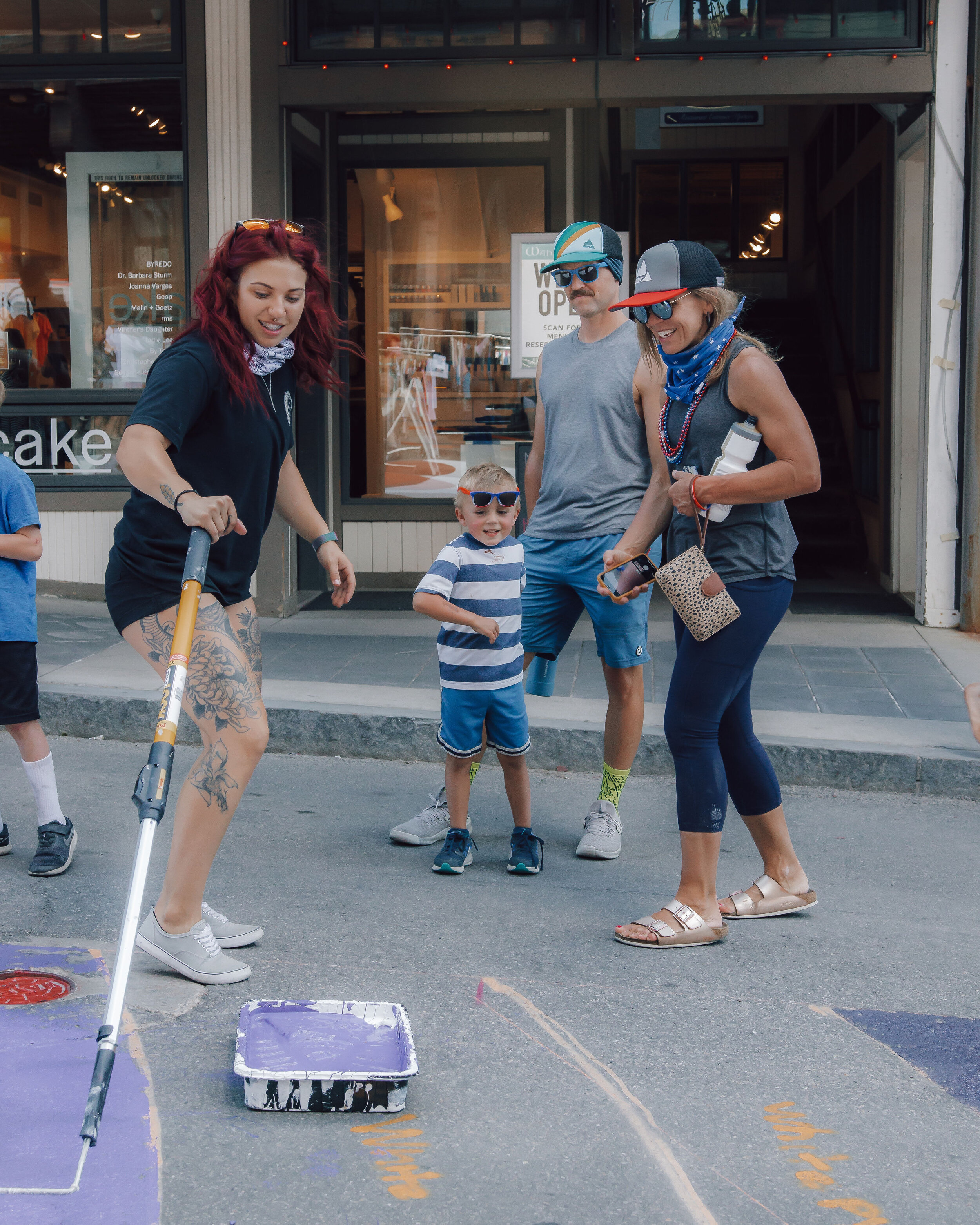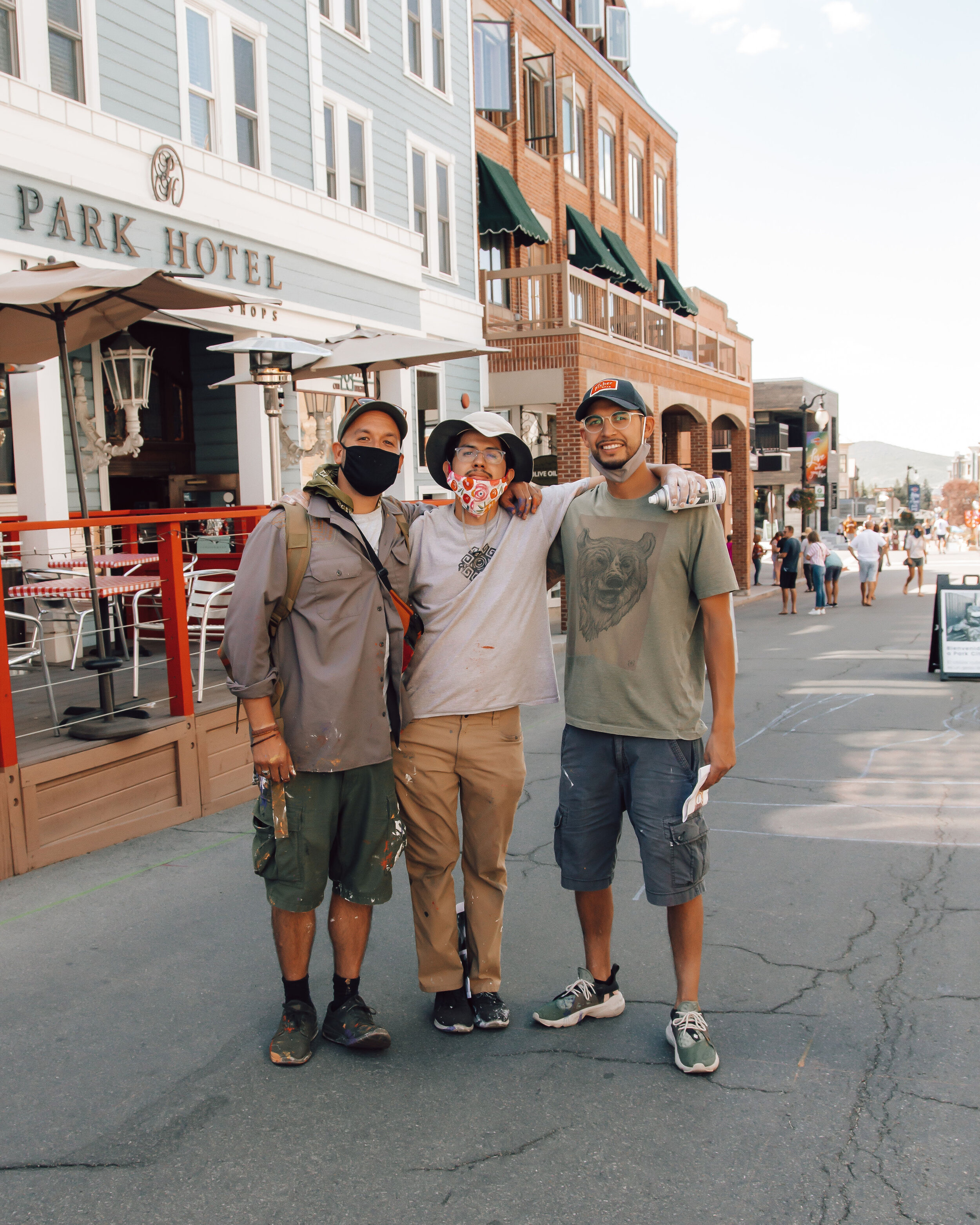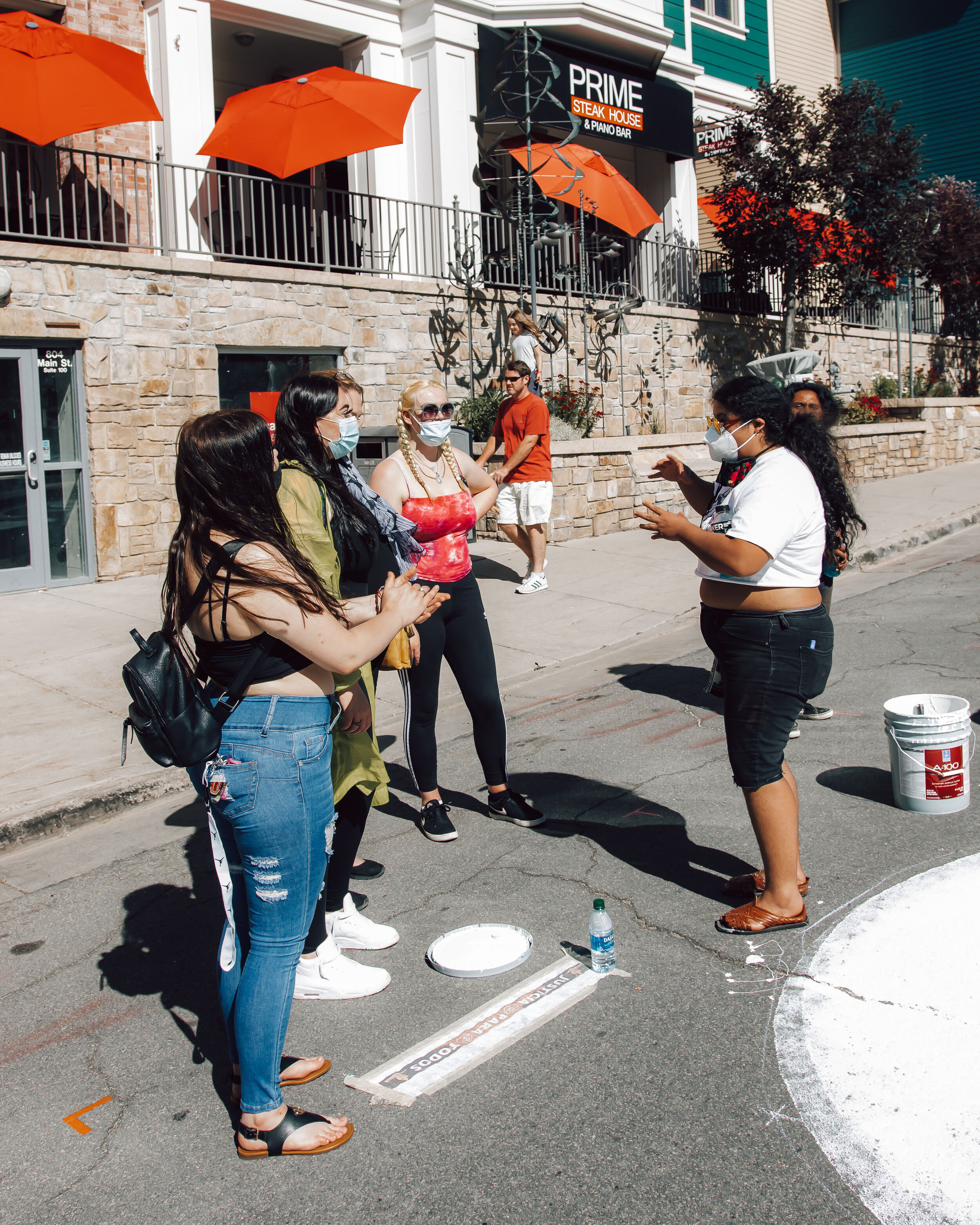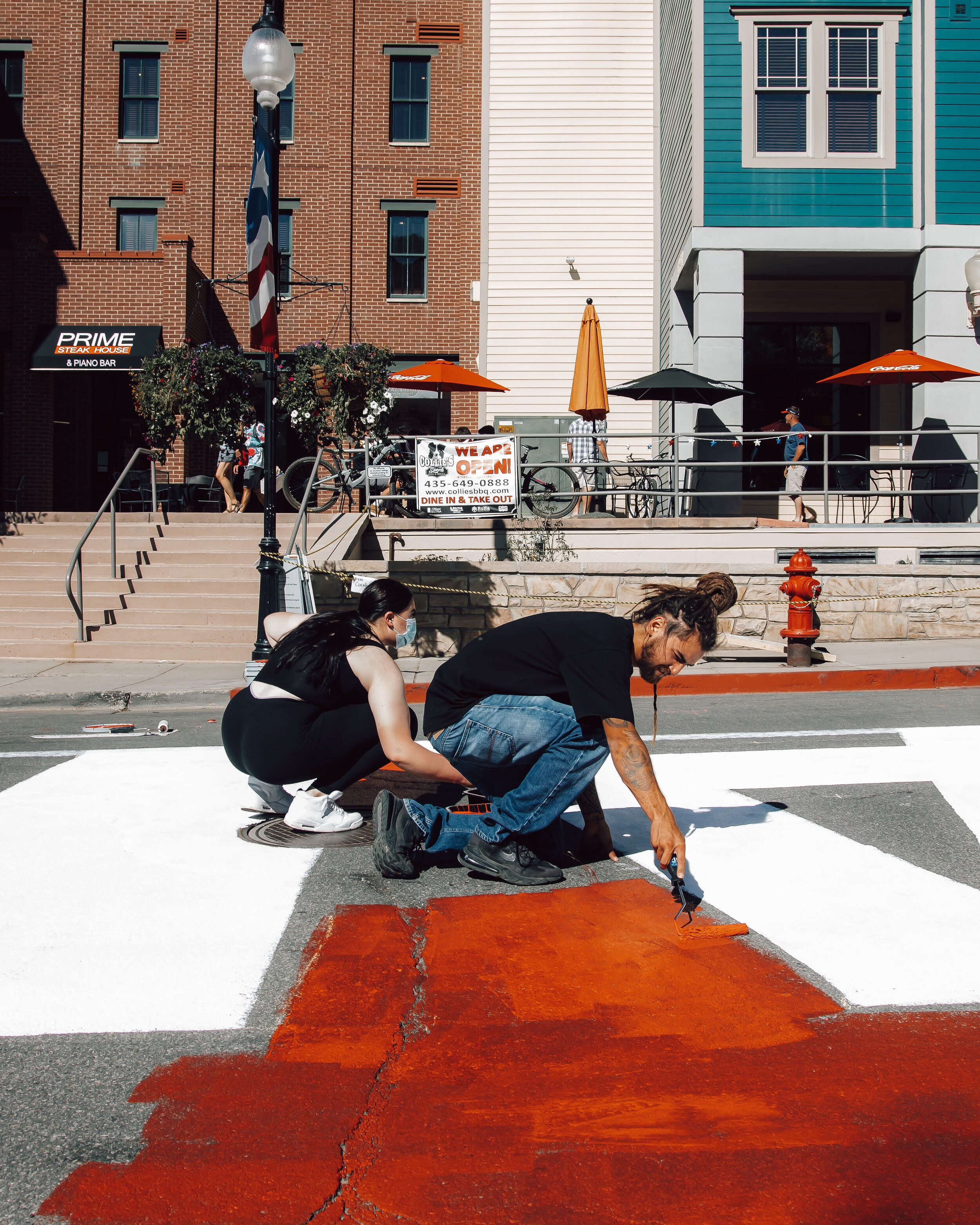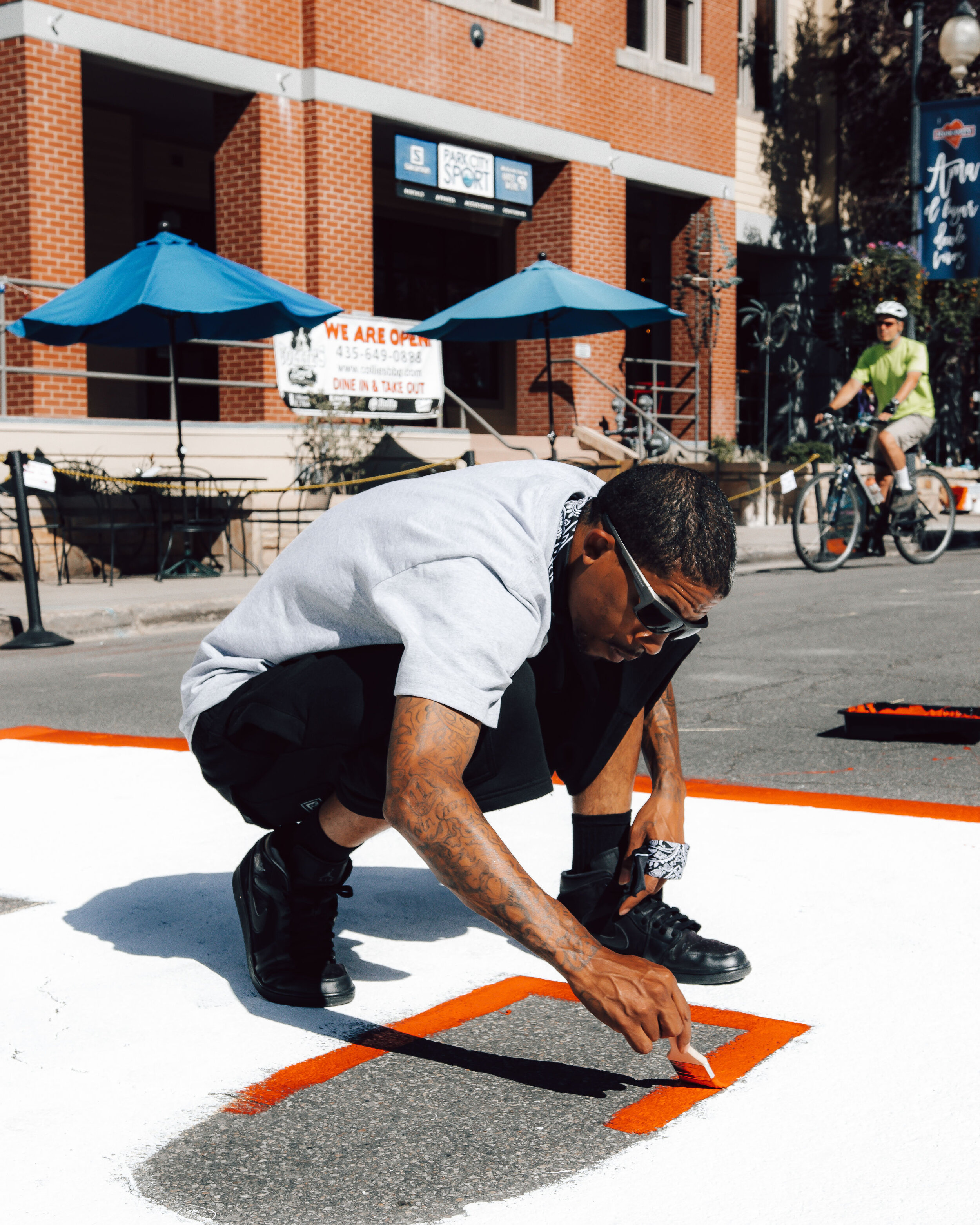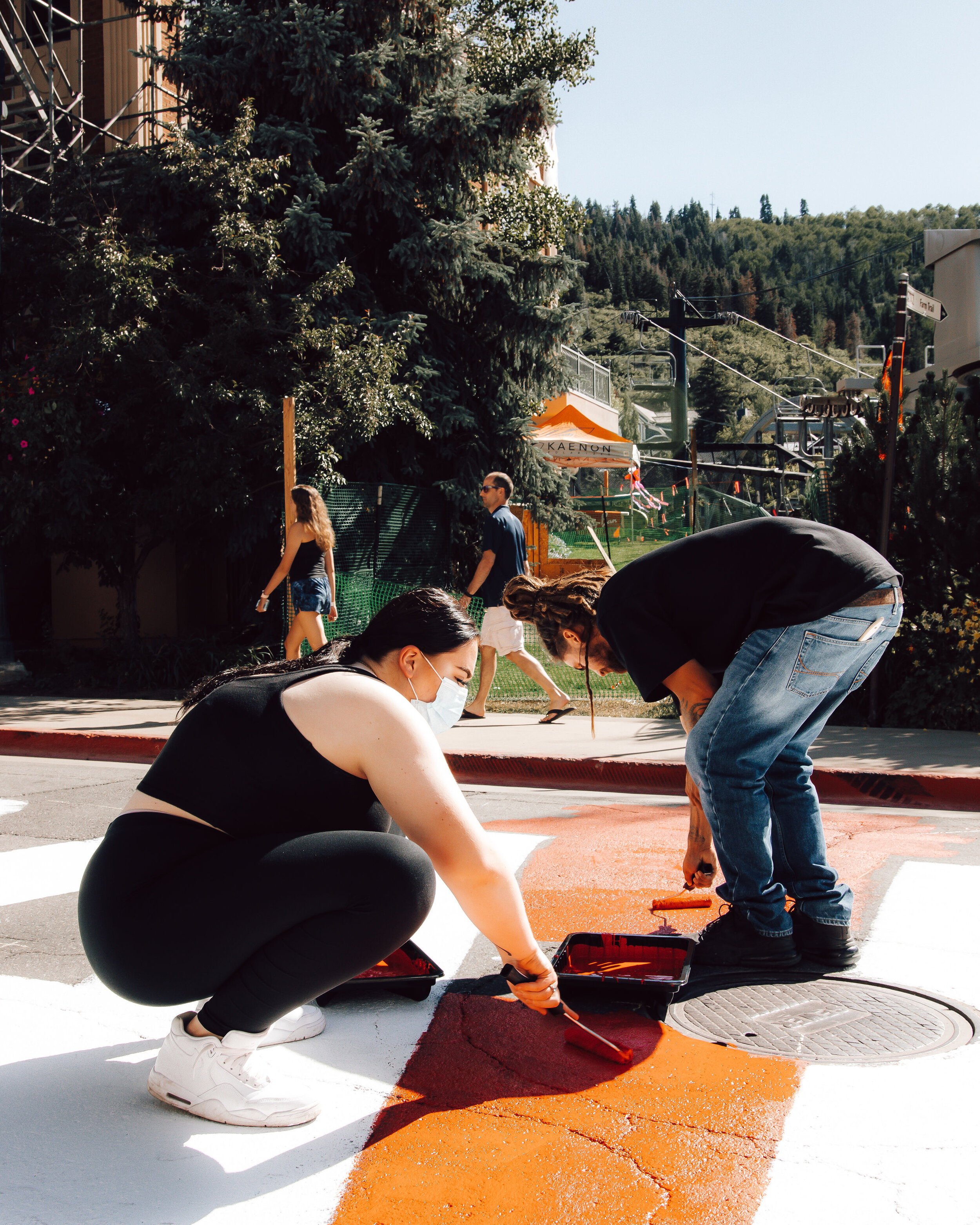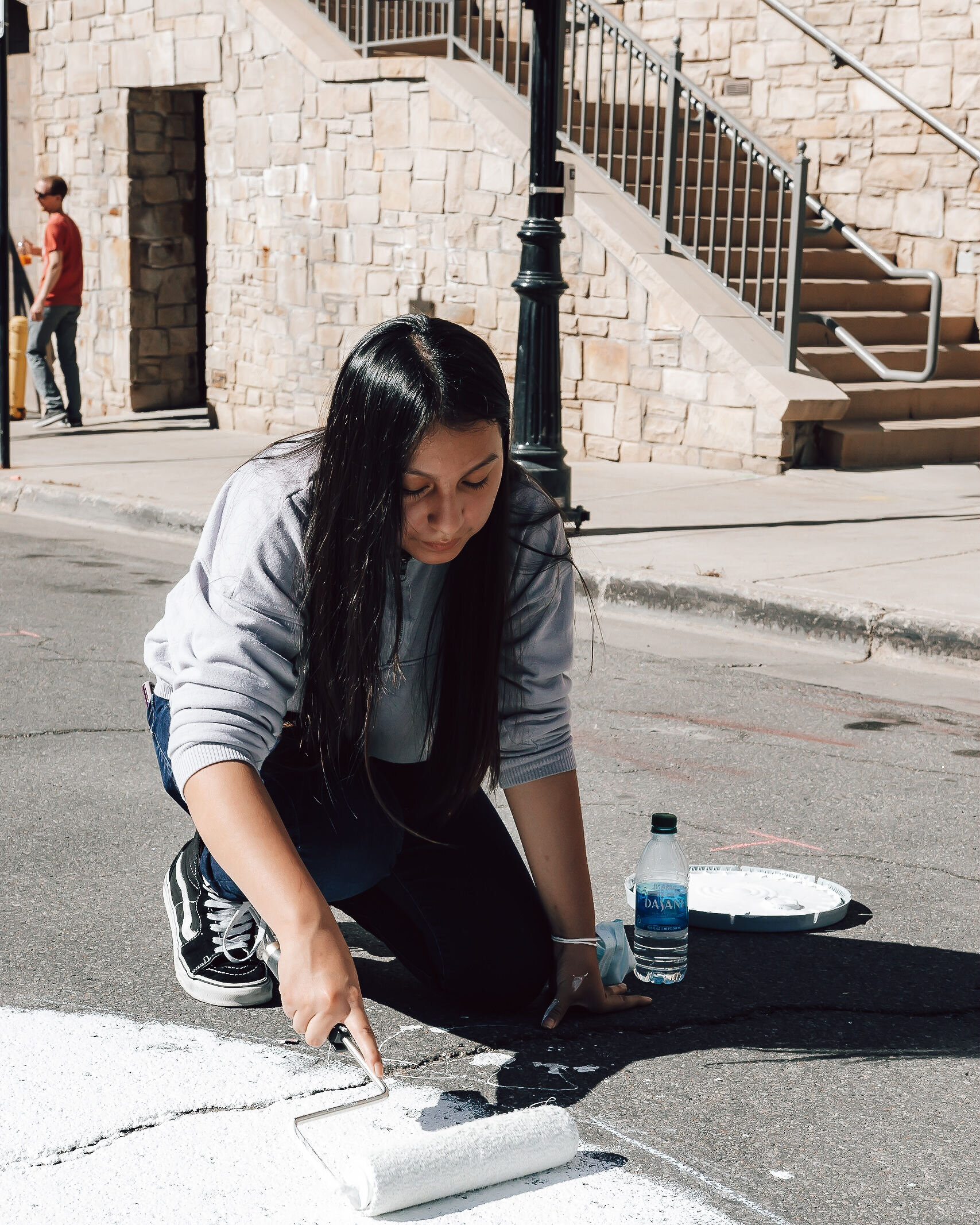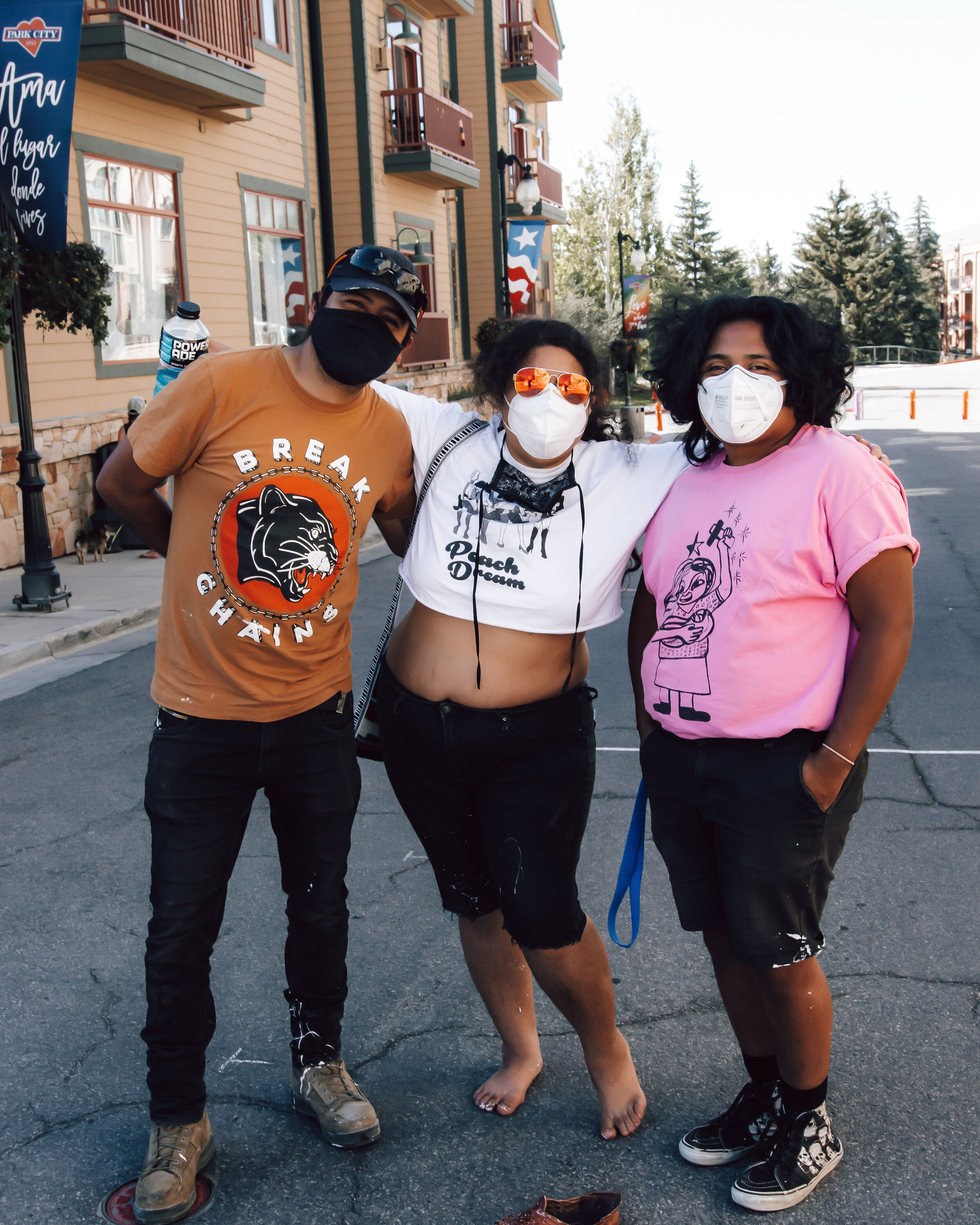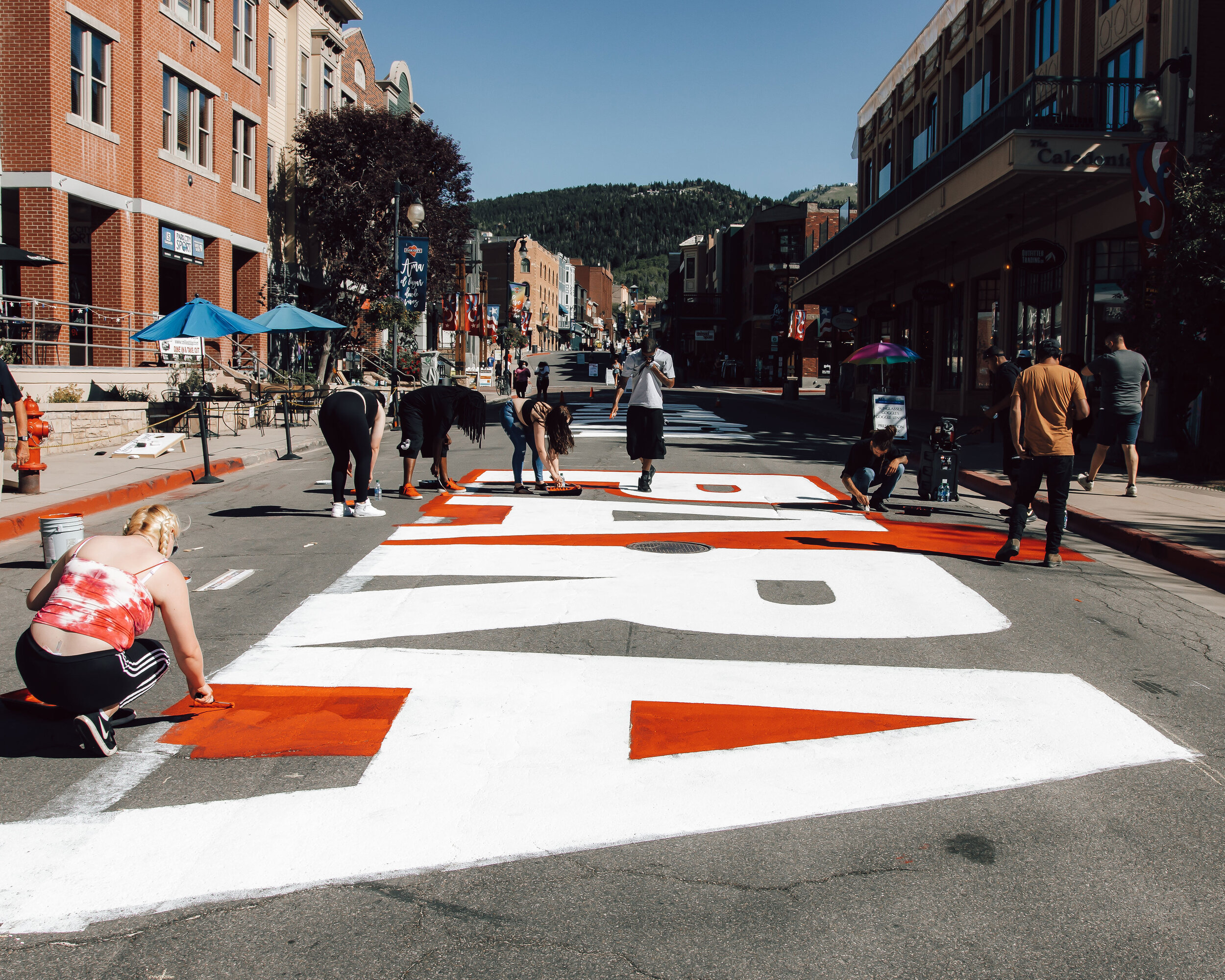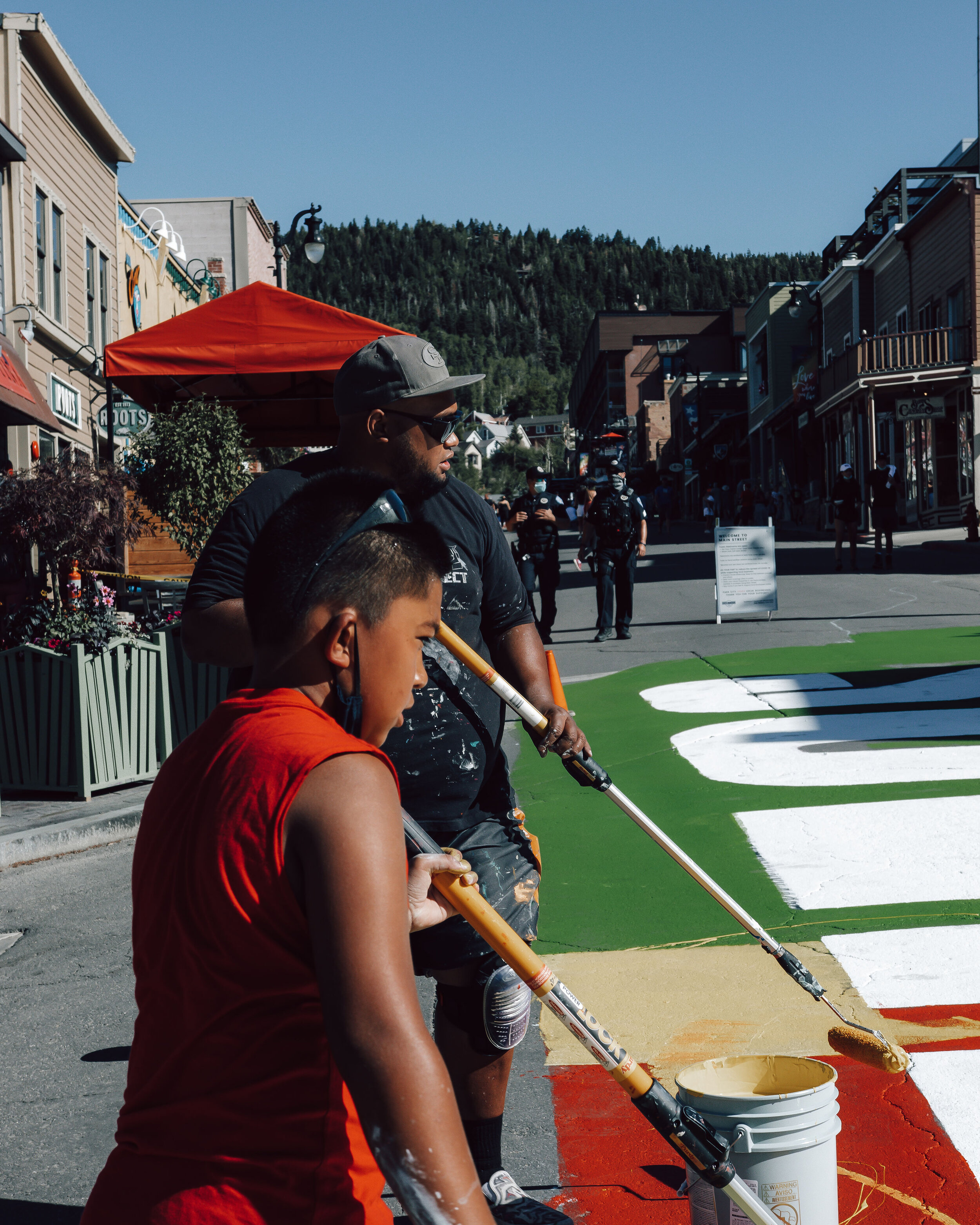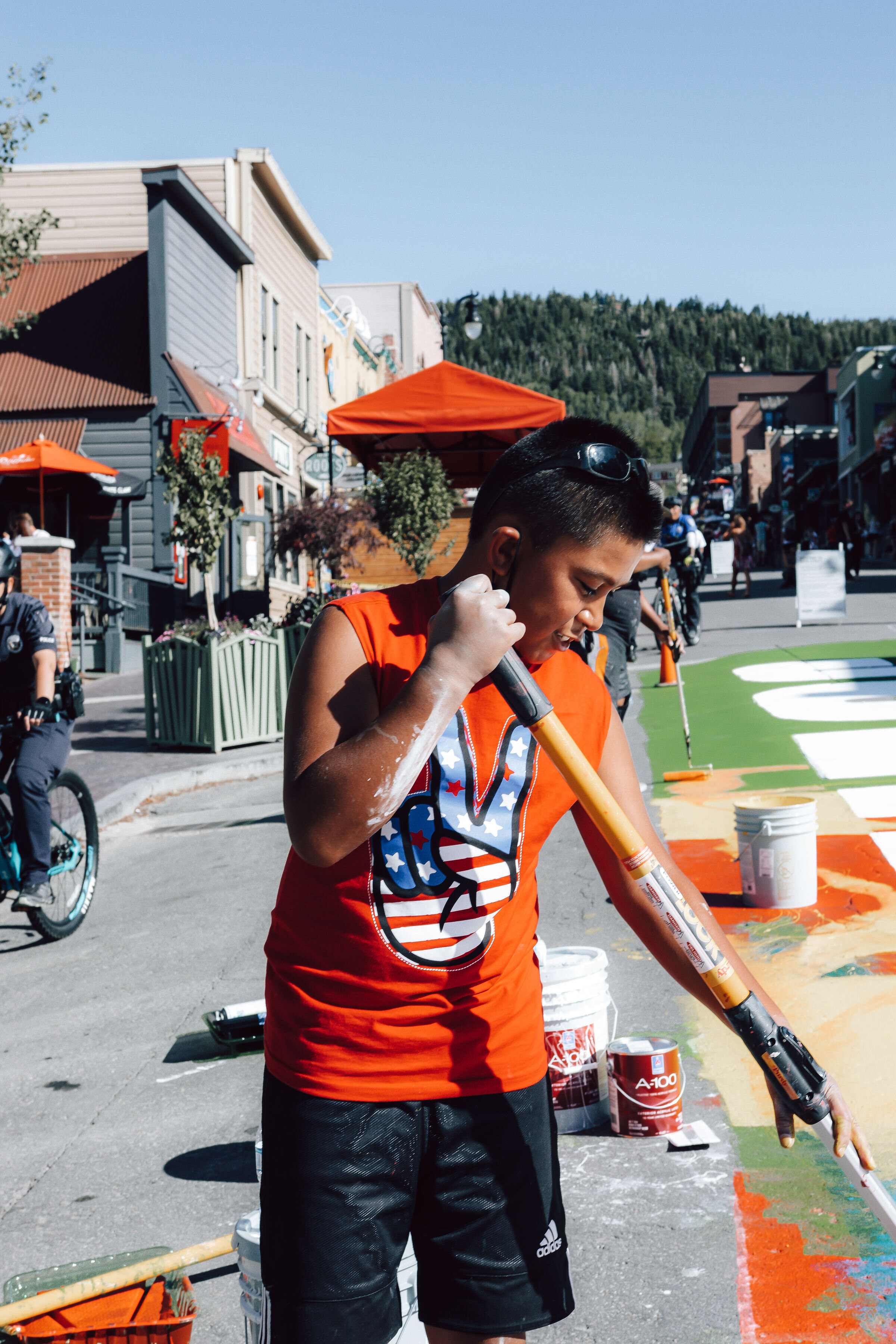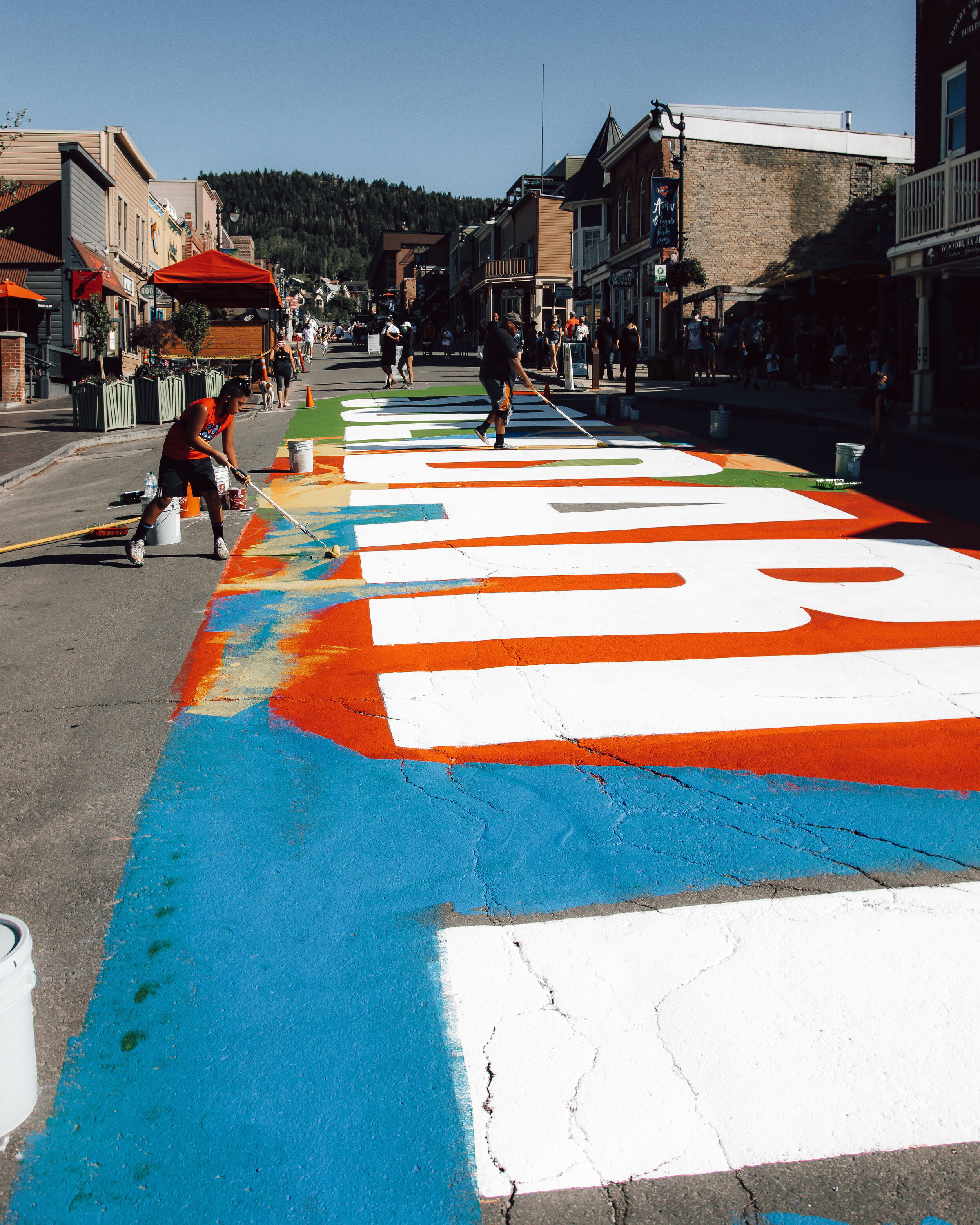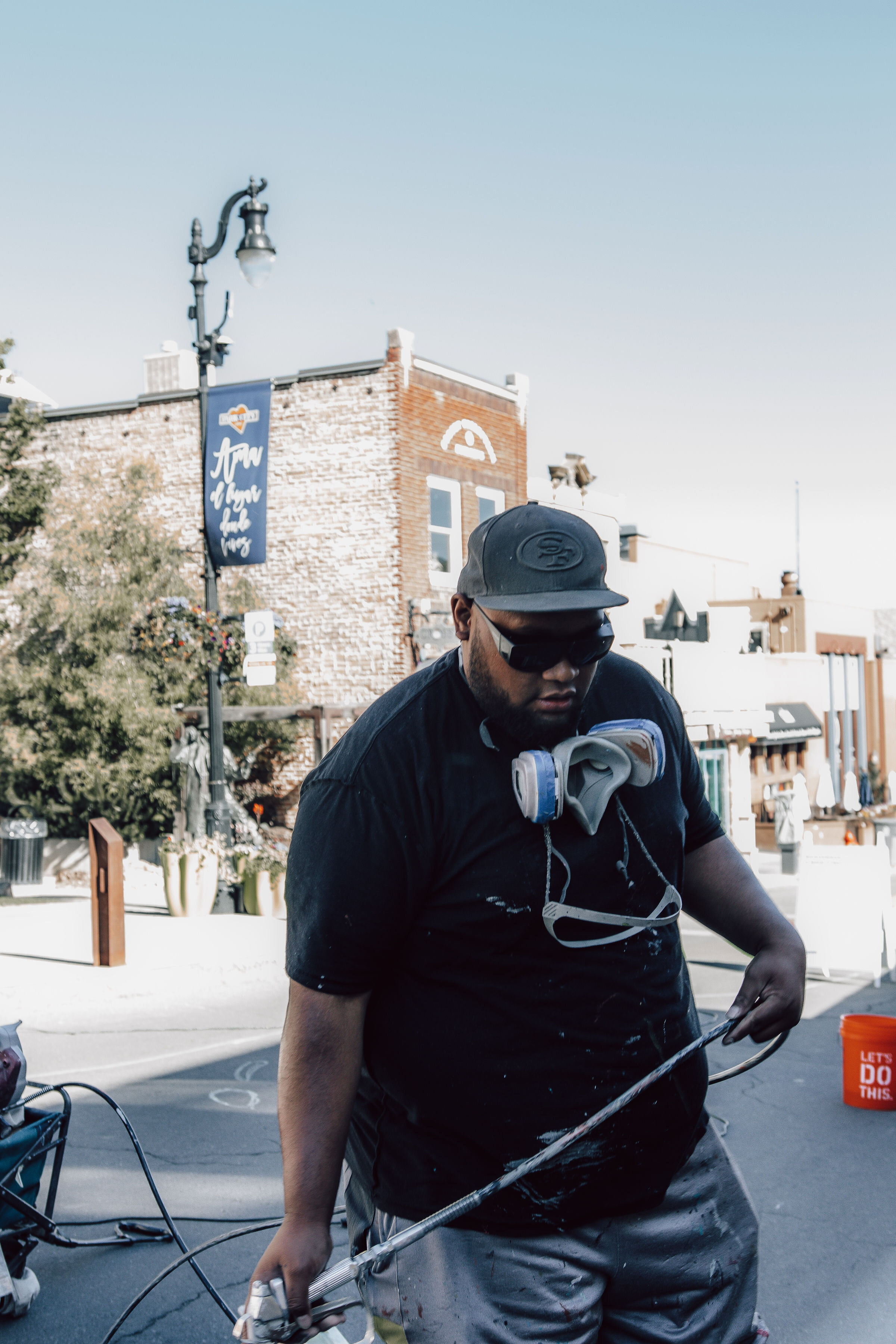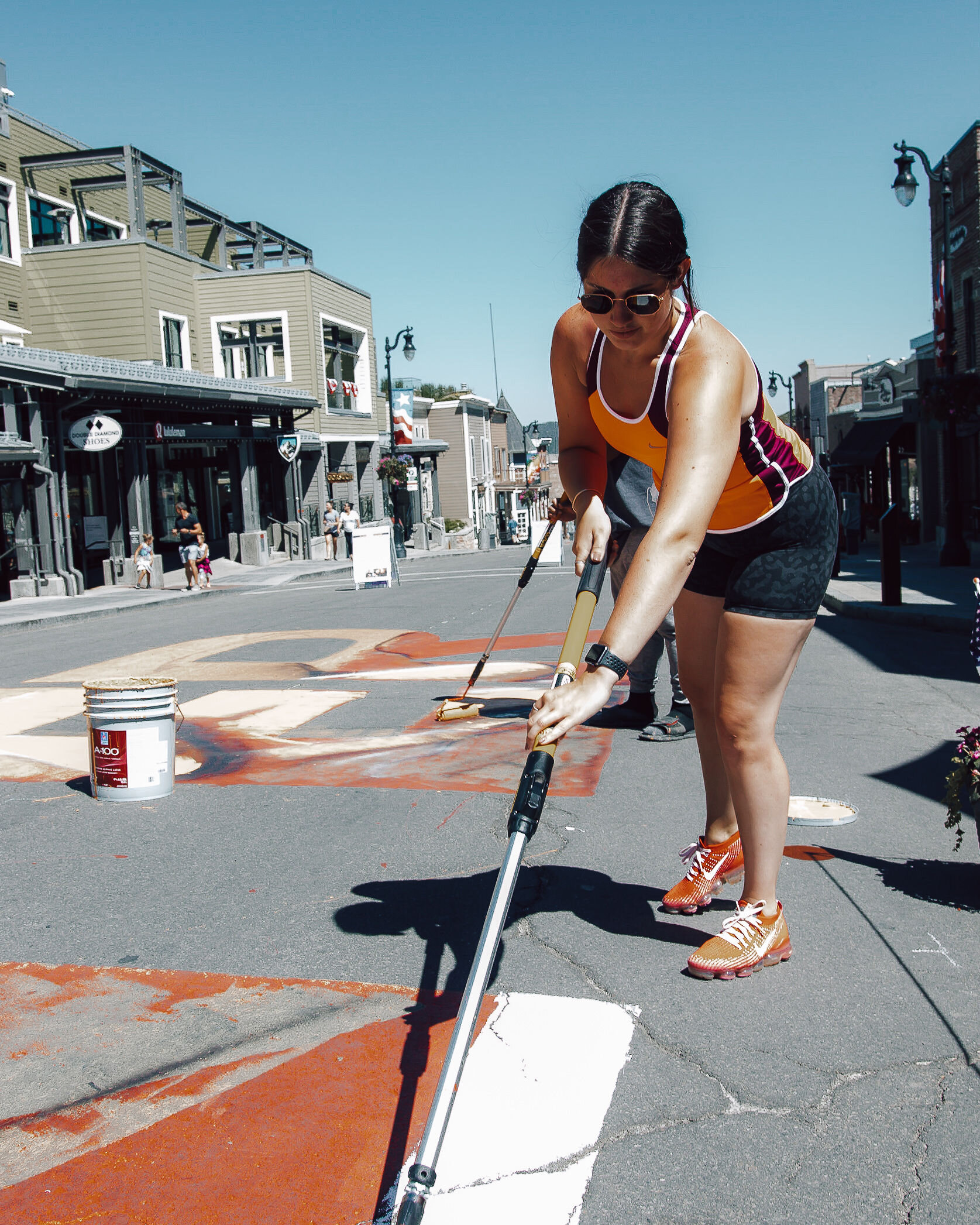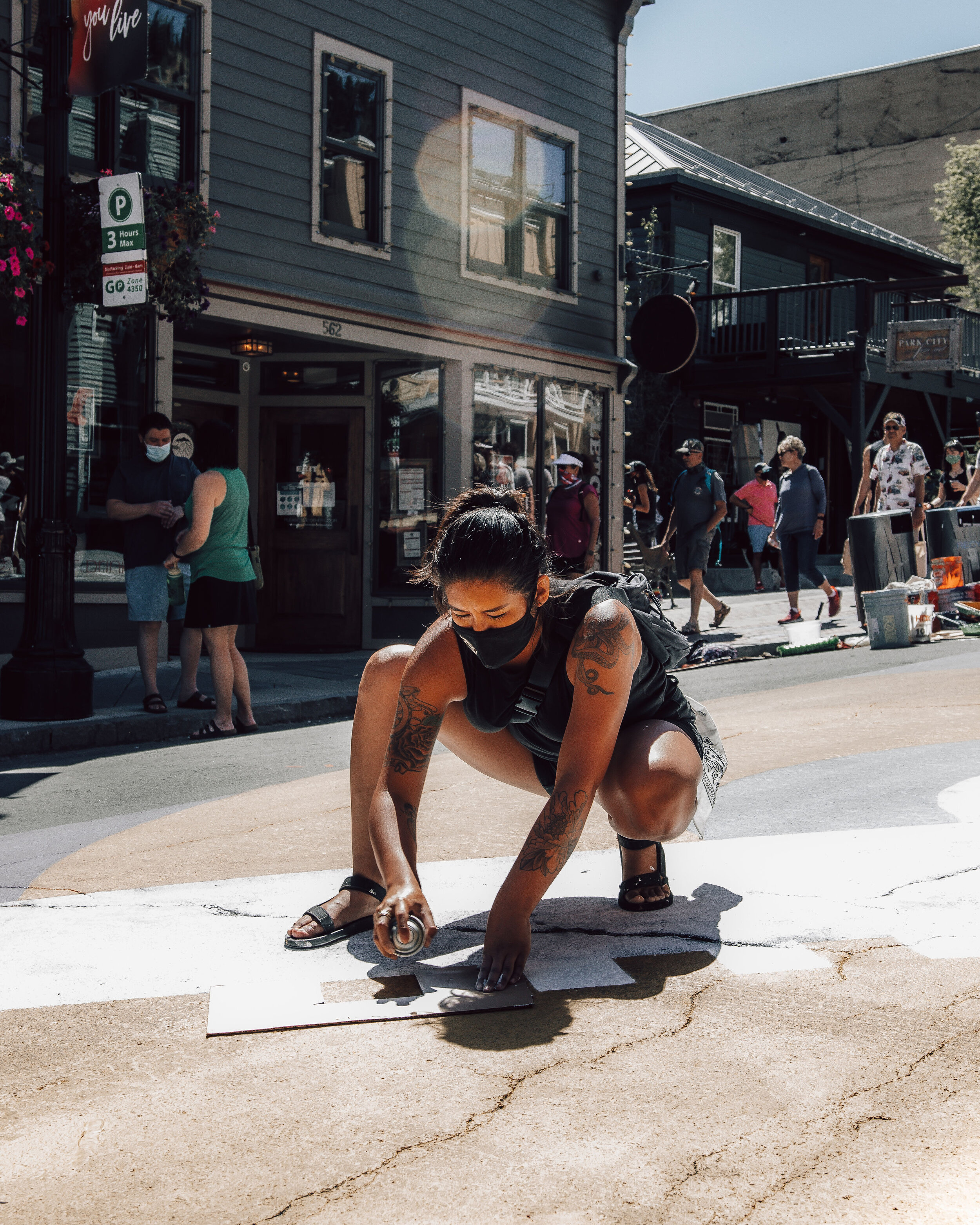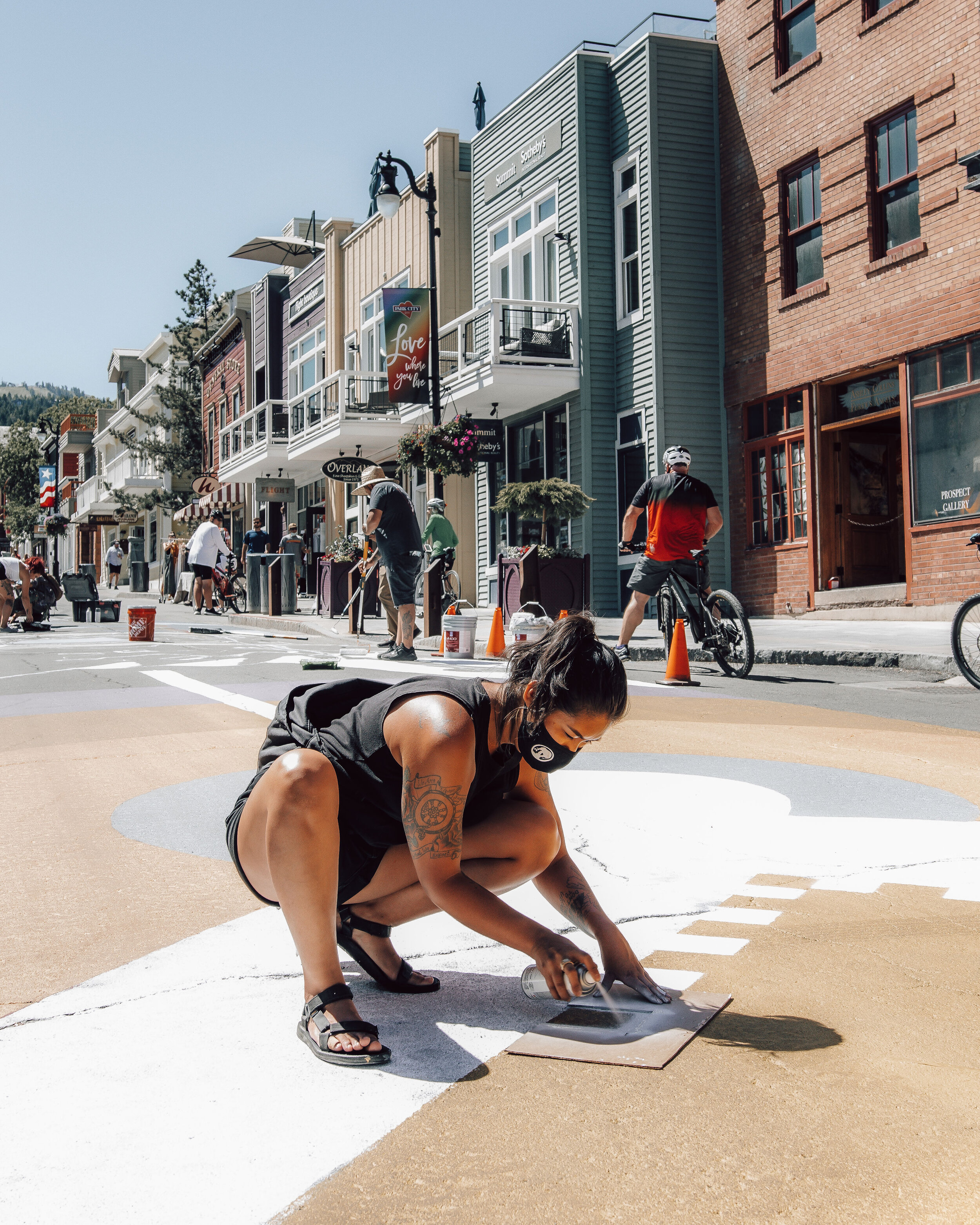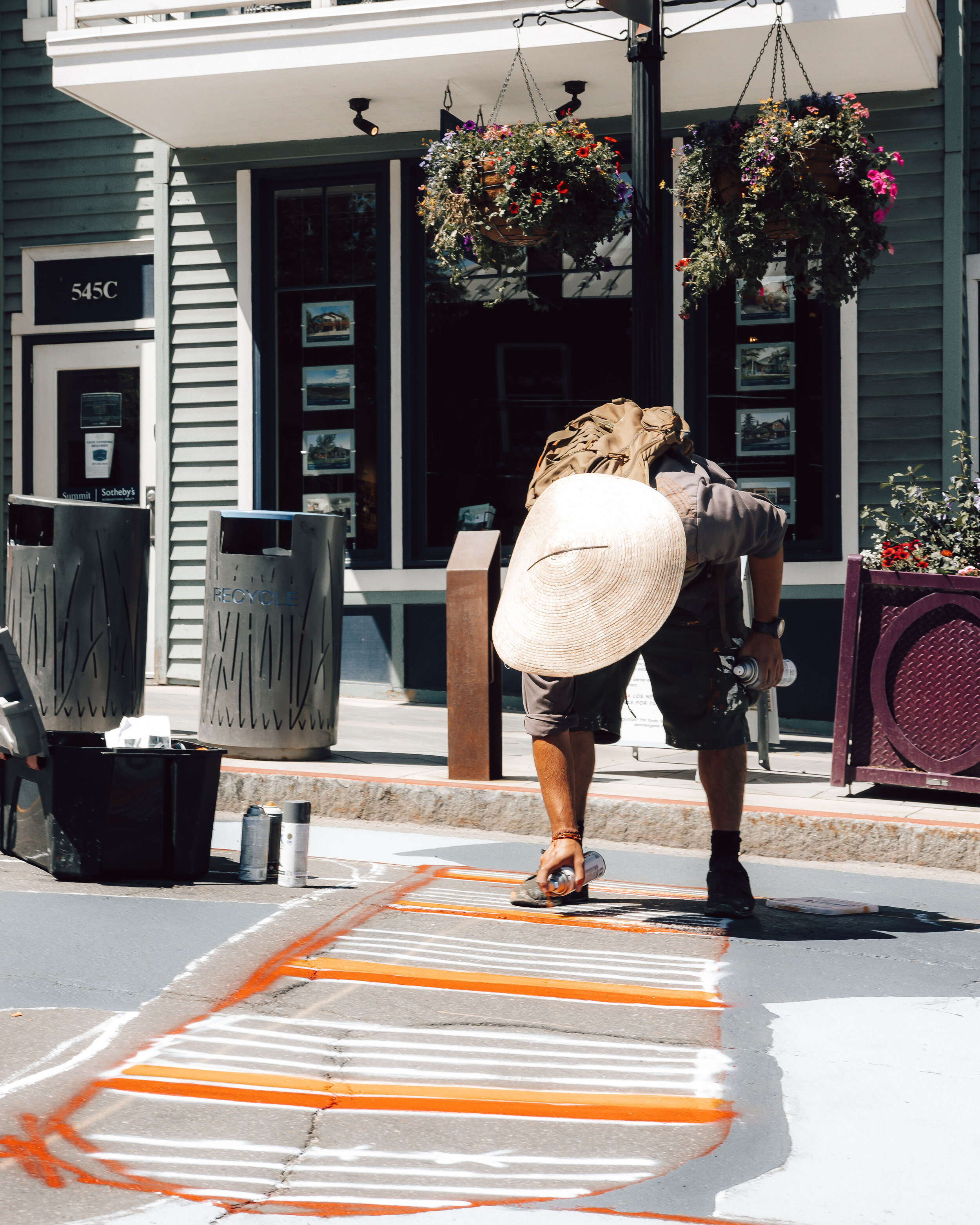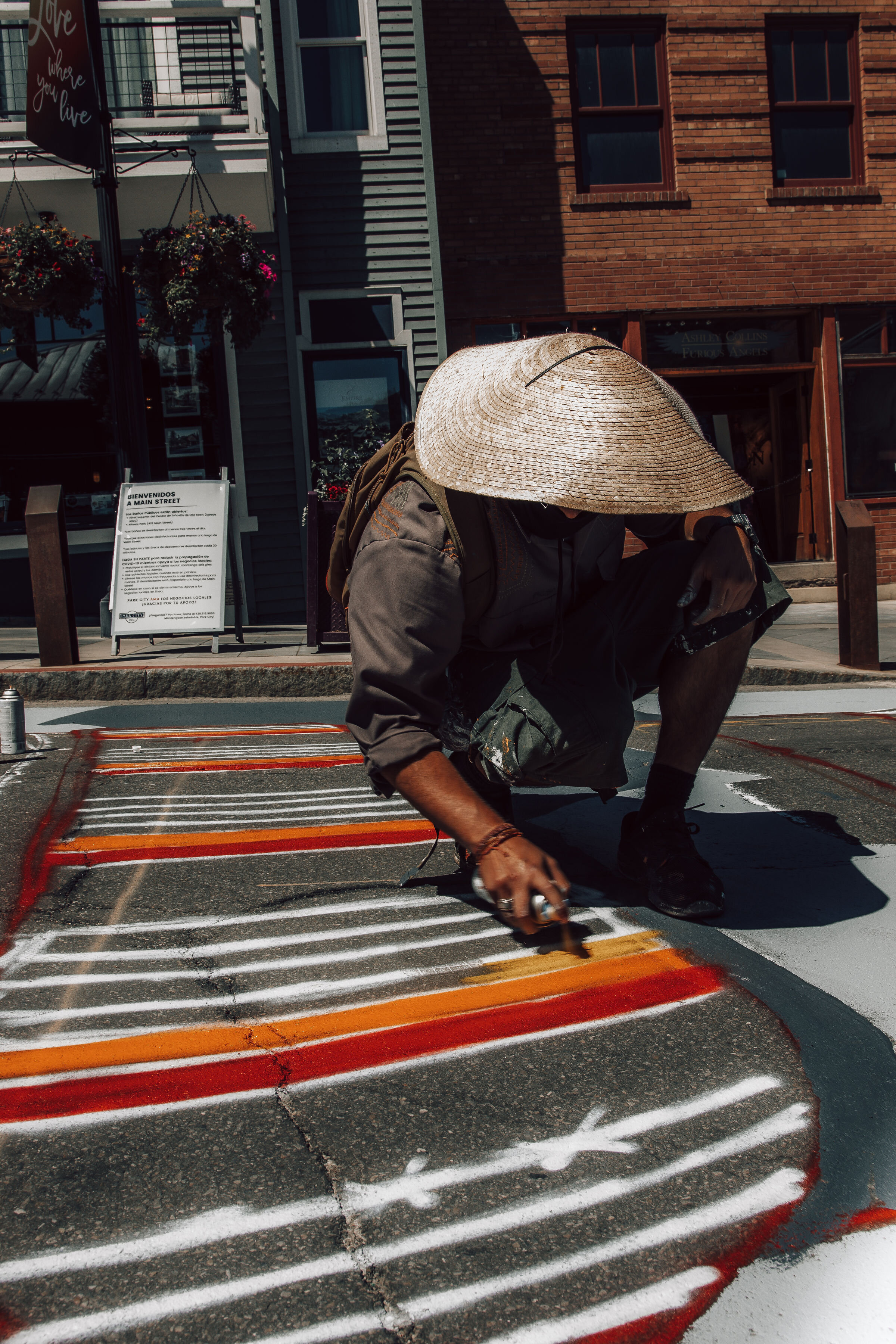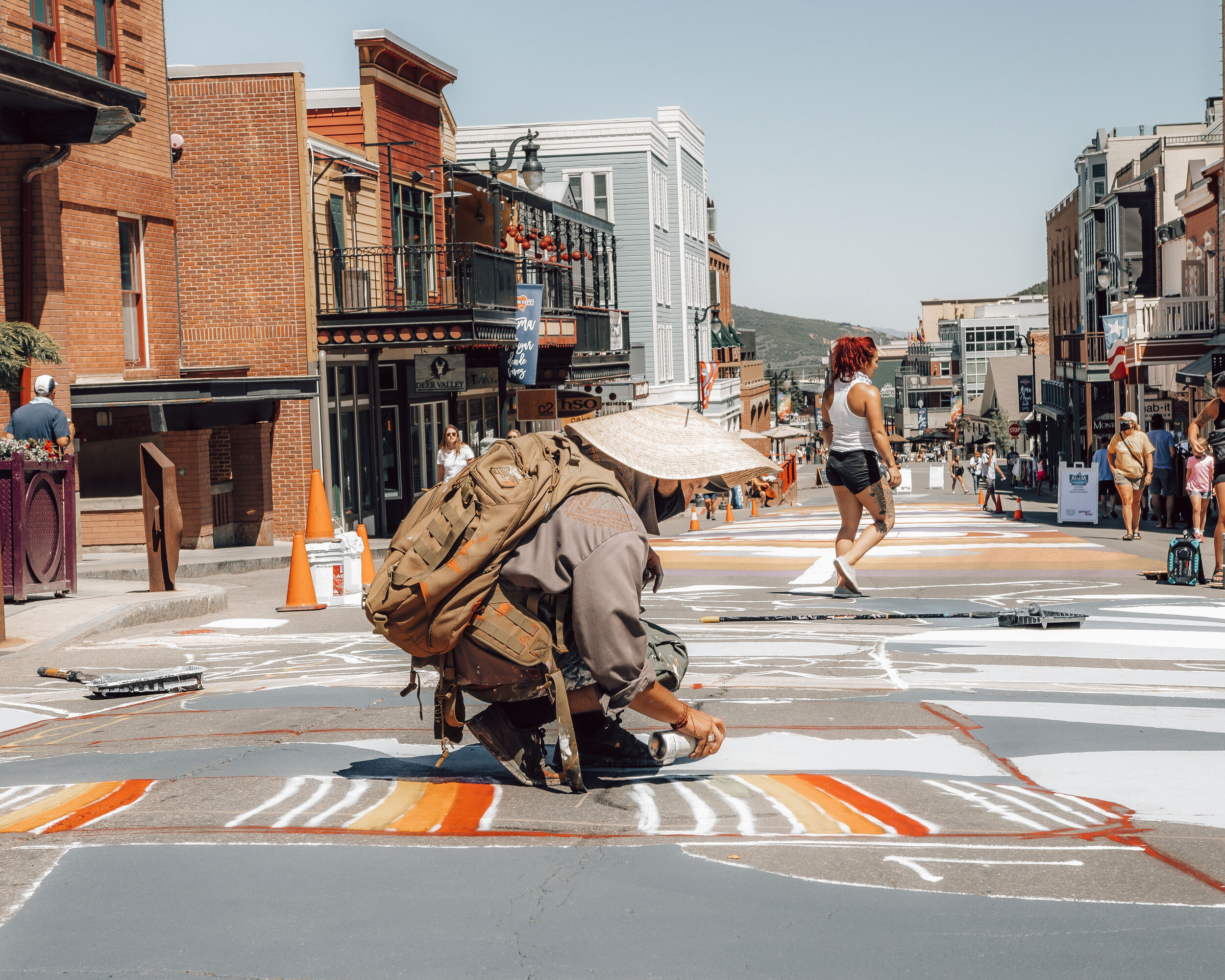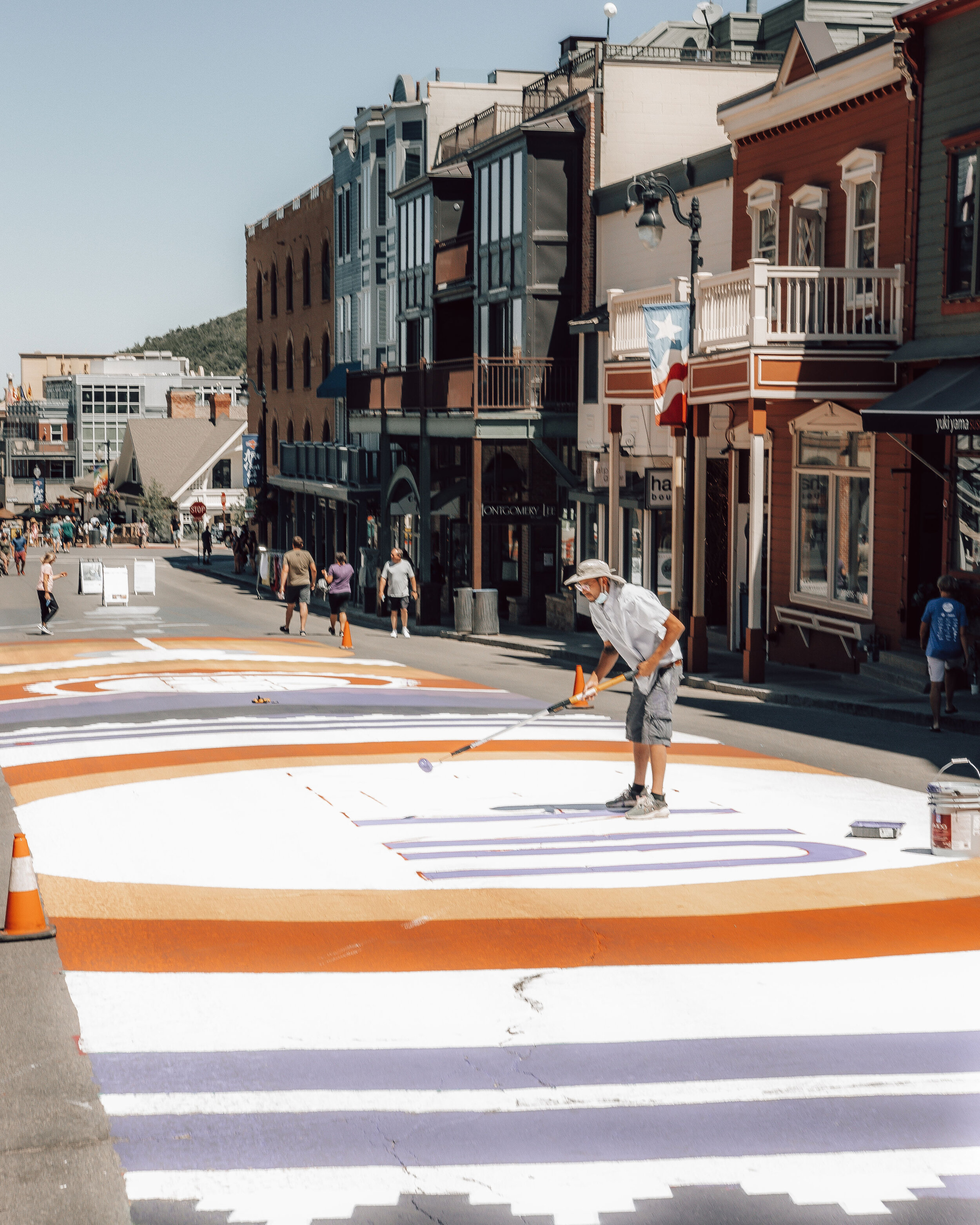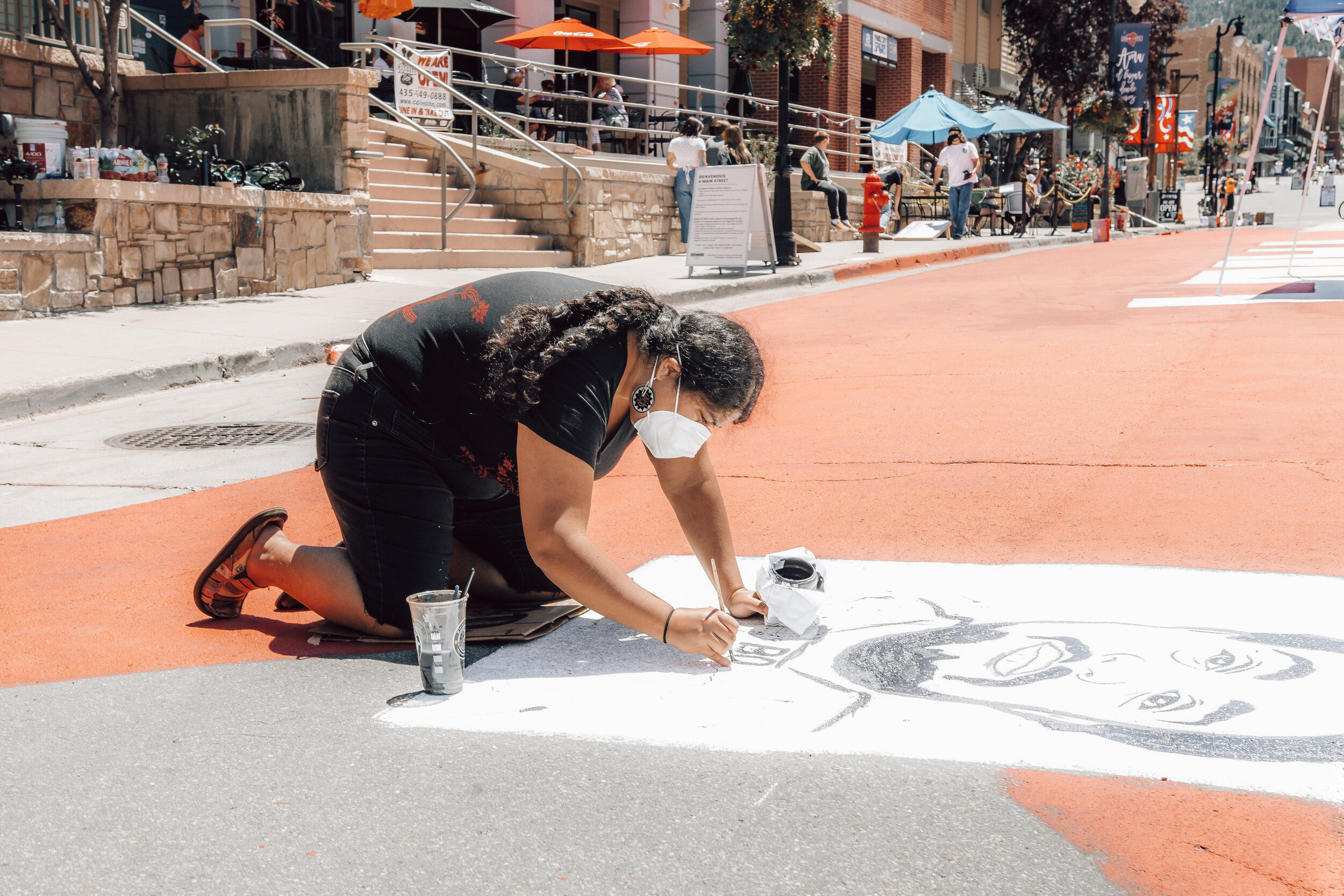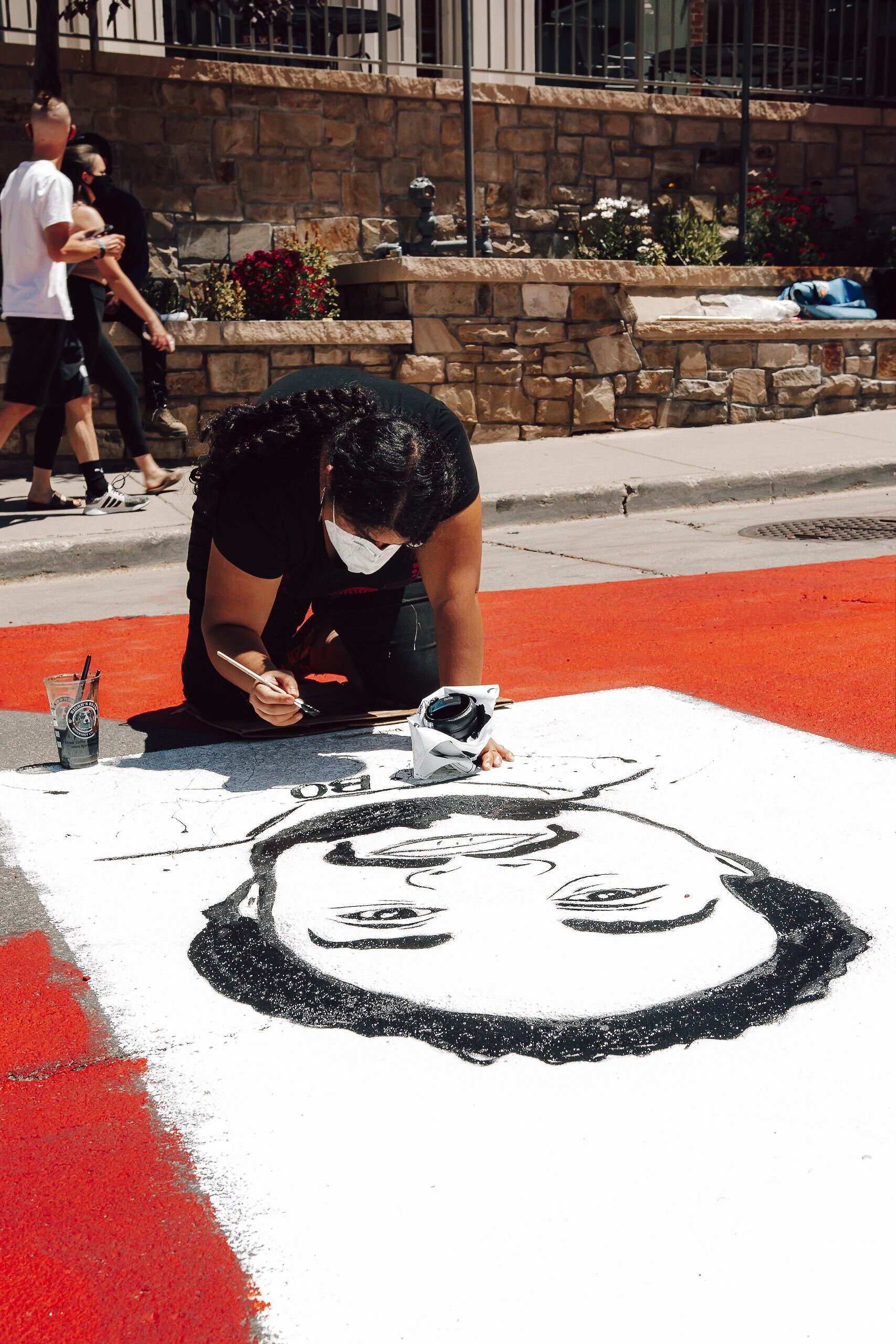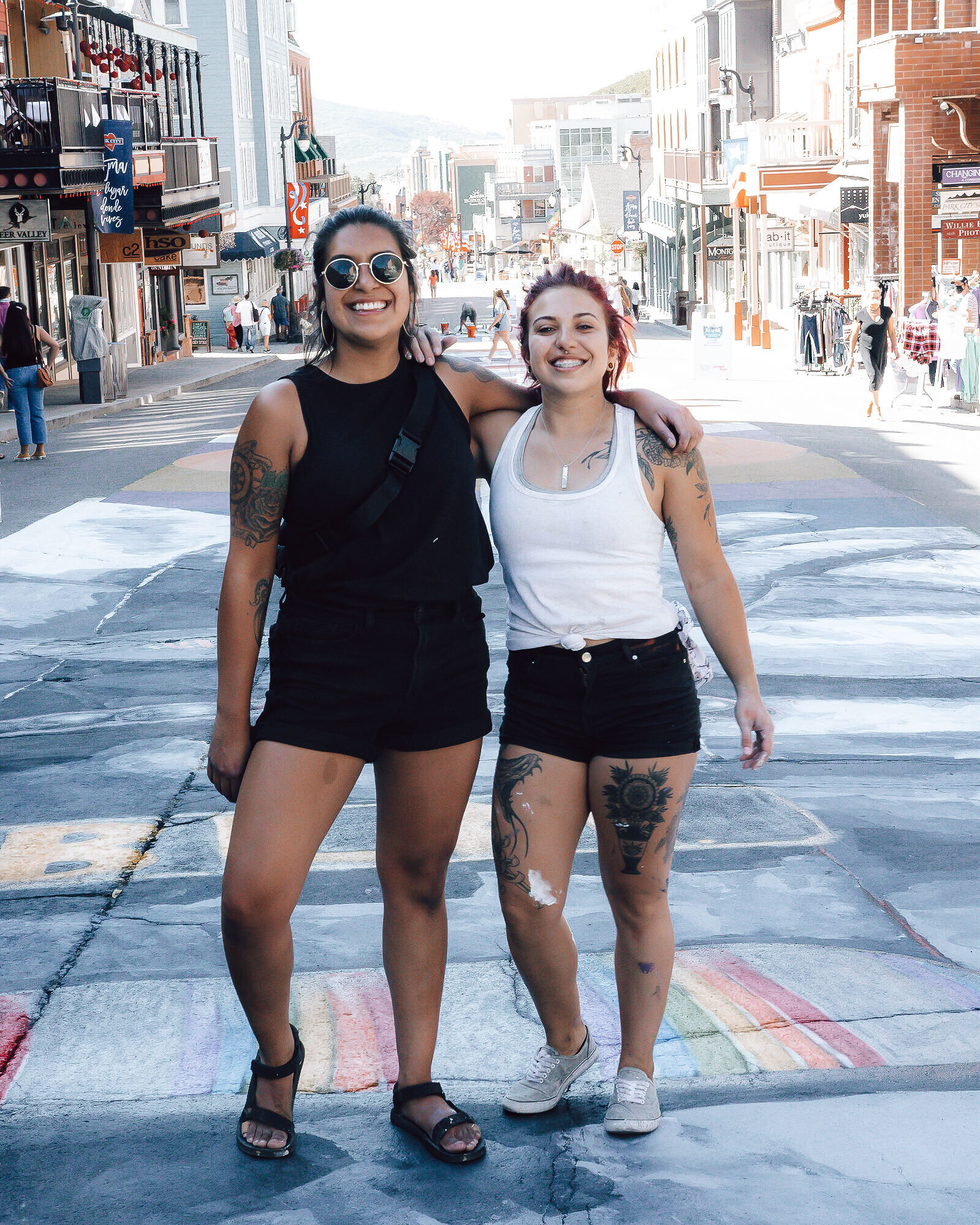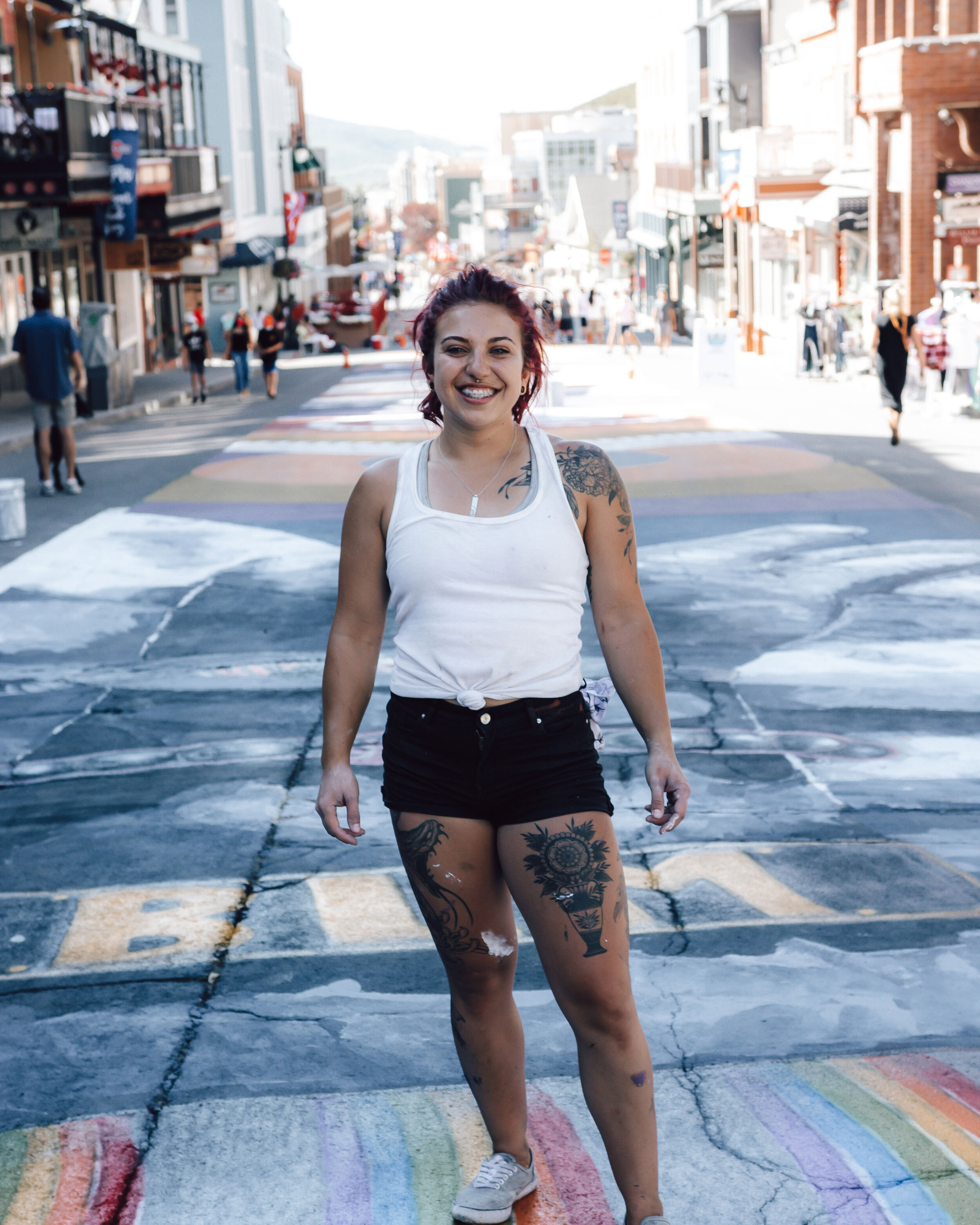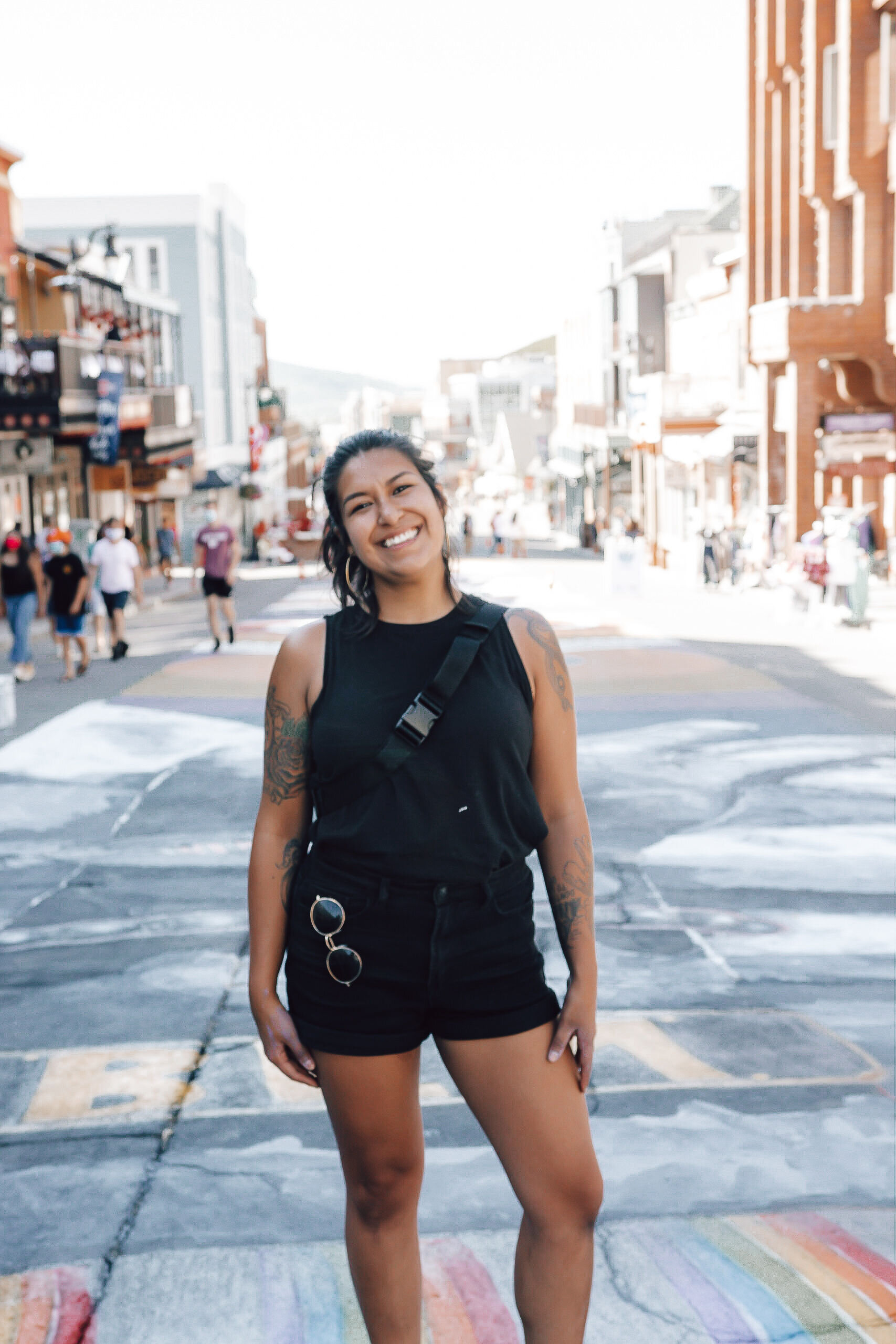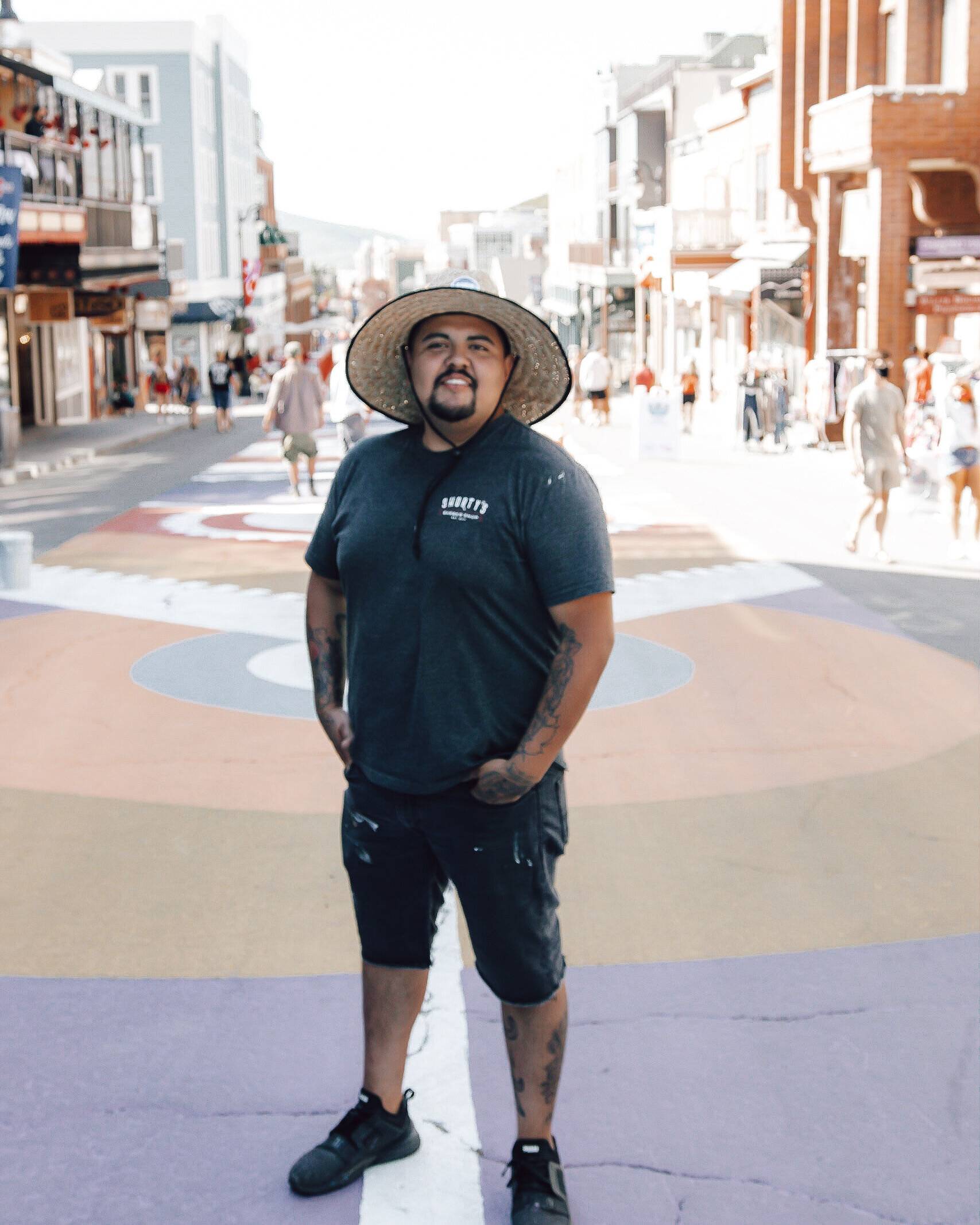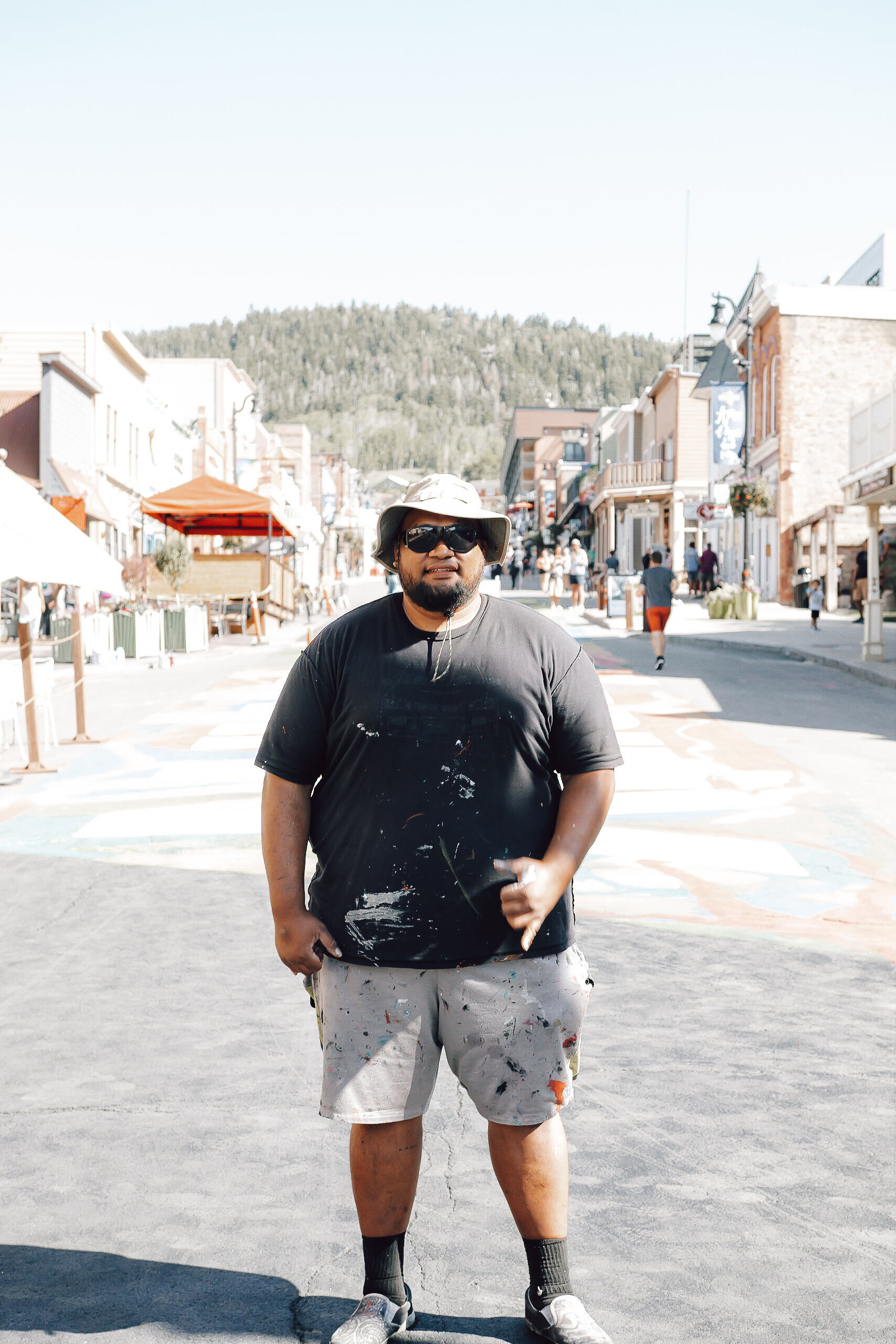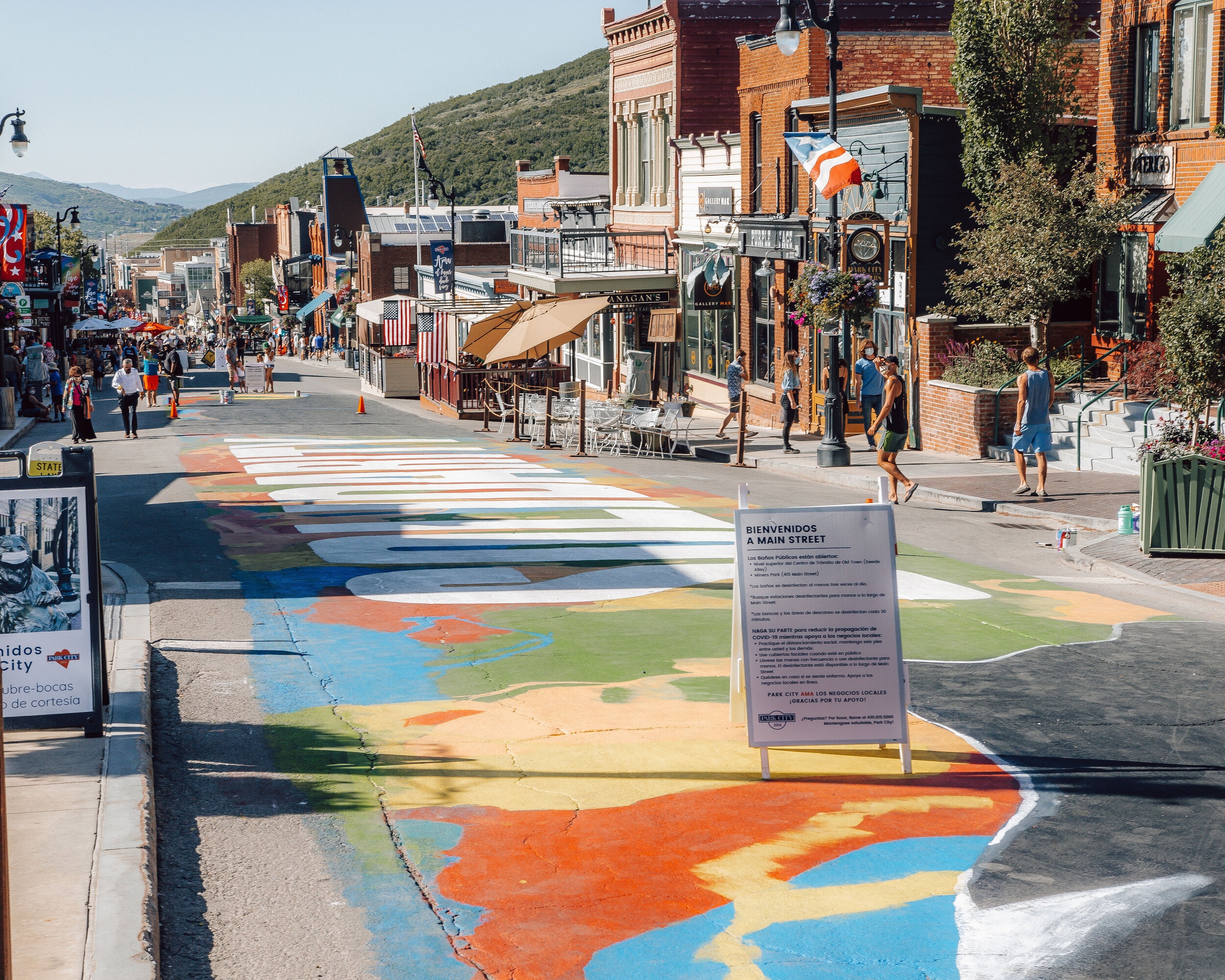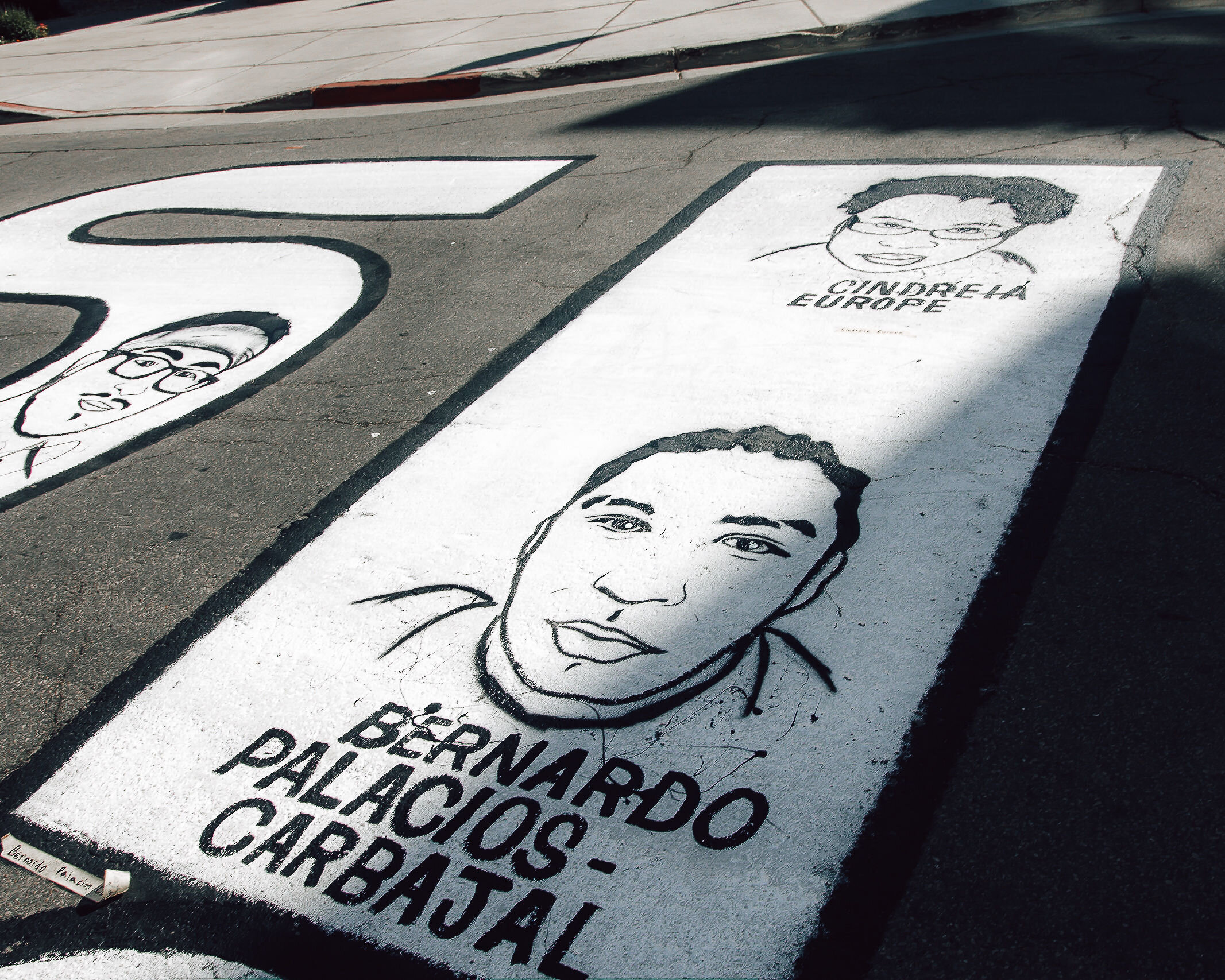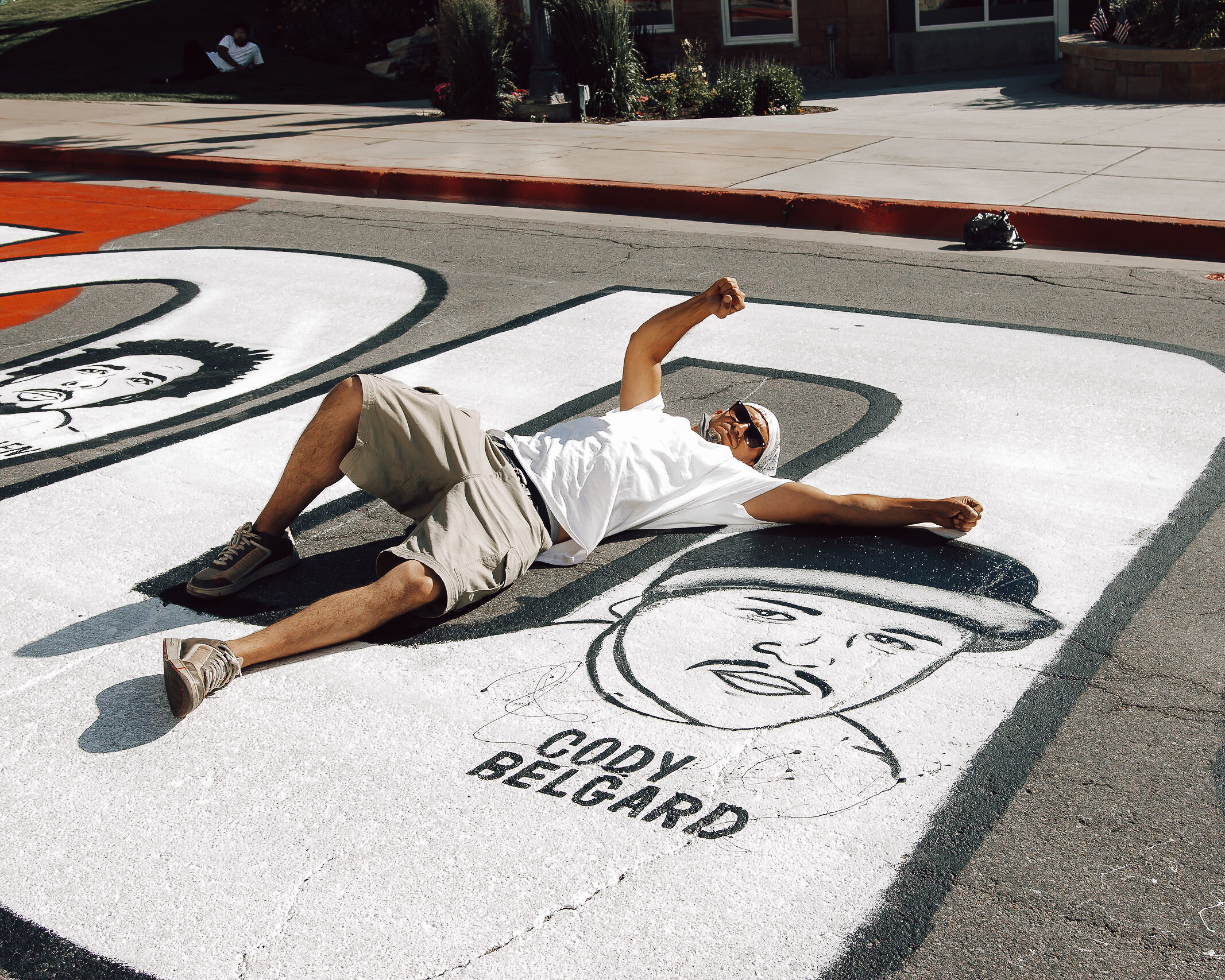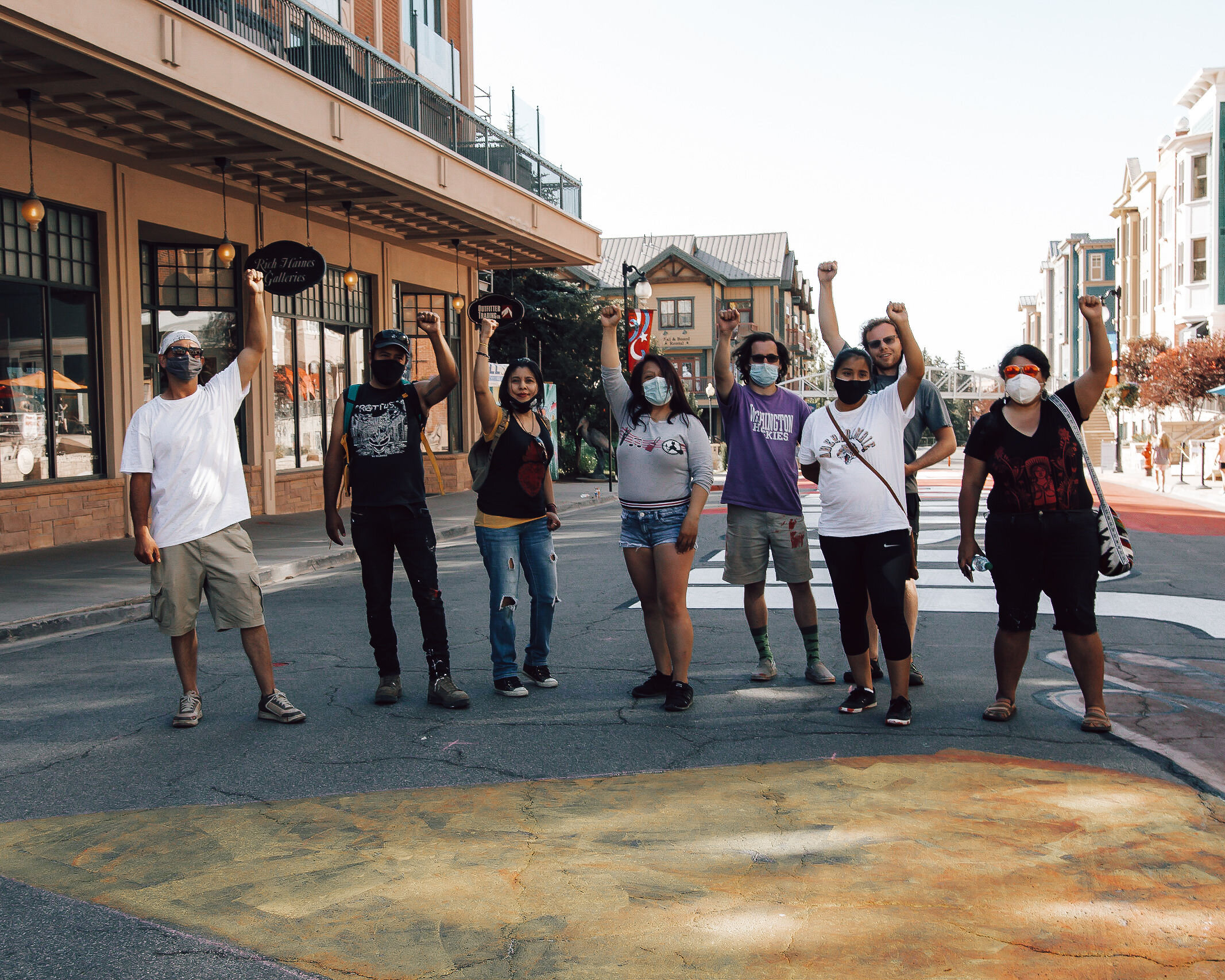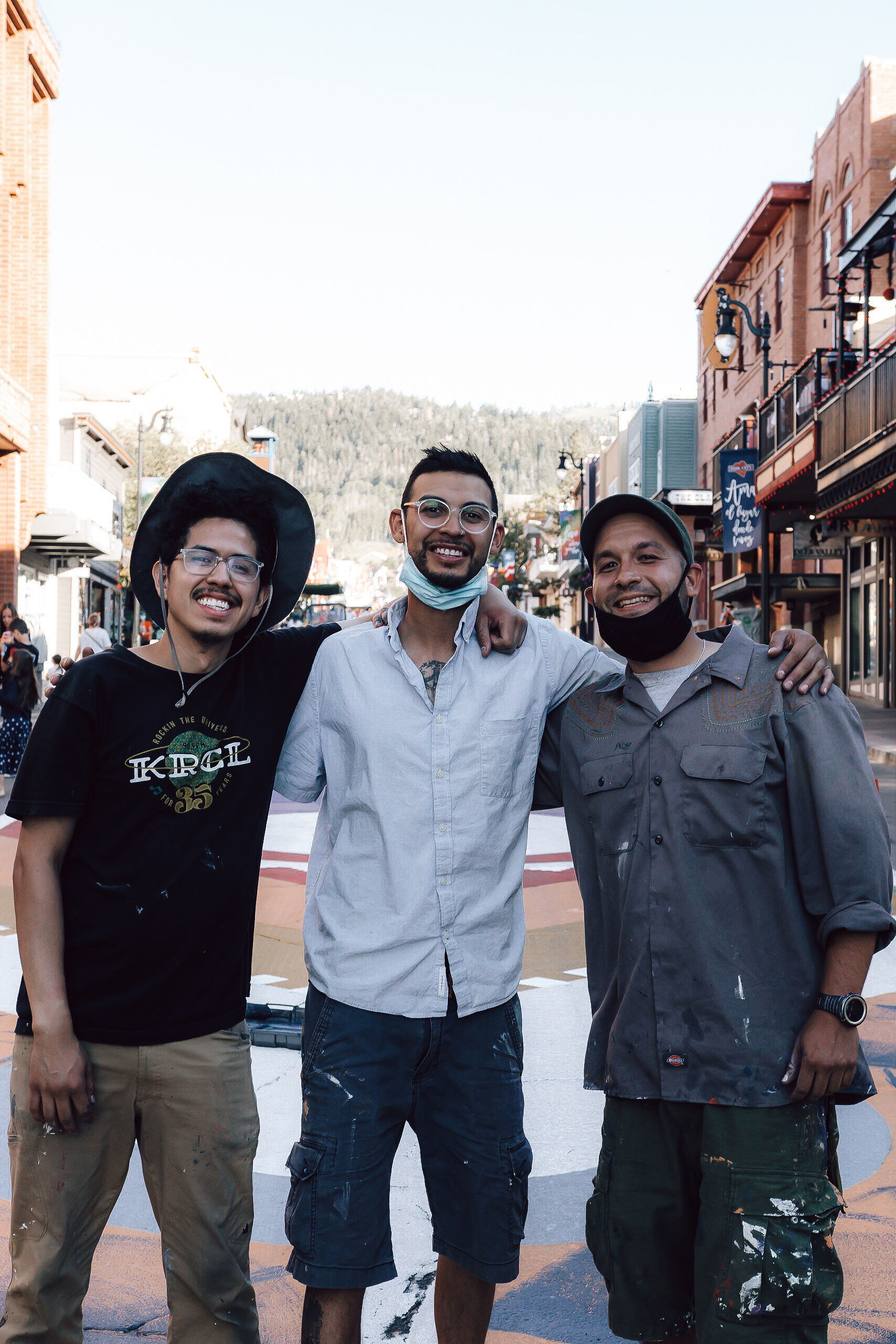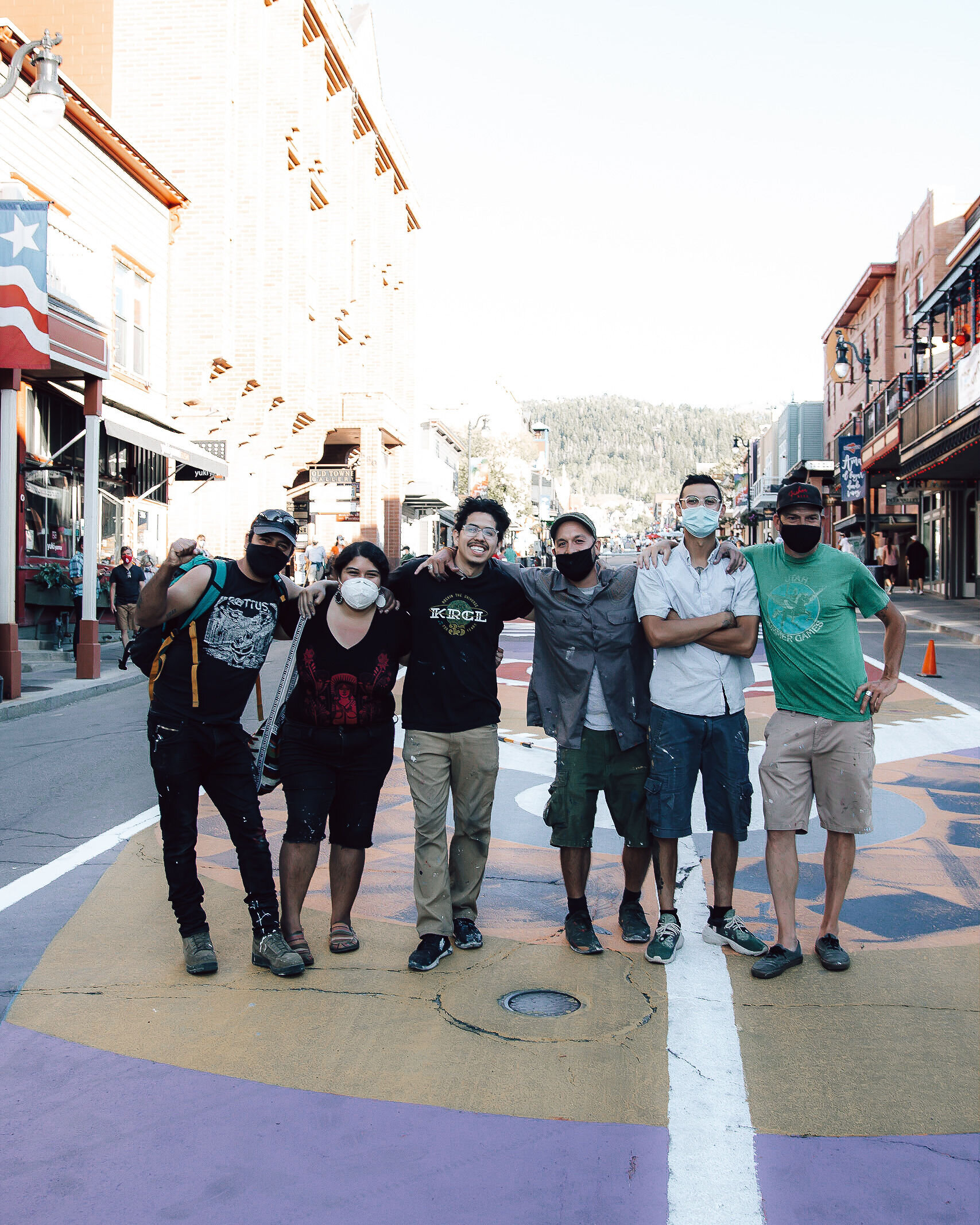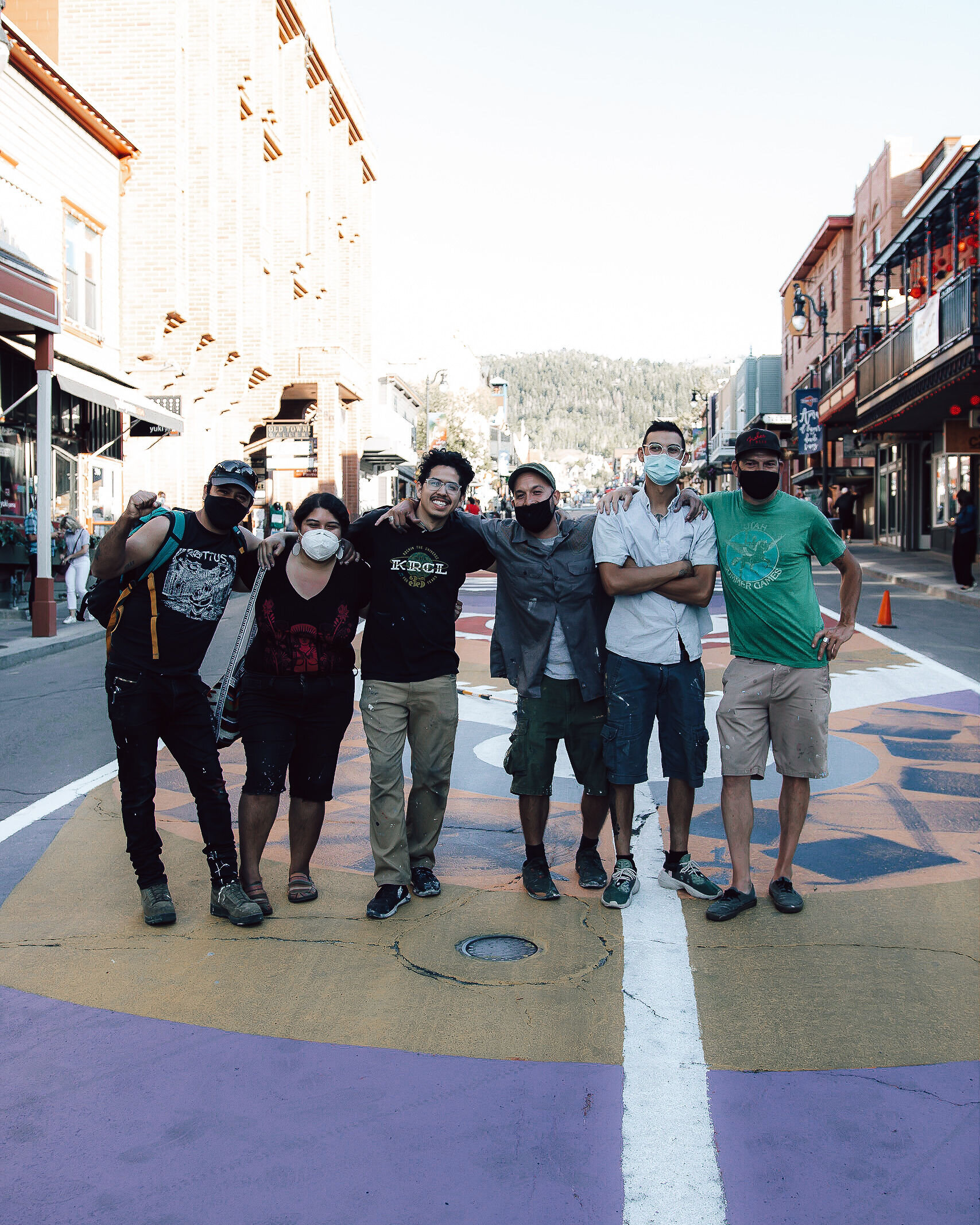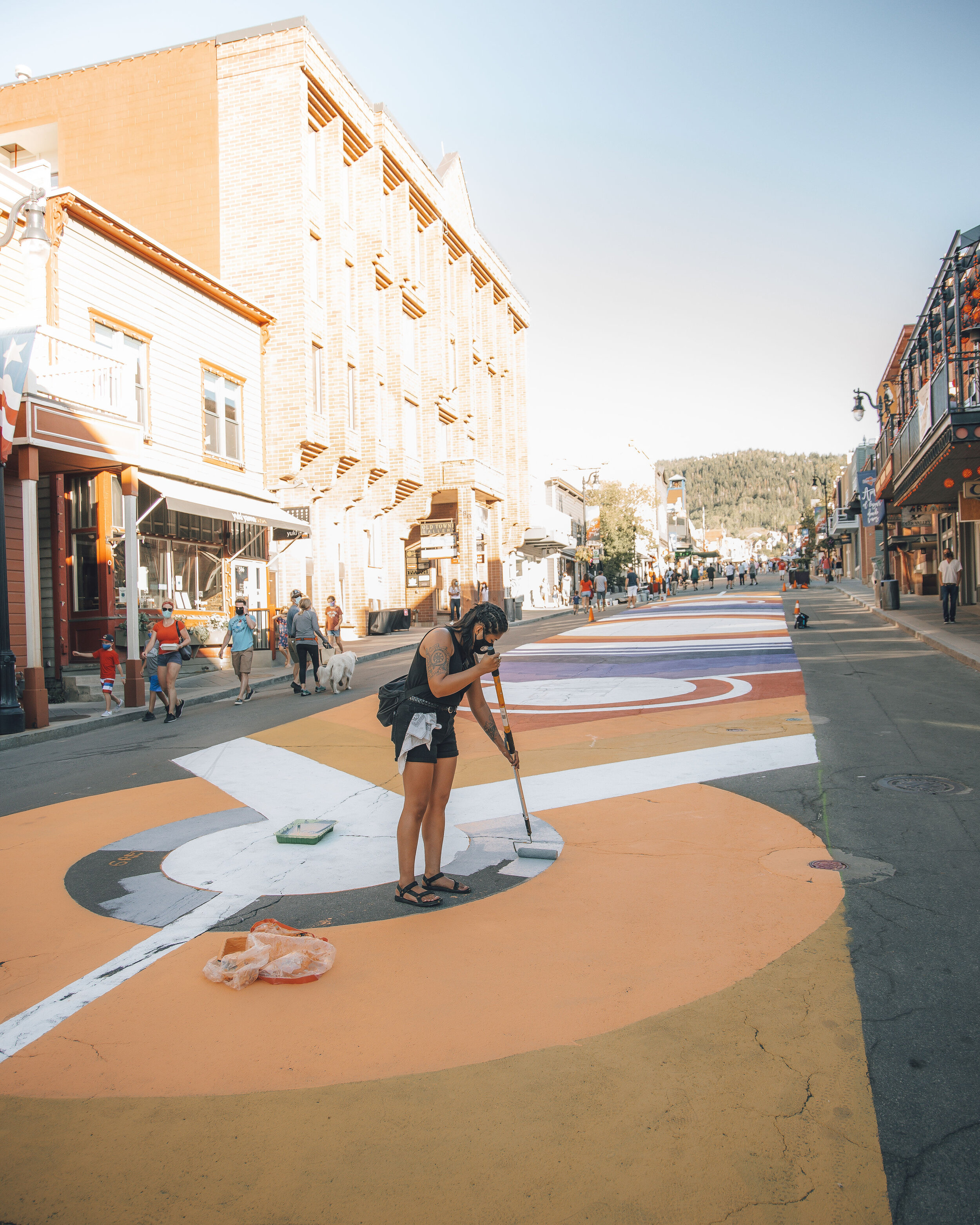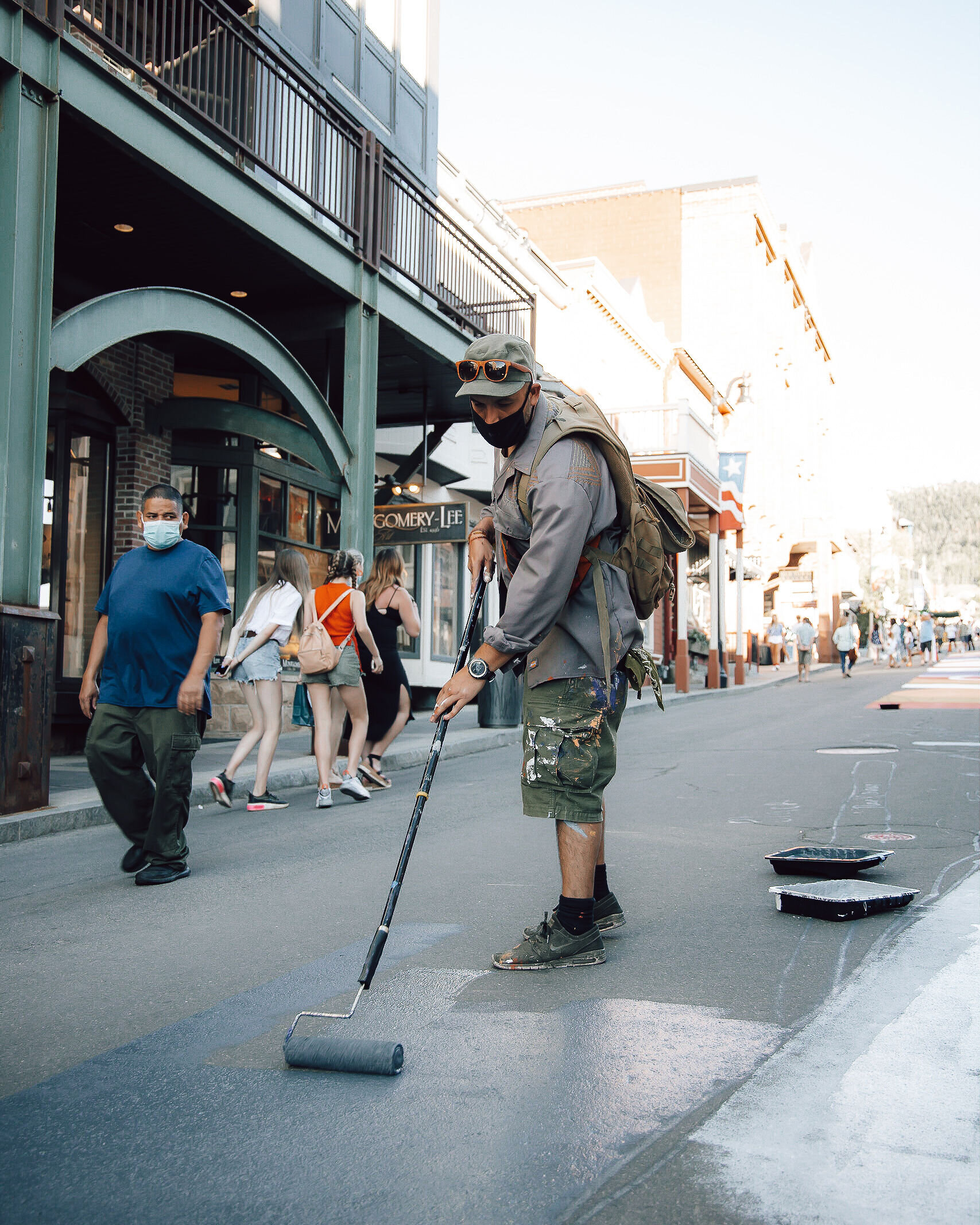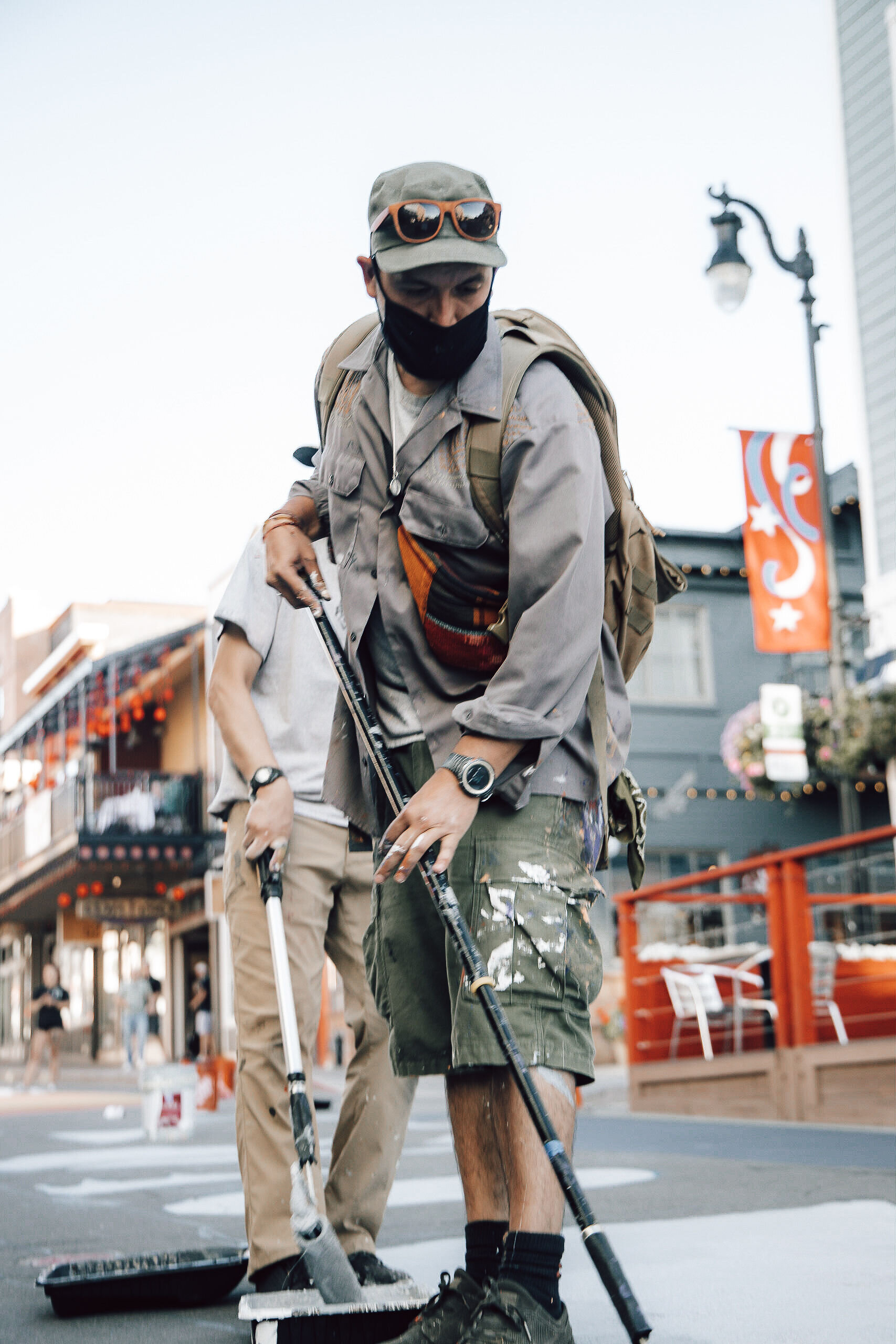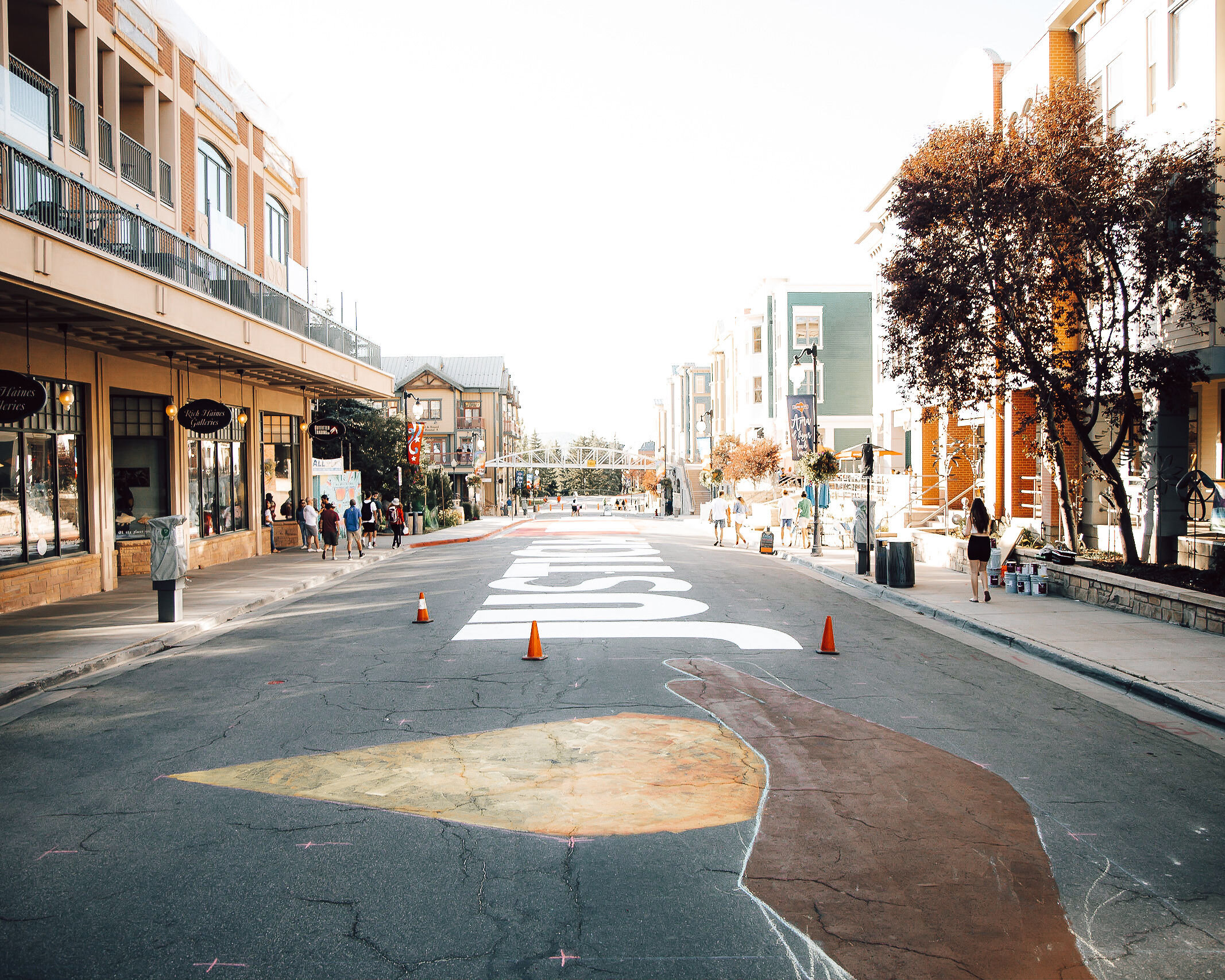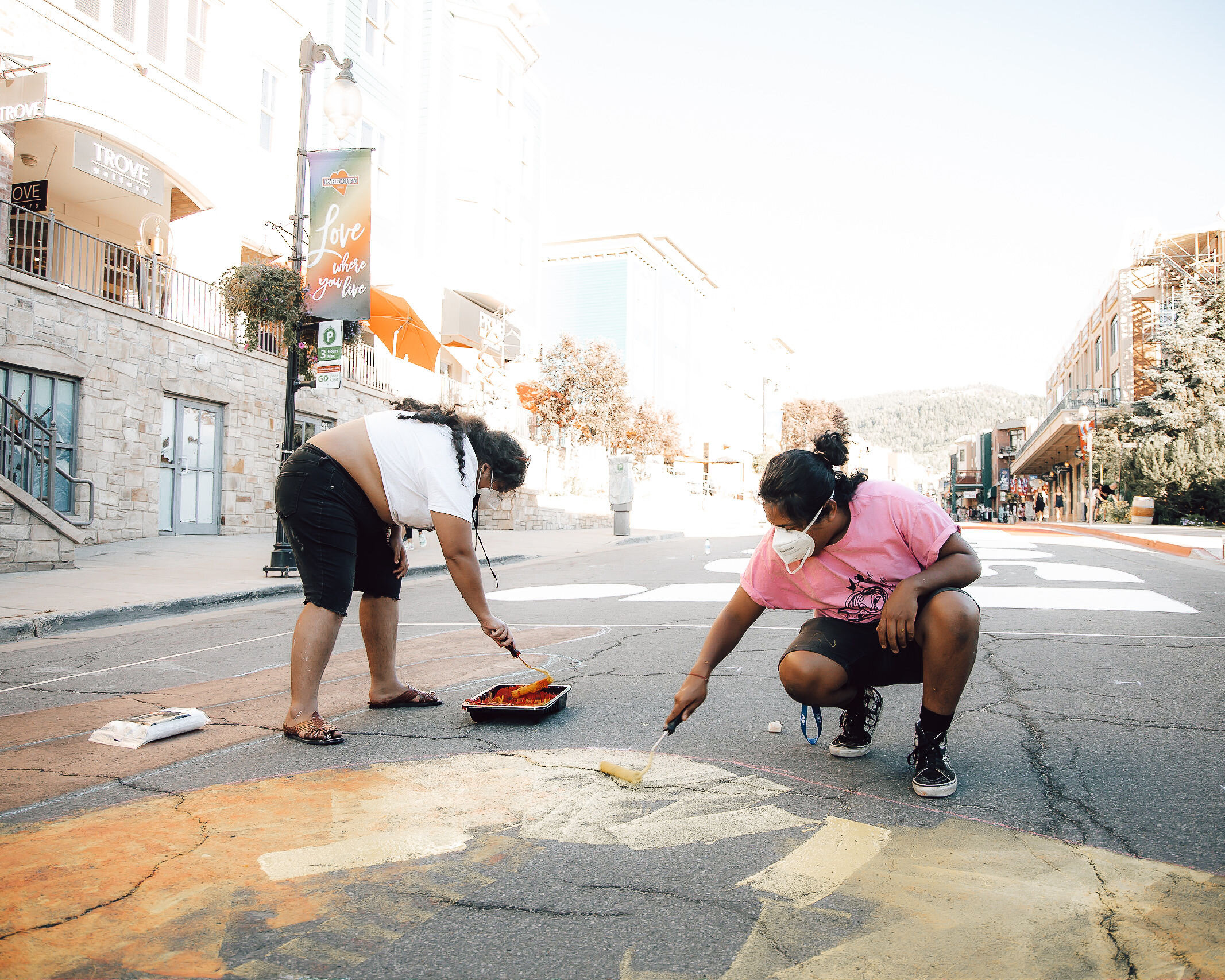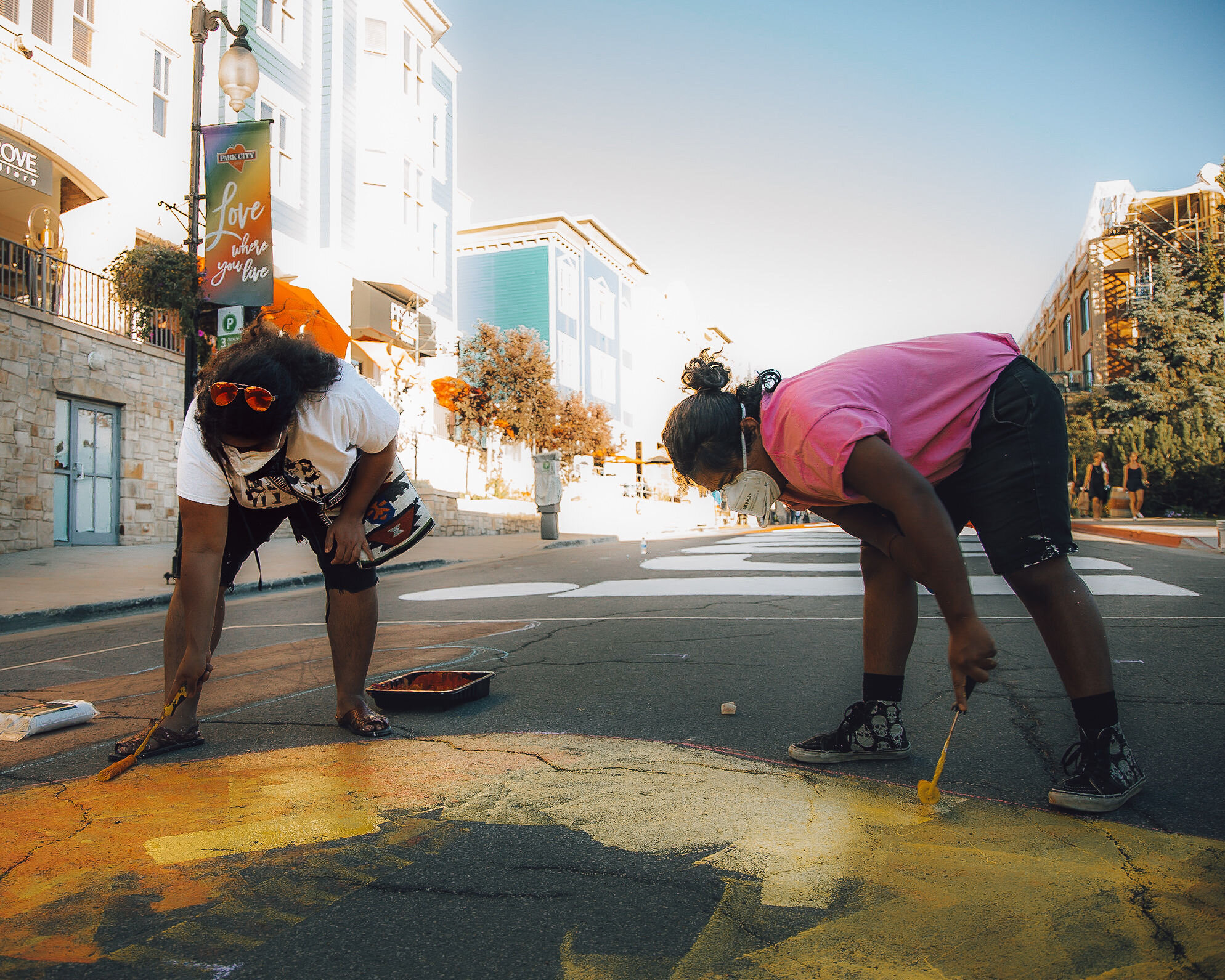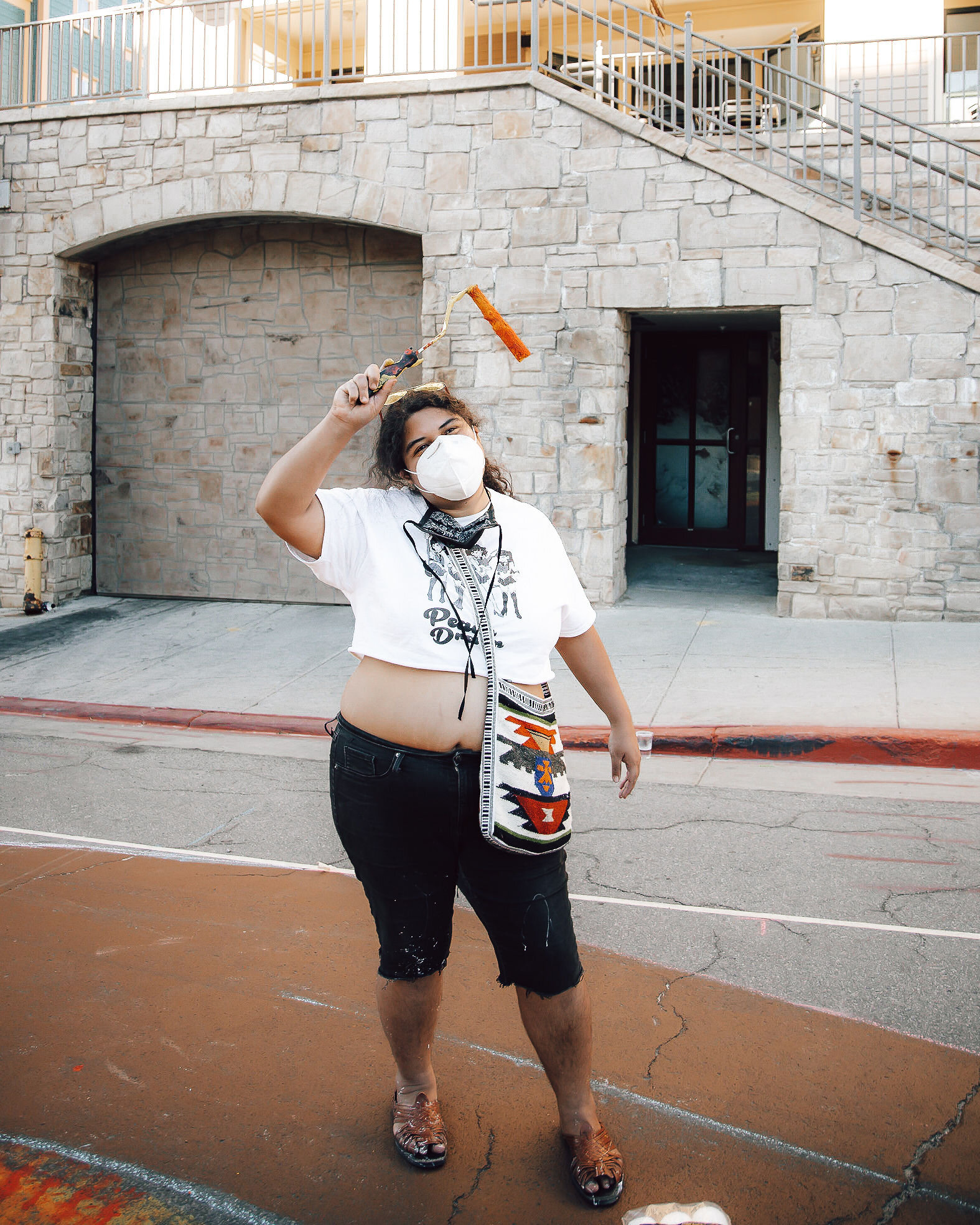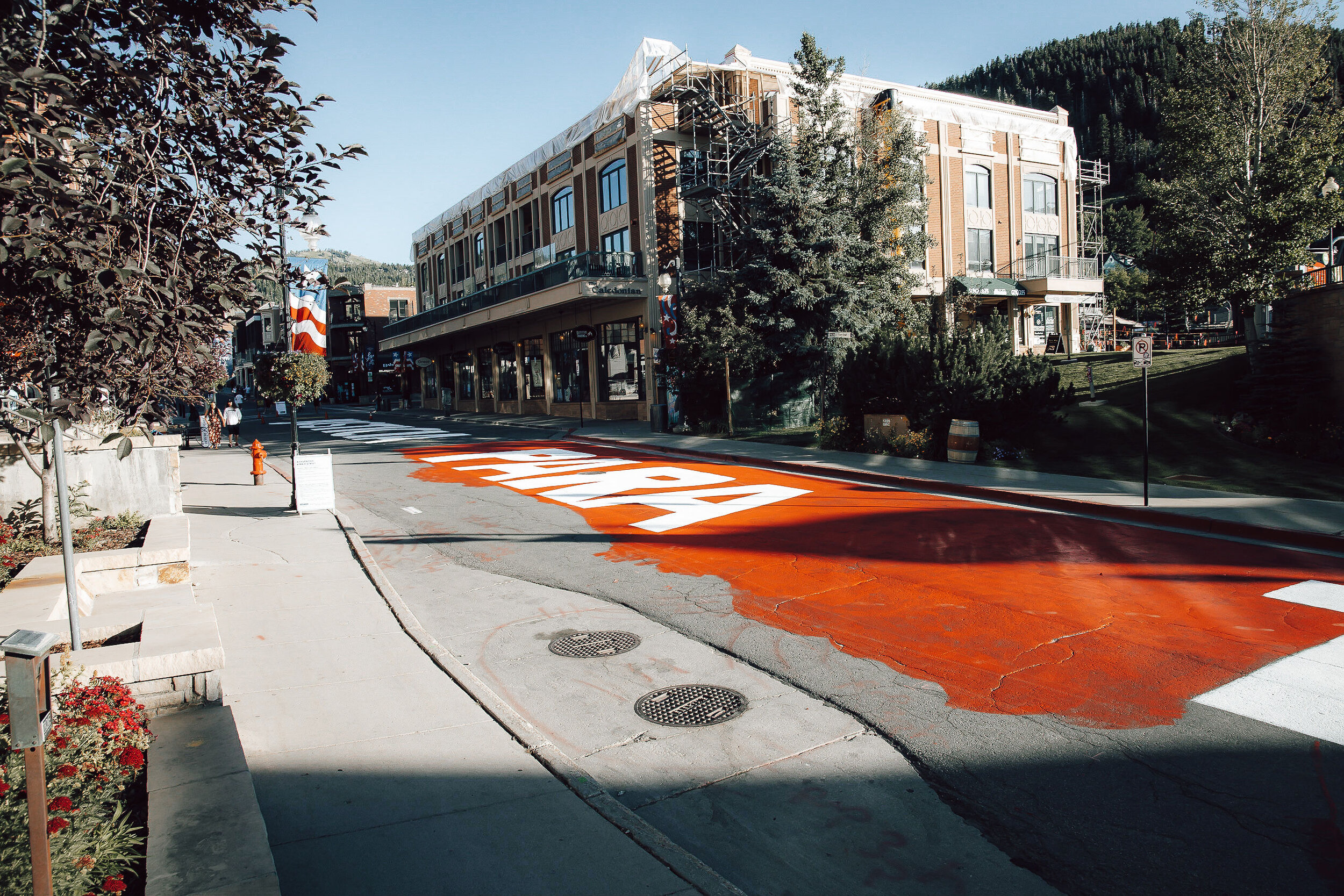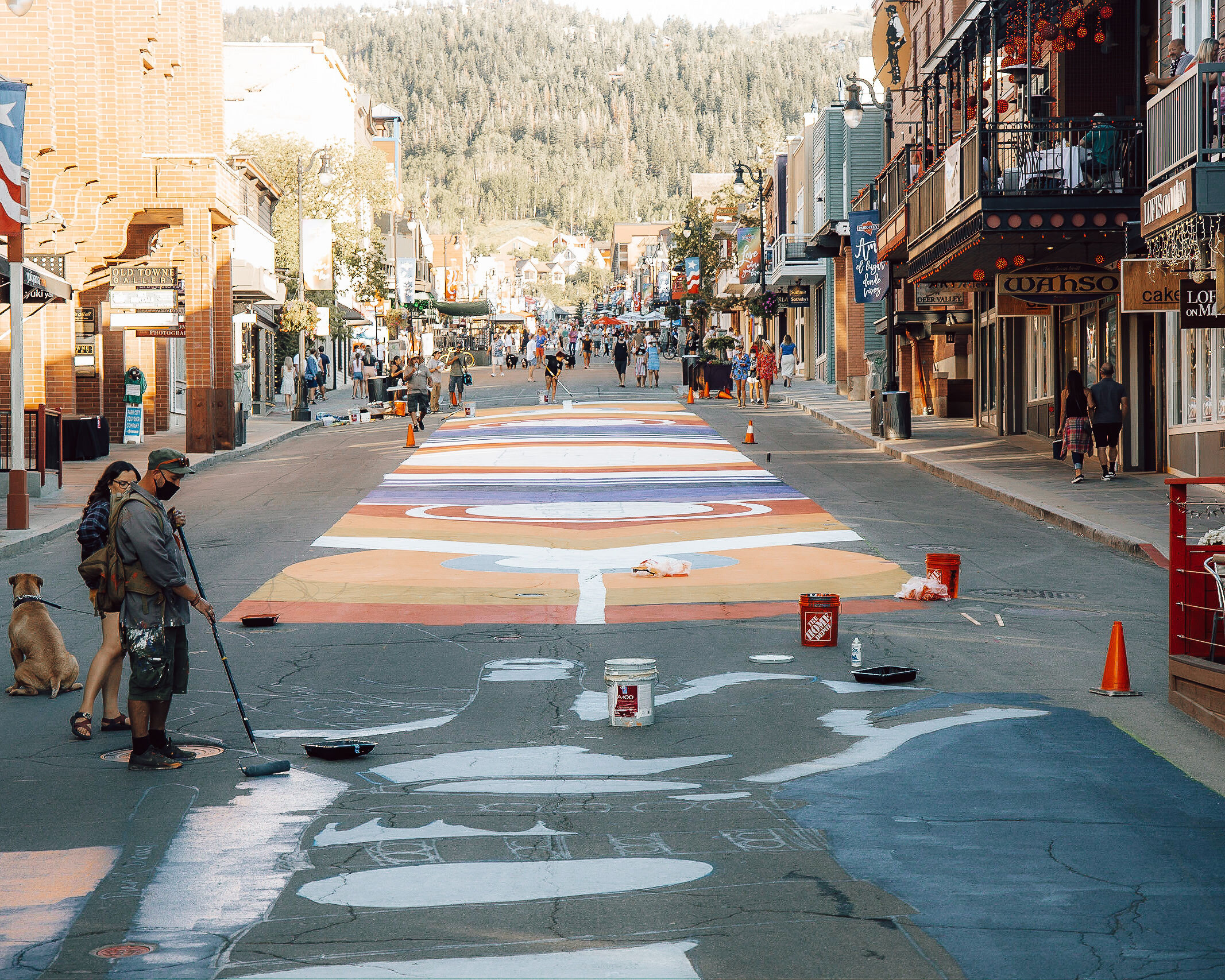Photographer Justin Lagman’s Deep Dive with Artists of the Park City Racial Equity Murals
Photographer Justin Lagman was hired to capture the artistic process of Park City’s Racial Equity Murals that were painted over the July 4th weekend. In addition to shooting photography, he also had the opportunity to interview each artist, asking them about their background, the stories behind their murals, and why art matters to them. Here is more from Justin:
The 4th of July in Park City usually means fireworks, and a parade on historic Main Street filled with people dressed in Red White and Blue. With the holiday activities being cancelled this year due to the impacts of COVID-19, the Arts Council partnered with Park City Municipal to address current issues surrounding racial equity in light of the Black Lives Matter movement and recent nation-wide protests. These organizations partnered on a temporary art mural project on Main Street that celebrates both diversity and the vibrant arts and culture in our community. Four Utah based BIPOC artists were invited to respond with their artistic interpretation of issues surrounding racial equity. They did this by painting each of their own large scale (20x300 feet) murals on Main Street. I got the chance to spend the whole weekend with them, to watch their process and really get to know the artist behind the mural.
The first artist I spoke with is Mariella Mendoza, the artist behind the Justicia Para Todos Mural, here is what she had to say.
Q: What is your mural about? Is there any specific story behind it?
A: Justicia Para Todos is the slogan we chant at the end of the protests in Salt Lake City. We demand justice for Bernardo Palacios-Carbajal, George Floyd, Breonna Taylor, we demand justice for all. Another chant we like to do is “We are family,” because we want the movement to get everyone involved, it’s not a race for who’s the top activist. We are all in this together.
The roses represent Bernardo’s favorite flower. The painting is flooded by red paint to recreate the painting that is at the District Attorney’s office in Salt Lake City. We’ve been very intentional with this piece and had some local activists and a couple members of Justice for Bernardo come out and help.
Q: How do you think these murals will impact those who see them?
A: We’ve had a couple people argue with us and people upset with not having a 4th of july parade and instead having this. There was definitely some negative backlash.
Q: Do you think you’ve received more love compared to hate this weekend?
A: To me if you’re a person of the color living in Utah, you should already know that’s part of your life. For me that’s not going to stop us from creating and having joy and that’s not going to stop us from resisting. The people that like it will like it and the people that don't like it, won’t like it. For the people on the fence I would say that’s our target.
Q: How do you use art to tell a story?
A: I’m still trying to find my comfort with the term “artist” but I do think I have a platform. I’ve always been drawing and my first day at an activist meeting and I said “ Hi I like to draw and I can make a flyer.” Some of these guys painted on the ground, for example Bernardo was a graffiti artist so we wanted to make that connection.
Next, I spoke with Bill Louis, the artist behind the Solidarity mural.
Q: Can you tell us about the mural and the story behind it?
A: Standing in solidarity meaning unity, equality and opportunity for everyone. As a minority it’s something extremely meaningful to me and for my kids. We want to be treated equally and fairly. We want people to embrace our diversity and have the same opportunities in America. Both sides of the mural is a silhouette of African American male and female, representing the Black Lives Matter Movement. The colors around the faces and the word of solidarity represent all nationalities and diversity.
Q: How do you use art to tell a story?
A: I love art because it can contextualize something in a visualized aspect. Everything in my art there’s a meaning behind it and there’s a root to it. A couple things it stems from is my background culturally and my background as a street artist.
Q: Do you feel like you’ve always been a minority in the things you’ve delved into?
A: I remember when street art was very frowned upon and we had a bad reputation. But it’s definitely changed and I feel like it’s more accepted now. The pioneers of this craft were considered rebels and law breakers. But now it’s kind of switched and people can’t even afford them nowadays.
Q: With 2020 being a very difficult year, what results would you like to see at the end of this year?
A: 2020 has been like Jumanji in real life and we’re living in it. It’s a test right? It’s a test for human beings to see how we can act with each other. A lot of people are tired of being oppressed and some people are still stuck in their bubble and they don’t want change.
Q: Do you think some people are getting too comfortable?
A: There’s no progression in comfort, so if you just sit and become stagnant you will never progress. If that’s the way you would like to live then so be it. That is your freedom. For a lot of people they would like to progress and move forward.
Q: What would you like to say to your White Allies?
A: I’m grateful for my White friends that hear me. They see it, they understand, and they’re just there to listen. Listening is a huge thing, they’ll say they won’t fully understand how it is to be a minority in this country. They want to say something and stand up for us. I’m thankful for them for taking a stand and locking arms with us.
Then came Aljay Fuimaono, the artist who did the Black Lives Matter Mural
Q: Tell us about your mural and the story behind it?
A: I mean it’s everywhere in the media. Me being a person of color, I’ve seen it and dealt with all of it. In Utah and in Hawaii this was normal. I think for Park City to have this is pretty cool. All of the images inside the letters are all images of peace. The rose represents what they bring when someone passes away, and a lot of mothers have lost their sons. The dove represents peace. The two hands shaking stands for unity.
Q: Do you think this will impact this town?
A: I think it’ll make things a little different in a good way. It’s an old town. A lady that owns the gallery right in front of my mural came up to me and said “we’ve definitely been in a bubble, we’re not protesting but I think this is the perfect way to do it.” Some people don't know how to be a part of the movement, so for them to have this on their doorstep, it’s a way for them to protest.
Q: Why does art matter to you?
A: Art is a lot more powerful than words. People can look at one art piece and they will all feel it in 10 different ways. It hits everybody differently.
Finally I spoke with Miguel and Miriam of the Roots Art Kollective about their Peace, Love, Unity Mural
Q: Tell us about the mural and all the colors and the process for this piece.
Miguel: The way we work is putting together our own different styles. For me I’m really big into pattern work, stenciling, using a lot of motifs. Luis with the calligraphy and Alan with the photo realistic style of painting. The colors are inspired by Southern Utah. We wanted to play with this idea of warm and cool tones to symbolize balance. Same goes for the hands on both sides. One is black and the other is white. The hands are pulling on this fabric to show Peace, Love and Unity.
Q: How do you think this will impact the people that see this?
Miguel: There’s a lot of people up here that have power and if they change their mentality that’s going to help.
Miriam: I think the message is important to the people who are resisting this change and refusing to see the movement. The fact that we’re getting a rise out of people and expressing negativity—I think it says more about them.
Q: Why does art matter to you?
Miriam: For me it’s the way I like to express myself and spend my time.
*During this moment a man offered his help to paint, so he grabbed a roller and painted with everyone.*
I want to take a moment and see this. This is it. People appreciate our art and whenever people are inspired by my art. I hope for them to take it and create their own thing.
This weekend and the conversations I had with all these amazing individuals was very special to me. I feel so grateful to have worked with and gotten to know these incredible artists and people. I suggest that everyone take the time to visit the temporary Racial Equity Murals on Main Street and not only appreciate the art, but let this art foster conversation between you and your neighbor, let is foster understanding too. Let’s value our differences and embrace our common humanity.
About the Photographer:
Justin Lagman is a 24 year old content creator based in Park City, Utah. When he’s not creating he’s hiking, swimming, traveling, and snowboarding. Justin’s life revolves around art and creating. He’s been a dancer and choreographer for over six years. Through dance, he also found a passion for film and photography. His style focuses on capturing people doing what they love to do and live for. Follow him on Facebook here and Instagram here.

